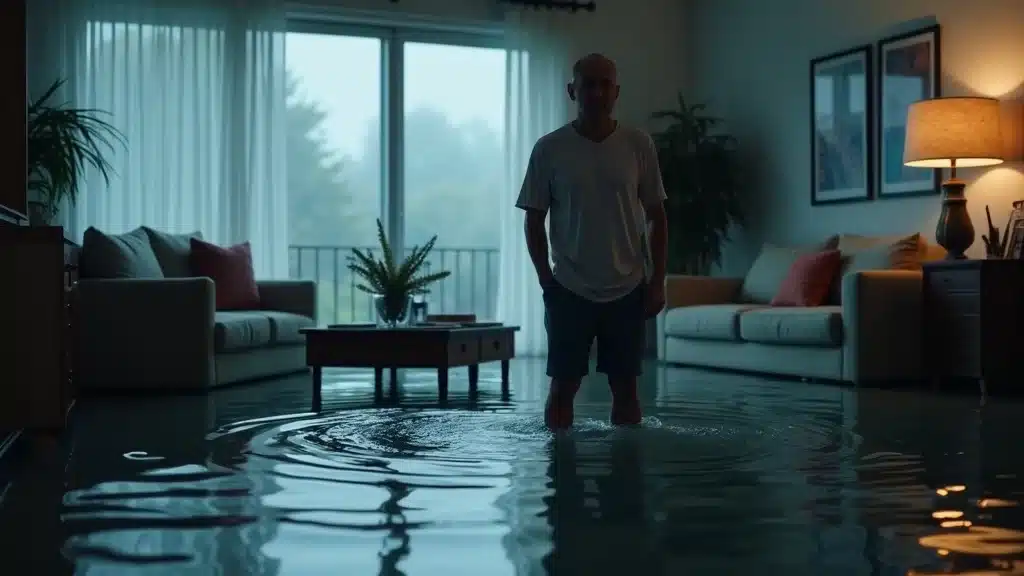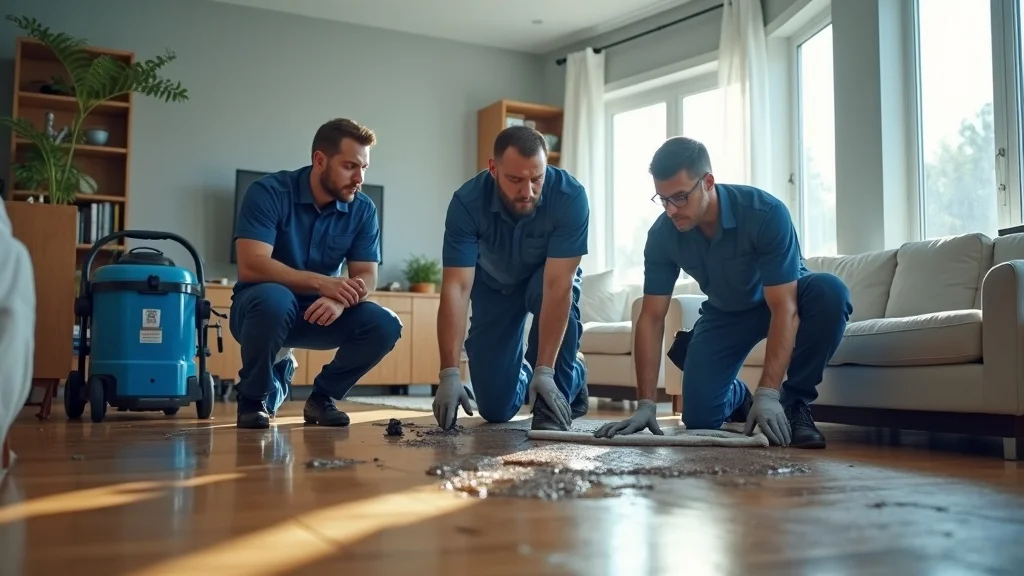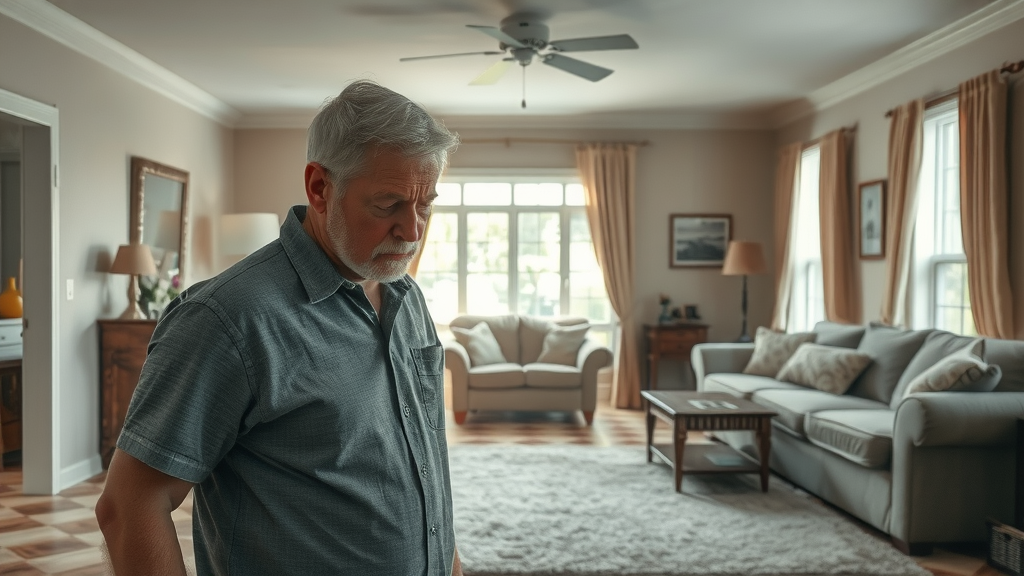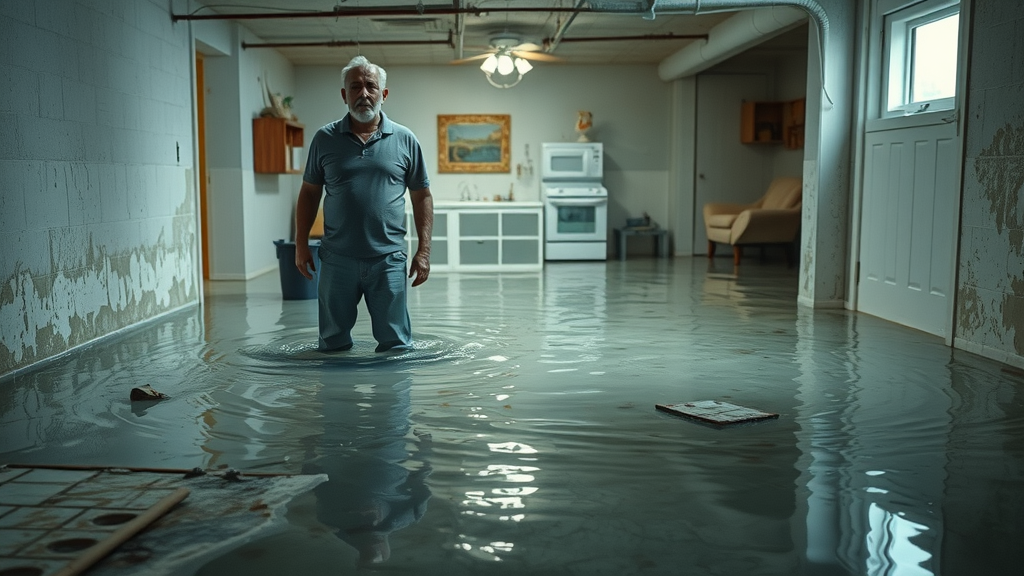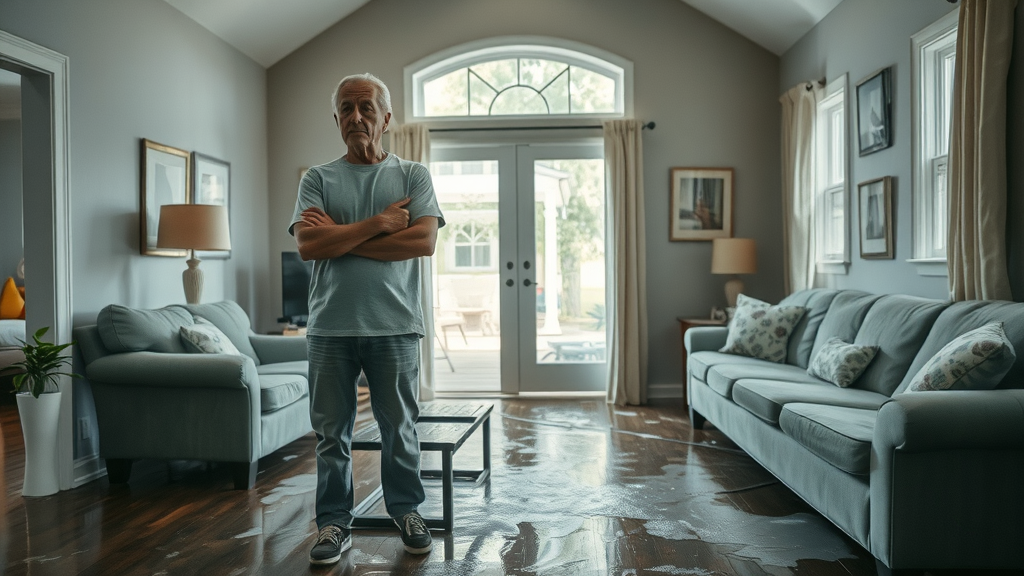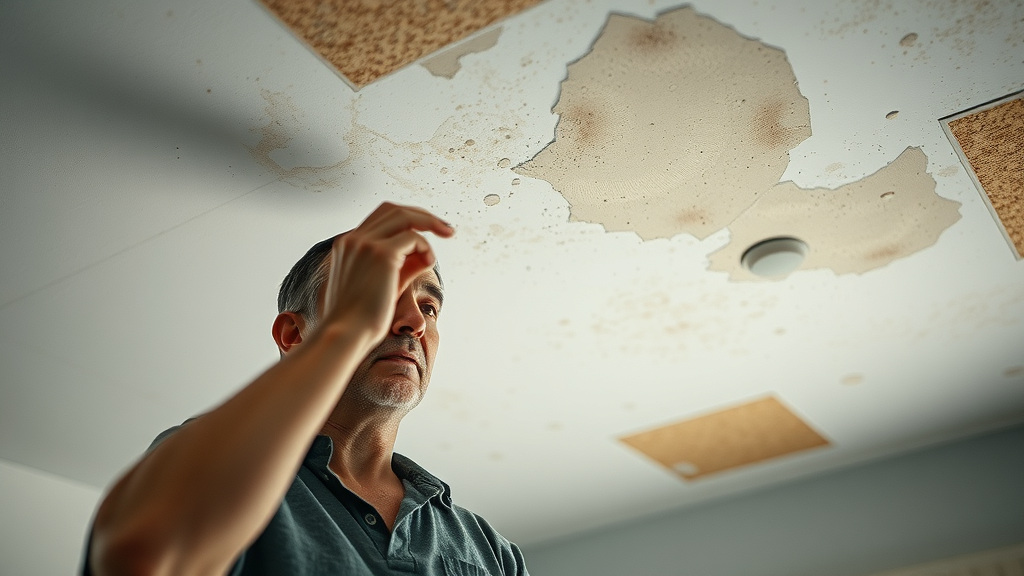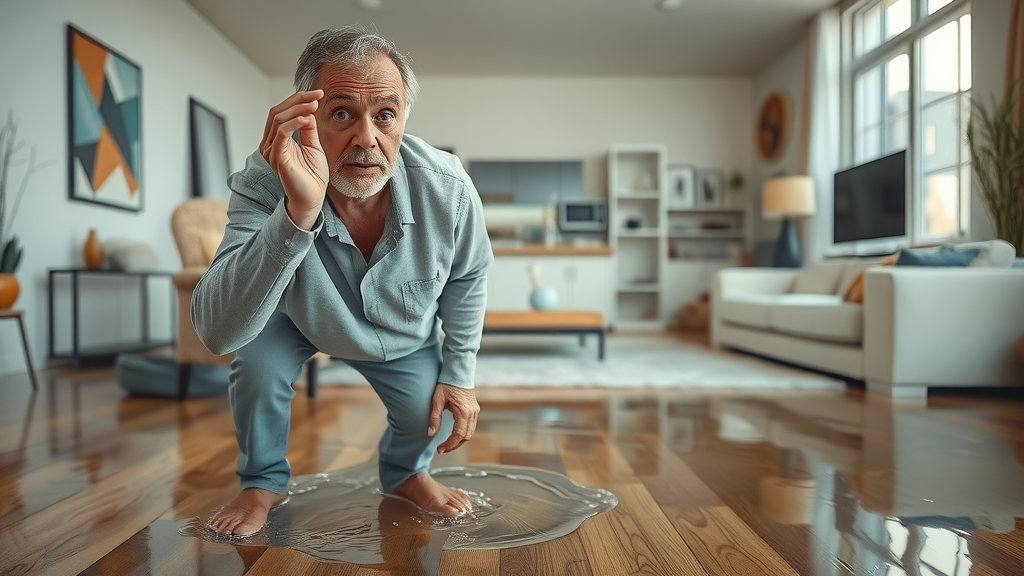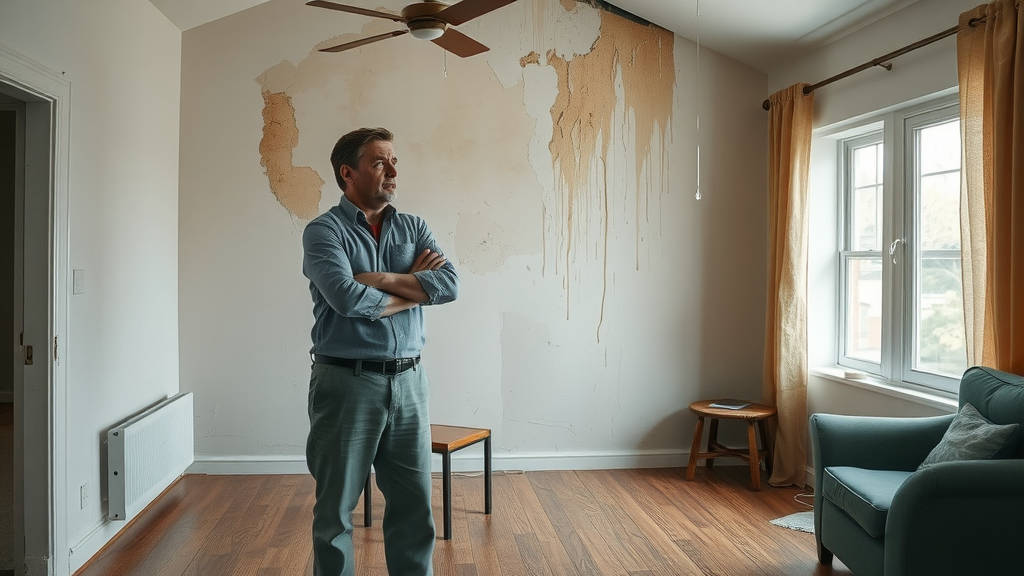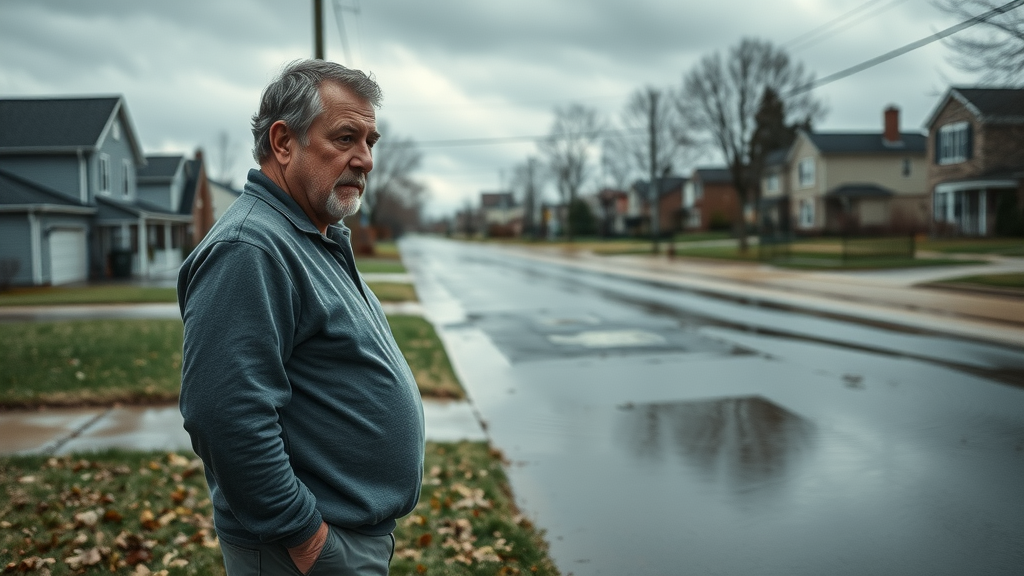Water Damage And Mold News
Water Damage Restoration Secrets Every Homeowner Must Know in Columbia SC
Did you know that 14,000 people experience water damage emergencies at home or work each day in the U.S.? If you’re a homeowner in Columbia SC, this sobering fact could become your reality when you least expect it. Water damage strikes fast—and its effects can devastate your home, health, and finances if you’re not prepared. But here’s the good news: mastering a few professional water damage restoration secrets can help you react swiftly, minimize losses, and secure a safe, beautiful home once again. Read on to discover game-changing insights, honest cost breakdowns, and expert strategies tailored for Columbia homeowners ready to avoid disaster—and make smart restoration decisions.
Startling Water Damage Restoration Statistics Every Homeowner Should Know
“Did you know that 14,000 people experience water damage emergencies at home or work each day in the U.S.?”
Water damage is one of the most common and costly disasters affecting homeowners across the country, and Columbia SC is no exception. According to industry reports, nearly one in every fifty insured homes files a water damage or freeze claim each year. What’s shocking is how quickly the damage caused can multiply—the longer water sits, the higher the risk of mold growth, ruined infrastructure, and skyrocketing restoration costs. Statistics reveal that almost 98% of basements in the U.S. will experience some type of water damage during their lifetime. These harsh realities highlight why understanding the restoration process and partnering with a reliable restoration pro is critical for every homeowner.
The average water damage claim is more than $10,000, with potential insurance coverage gaps leading to even higher out-of-pocket costs. From burst pipe emergencies to unexpected storm flooding, Columbia homeowners need to know that time is essential. Immediate action and access to professional water damage restoration services can mean the difference between minor repairs and total home renovation. Knowledge is your first line of defense—read on to learn how you can protect your investment and peace of mind.
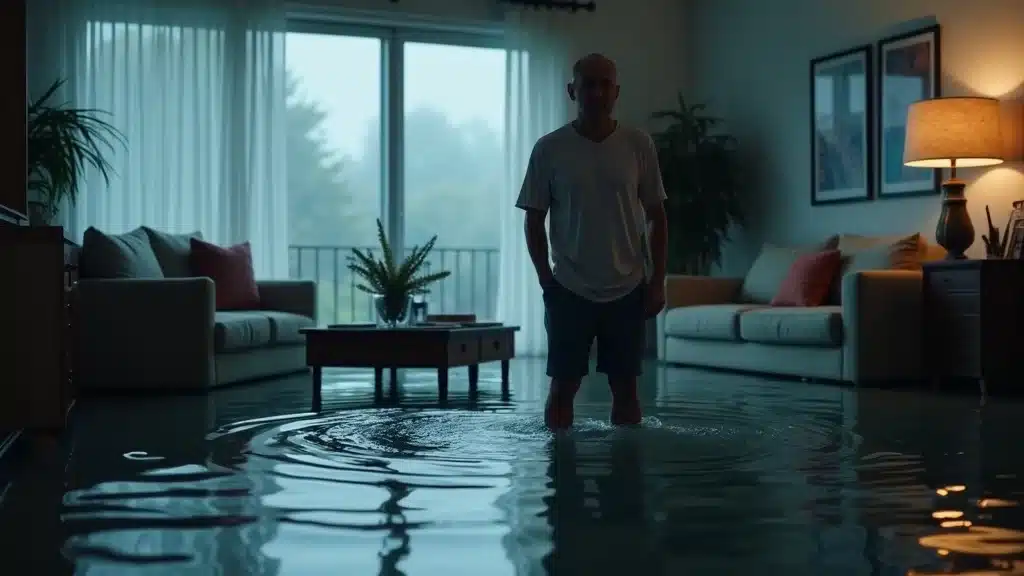
What You’ll Learn about Water Damage Restoration in Columbia SC
- Understand the signs of water damage early
- Master the restoration process
- Compare restoration cost factors
- Identify reliable restoration services in Columbia SC
- Learn real water damage restoration secrets that save time and money
By the end of this article, you’ll feel confident navigating a water damage crisis, armed with insider knowledge and actionable steps to safeguard your Columbia SC home. You’ll also discover how to select the right restoration pro and what the entire restoration process truly looks like when done right.
Understanding Water Damage Restoration: Why Fast Action is Critical
Every minute counts when water damage strikes your home in Columbia SC. Whether it’s standing water from a burst pipe, seepage from slow leaks, or flooding during a South Carolina storm, immediate action determines your home’s fate. Rapidly addressing water damage restoration limits structural damage, reduces restoration costs, and prevents mold growth—one of the most dangerous and costly side effects.
Water damage can be deceptive. While some signs of water damage are clearly visible—like standing water or bubbling paint—others, such as increasing moisture levels or musty odors, may go unnoticed until significant damage occurs. As the minutes tick by, water seeps into walls, floors, and household possessions, leading to hidden damage that can spread mold spores and even compromise your home’s structural integrity. Professional restoration services use advanced monitoring equipment, moisture sensors, and proven methods to assess the affected area and initiate prompt water cleanup, preventing further losses and ensuring a successful restoration outcome.
For homeowners who want a deeper understanding of the initial steps, exploring how professional water extraction services operate in Columbia SC can provide valuable insight into the critical role of rapid water removal in minimizing damage.
What Is Water Damage Restoration and How Does It Work?
Water damage restoration is a specialized process aimed at returning your home to its pre-damage state, following water intrusions from plumbing mishaps, storms, or appliance leaks. The restoration process involves a restoration professional assessing the extent of the affected area, identifying the source of water, and developing a targeted plan for immediate water extraction, drying, dehumidification, and repair. In Columbia SC, restoration pro teams are equipped to handle everything from minor leaks to catastrophic flooding with efficiency and expertise.
Once immediate water cleanup is underway, professionals focus on drying to prevent mold growth—a critical step that often requires industrial-grade dehumidifiers and air movers. Restoration professionals are also trained to address hidden moisture in subfloors, drywall, and insulation to avert long-term complications. Finally, damage restoration involves repairing or replacing drywall, flooring, cabinetry, and sometimes even structural elements. By sticking to a proven process and acting quickly, you can minimize restoration costs and restore your property much faster.
The difference between average and expert water damage restoration? A true damage restoration pro uses advanced monitoring and documentation systems—not just for insurance purposes, but to ensure every inch of your home is safe, dry, and mold-free by the time the restoration service is complete.
The Restoration Process: Step-by-Step Breakdown
- Initial assessment of affected area after water intrusion
- Water cleanup and extraction
- Drying and dehumidification
- Damage restoration and repairs
Let’s dive into each step:
1. Initial Assessment: Immediately after a water incident, a restoration professional conducts a thorough inspection of the affected area. They identify the source of moisture—be it a burst pipe, roof leak, or appliance malfunction—and evaluate how far the water has spread.
2. Water Cleanup and Extraction: Using high-powered vacuums and pumps, standing water is quickly removed. Swift water extraction prevents further property damage and mitigates the risk of mold growth.
3. Drying and Dehumidification: After water cleanup, advanced dehumidifiers and air movers dry out underlying materials that retain moisture, such as floors, walls, and structural framing.
4. Damage Restoration and Repairs: Finally, professionals repair or replace damaged drywall, insulation, subflooring, and any unsalvageable items. This critical stage ensures your home regains its previous quality and safety.
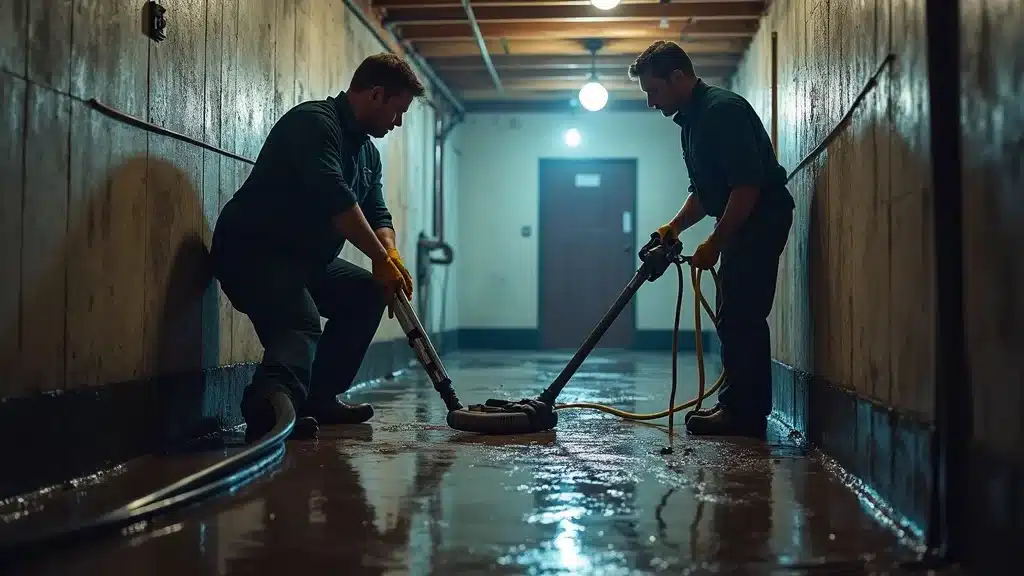
Water Damage Restoration vs. Fire Damage Restoration
While both water and fire damage can devastate a home, their restoration processes are distinct. Water damage restoration focuses on moisture removal, preventing mold, and repairing water-caused structural and electrical damage. In contrast, fire damage restoration must address soot, smoke, intense heat, and toxic residues—often requiring specialized equipment and thorough cleaning before structural repairs begin. Both emergencies require prompt response, but water typically necessitates faster action to prevent mold and further water clean spread. Experienced restoration services in Columbia SC are equipped to handle both types, but water restoration teams emphasize aggressive drying and moisture control as their top priority.
No matter the type of disaster, having a trusted restoration pro on speed dial puts you miles ahead in protecting your home and ensuring a complete, safe recovery—without hidden costs or future headaches.
Signs of Water Damage: How to Detect Issues Early in Your Home
Common Signs of Water Damage and What They Mean
- Standing water in unusual places
- Wall discoloration or bubbling paint
- Musty odors
- Unexplained spikes in water bills
- Sagging floors or ceilings
Detecting water problems early is your best defense against major restoration costs. Classic signs of water damage include standing water in rooms that should never be wet, sudden discoloration or bubbling on ceilings and walls, or strange musty smells that signal hidden mold. Even an unexplained increase in your water bill can be a telltale indicator that water is leaking somewhere behind the scenes. Sagging floors or drooping ceilings typically mean moisture has penetrated deep into household structures, requiring immediate intervention from a water damage restoration pro.
Early action is crucial. If you notice any of these signs of water damage in your home, call a restoration professional right away. The longer water sits, the more expensive—and extensive—the repairs become. Don’t wait for standing water to submerge your property: learning to recognize small hints now prevents disaster later.
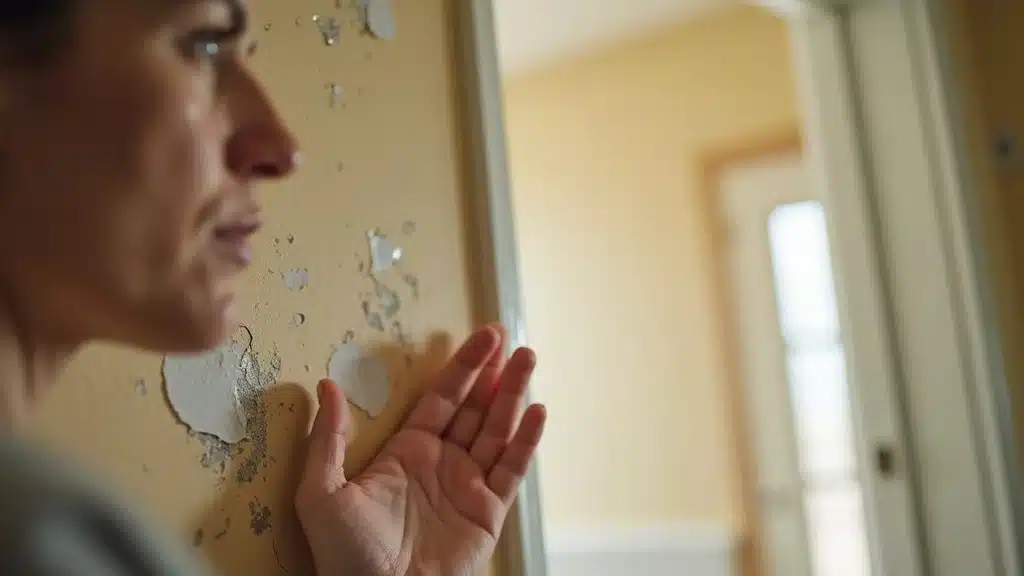
“The sooner homeowners recognize the signs of water damage, the faster the restoration process can begin and losses minimized.”
Burst Pipe, Roof Leak, or Flood: Identifying the Source
Identifying where the water comes from—the source—is the first step for every restoration service. A burst pipe often leaves clear signs, such as rapid flooding or a distinct wet patch in walls or the ceiling directly below. Roof leaks, on the other hand, usually start small and gradually stain ceilings or wall corners, especially after heavy Columbia rainstorms. Floods from storms or overflowing rivers leave a trail of standing water and debris, sometimes contaminating indoor air and surfaces.
A skilled water damage restoration pro will use moisture meters, infrared cameras, and visual assessments to pinpoint the damage area accurately and safely shut down the source. Addressing the root of the issue—not just the visible symptoms—ensures you avoid repeat headaches and higher long-term restoration costs. Don’t ignore even a minor sign of water: fast evaluation is the secret to minimal damage restoration and lower overall expense.
The Water Damage Restoration Process: From Assessment to Completion
Damage Restoration Pro Techniques for Water Damage Cleanup
When it comes to water cleanup, relying on a restoration professional makes all the difference. The restoration process starts with containment— isolating the damaged area to prevent water from spreading. Next comes comprehensive water extraction using industrial pumps to remove standing water, sometimes even from tough-to-reach crawlspaces. Restoration pros closely monitor moisture levels and structural moisture, ensuring hidden water behind walls or under floors is not overlooked.
After extraction, rapid drying begins. Professional services deploy high-grade air movers and powerful dehumidifiers to dramatically shorten drying time, protecting your home from hidden mold growth. Ensuring thorough dryness is crucial for proper repairs: premature fixes can trap moisture, leading to more damage over time. Restoration pros finish by cleaning and sanitizing, particularly important if gray or black water (from storms or sewage) is involved. Finally, the team documents every stage, providing the evidence your insurance company needs for a smooth claim process.
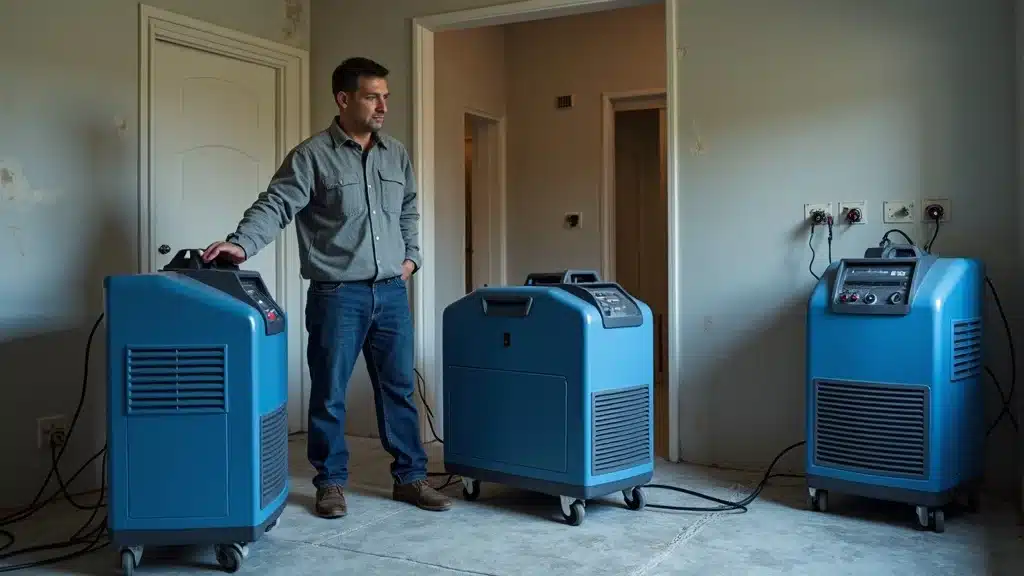
Advanced Equipment Used in Water Damage Restoration
Today’s restoration services use specialized equipment that goes beyond shop vacs and household fans. For efficient water damage restoration, restoration pros employ high-volume water extractors, commercial-grade dehumidifiers, high-velocity air movers, and thermal imaging cameras. These tools detect and dry hidden dampness deep within walls, floors, and insulation—areas often missed by DIYers. Moisture meters pinpoint exactly where water levels are elevated, allowing the restoration professional to target those areas for thorough drying.
Air scrubbers, HEPA vacuums, and antimicrobial treatments are also common, especially when dealing with contaminated water or preventing mold growth. Advanced drying mats can even pull water directly from hardwood floors, saving homeowners from unnecessary and costly replacements. Proper documentation tools—like digital moisture mapping and cloud-based job tracking—keep both the homeowner and insurance company informed every step of the way. This combination of knowledge, technology, and experience ensures a faster, more complete, and less stressful restoration process.
How Restoration Services Handle Contaminated Water Cleanup
Sometimes, the water in your home isn’t just a nuisance—it can be a serious health hazard. Known as gray water (from appliances) or black water (from sewage or floods), these contaminated sources require robust protocols. Restoration pros use protective gear, containment barriers, and specialized disinfectants to safely remove hazardous water and materials. Contaminated items like carpet, drywall, and insulation are typically discarded, while salvageable structural elements receive deep cleaning and antimicrobial treatments.
Homeowners should never attempt to clean contaminated water themselves due to the risk of bacteria, viruses, and other toxins. Restoration professionals not only ensure thorough sanitation but also secure proper documentation for insurance purposes. Fast, expert contaminated water cleanup is vital for both health and successful home restoration.
How Much Does Water Damage Restoration Cost in Columbia SC?
| Type of Damage | Restoration Cost | Typical Restoration Time |
|---|---|---|
| Minor Water Leak (1-2 rooms) | $1,200 – $3,000 | 2 – 4 days |
| Moderate Water Intrusion (multiple rooms, minor repairs) | $3,000 – $7,000 | 3 – 7 days |
| Major Flood / Burst Pipe (whole home, structural damage) | $8,000 – $20,000+ | 1 – 3 weeks |
| Contaminated Water (gray/black, hazardous cleanup) | $5,000 – $15,000+ | 5 days – 2 weeks |
Restoration costs in Columbia SC depend on several variables: the extent of the affected area, the source (clean, gray, or black water), how long the problem was left untreated, and the scope of damage restoration needed. Drying out a small leak may cost less than $2,000, while severe flooding, burst pipes, or contaminated water scenarios can escalate above $15,000 due to demolition and mold remediation. Keep in mind that delays can dramatically increase your restoration cost—the sooner you call a restoration professional, the better your chances of limiting expense.

Comparing Restoration Services: What Affects the Restoration Cost?
- Extent of the affected area
- Type of water (clean, gray, or black)
- Duration before water damage restoration begins
- Scope of restoration process required
- Additional restoration services (mold, structural repairs)
Restoration costs can be confusing, but understanding these factors puts you in control. The extent of the damage is the most obvious: more areas affected means higher costs and longer timelines. The type of water—clean (from supply lines), gray (from appliances), or black (from sewage)—directly affects risk, cleanup protocols, and eventual costs.
Waiting to start the restoration process increases both property damage and restoration expense, as water seeps deeper into building materials and risks hidden mold growth. Some situations need only surface drying, while others may demand complete demolition and reconstruction. Don’t forget to factor in additional restoration services—such as mold remediation, structural repairs, or rebuilding—especially if the home was exposed to standing water for extended periods.
Choosing the Best Water Damage Restoration Services in Columbia SC
Top Qualities of a Trusted Restoration Service
- Certified and insured restoration pro team
- Fast response times
- Expertise with advanced water damage restoration technology
- Transparent restoration cost estimates
- Excellent customer reviews
Not all restoration services are created equal. Start by confirming the restoration pro is fully certified and insured; this ensures industry-standard protocols and full liability protection. Fast response times are critical—choose a local restoration team that can be onsite in hours, not days. Advanced technology (dehumidifiers, moisture meters, HEPA filters) shows the company takes water damage restoration seriously and will deliver the best results.
Demand transparent, written restoration cost estimates before work begins, and check for consistently positive customer reviews in the Columbia area. The best restoration services also offer direct insurance claim assistance, making the process smoother and less stressful. Trust the company that prioritizes communication, up-front costs, and long-term quality.
Why Local Water Damage Restoration Pros Stand Out
Local knowledge is a hidden advantage. Water damage restoration services in Columbia SC understand the regional weather patterns, building codes, and the unique challenges local homes face. Local pros can respond faster, offer tailored advice on preventative measures, and provide references you can actually check.
Locally owned restoration services are also invested in the community—they have a stake in your satisfaction and their standing with other Columbia homeowners. Plus, they’ll often work directly with area insurance companies, smoothing out claims and streamlining the restoration process to get you back to normal faster.
Critical Water Damage Restoration Tips for Homeowners
- Immediately stop the water source (burst pipe, appliance, roof leak)
- Document all damage in your home
- Contact your insurance
- Avoid DIY when mold or contaminated water is involved
- Call a professional restoration service for a rapid assessment
If you encounter water damage, act quickly! Reach the main water shutoff valve to halt a burst pipe or other leak, then document the damage with photos and notes—your insurance company will require this. Contact them right away and avoid moving or attempting DIY cleanup where there’s visible mold or suspect water contamination. Rest assured that the fastest way to minimize restoration costs and health risks is calling in a seasoned restoration pro for immediate evaluation and fast action.

Preventing Future Water Damage: Homeowner Best Practices
- Routine plumbing and roof inspections
- Install water leak detection systems
- Understand signs of water damage early
- Maintain gutter and drainage systems to prevent standing water
Prevention pays off. Schedule regular professional inspections of your plumbing, appliances, and roofing, especially after storms or freeze-thaw cycles common in Columbia. Consider installing smart water detection devices near high-risk zones (water heaters, laundry, under sinks). Learn to recognize subtle signs of water damage—like musty odors or peeling paint—and take action before a small leak becomes a major disaster.
Keep gutters clear and landscape your yard to guide water away from the foundation. Simple steps now can mean major savings—and a safer, healthier home—for years to come.
Water Damage Restoration FAQs for Columbia SC Homeowners
How much does it cost to restore water damage?
The cost for water damage restoration in Columbia SC typically ranges from $1,200 for minor leaks to over $15,000 for major flooding or contaminated water cleanup. Factors include the size of the affected area, type of water (clean, gray, or black), how quickly the restoration process starts, and additional services like mold remediation. Get a custom quote from a certified restoration professional for your situation.
Is water damage restoration worth it?
Absolutely. Professional water damage restoration protects your property, prevents dangerous mold growth, and helps avoid costly structural repairs down the line. Skipping or delaying restoration often leads to much higher costs, ongoing health risks, and lower home value. Invest in quality restoration services for real peace of mind.
Can water damage be repaired?
Yes—most water damage can be fully repaired with the right restoration process. Restoration professionals use high-tech drying, repair, and rebuilding techniques that restore even seriously damaged homes. Early intervention by a restoration pro increases the odds of saving structural elements and valuable possessions.
What is the difference between remediation and restoration?
Remediation targets the removal of specific contaminants, like mold or toxins, preventing further health or environmental risks. Restoration, on the other hand, focuses on returning your home to its pre-damage condition—including drying, cleaning, repairing, and replacing materials. Water damage restoration pros often provide both services as part of a comprehensive solution.
Key Takeaways for Water Damage Restoration in Columbia SC
- Early detection limits costs and damage
- Partner with certified water damage restoration pros for best outcomes
- Consider comprehensive restoration services that include mold remediation
Connect With Water Damage Experts in Columbia SC
When water strikes, seconds count. Don’t leave your home’s safety and value to chance. Contact certified water damage restoration pros now to get a fast, free assessment and clear, honest restoration cost estimates customized for your Columbia SC property.
Get Help From Water Damage Experts in Columbia
If you’re interested in taking your home protection to the next level, consider exploring the broader landscape of property care in Columbia. Our Columbia SC homeowner resource hub offers a wealth of guidance on mold prevention, air quality, and advanced restoration strategies. By staying informed and proactive, you’ll be better equipped to handle not just water emergencies, but any challenge your home may face. Dive deeper into expert tips and local insights to keep your property safe, healthy, and resilient for years to come.
Sources
- Insurance Information Institute – https://www.iii.org/article/preventing-and-thawing-frozen-pipes
- EPA – https://www.epa.gov/mold/brief-guide-mold-moisture-and-your-home
- Palmetto Mold Experts – https://palmettomoldexperts.com/
- Restoration Industry Association – https://www.restorationindustry.org/
To further deepen your understanding of water damage restoration in Columbia, SC, be sure to explore Columbia SC Mold Removal – Palmetto Mold Experts, which provides expert advice on identifying and addressing mold risks that commonly follow water damage incidents. Additionally, the Palmetto Mold Experts YouTube Channel features educational videos demonstrating real-world restoration and cleanup processes, helping homeowners visualize what to expect during professional interventions. If you’re serious about protecting your home from water emergencies, these resources will give you the practical knowledge and confidence to make informed decisions and ensure thorough recovery.
Find Trusted Water Damage Repair Near Me in Columbia SC—Fast Help!
Did you know water damage restoration emergencies can double in cost every hour a response is delayed? Fast action is crucial for effective damage restoration—waiting just a few hours could lead to skyrocketing repairs, mold growth, and long-term harm to your home and health. Searching for water damage repair near me in Columbia, SC, means you want trusted experts who respond immediately, offer complete cleanup services, and help restore your property before the situation gets worse. This guide takes you from urgent response to restoration—so you get your home, and your peace of mind, back fast.
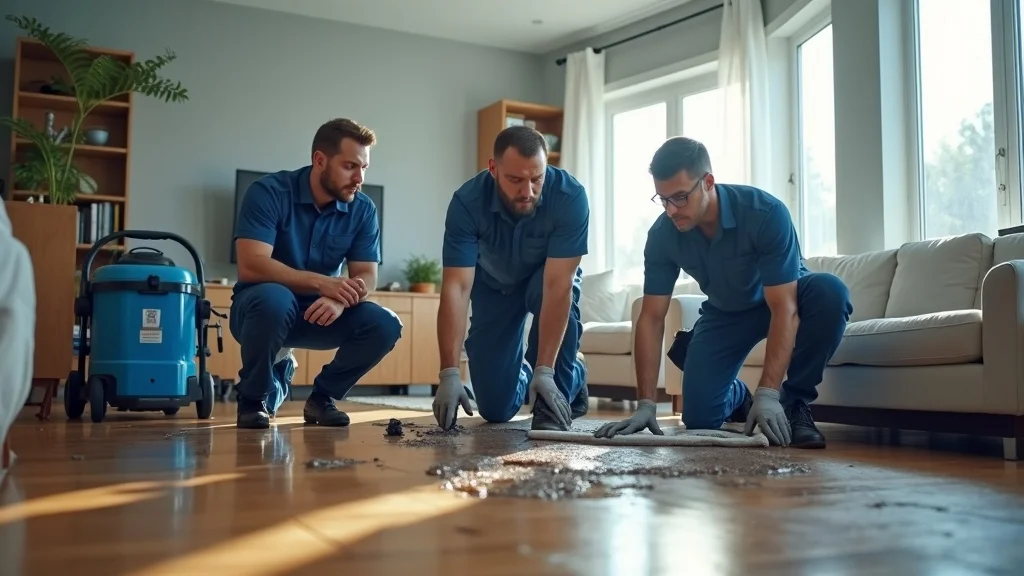
“Did you know water damage restoration emergencies can double in cost every hour a response is delayed? Fast action is crucial for effective damage restoration.”
Water Damage Repair Near Me: Why Speed and Trust Matter Most
When disaster strikes, every second counts. Homeowners in Columbia, SC, searching water damage repair near me are facing an urgent crisis—whether from a burst pipe, flash flooding, or hidden leaks. Quick, decisive action can mean the difference between minimal, affordable repairs and extensive, costly damage restoration. Water doesn’t just disappear—it seeps into floors, walls, and foundations, threatening both structural integrity and health.
That’s why choosing a trusted water damage repair company with rapid response capabilities is vital. Local experts understand the climate and unique risks in the Columbia area. They can be on-site fast, using advanced water clean and extraction equipment, and begin cleanup services the moment they arrive. Trustworthy companies offer clear communication, upfront estimates, and professional certification (such as IICRC), giving you confidence and peace of mind when every minute counts. The right team will restore your property, protect your belongings, and help you deal with water emergencies—saving you time, money, and stress.
What You’ll Learn About Water Damage Repair Near Me
- The top benefits of finding prompt water damage repair near me in Columbia SC
- Key steps professionals take for damage restoration and cleanup
- Signs you need immediate water damage repair or cleanup services
- What to expect from reputable water damage repair near me
- How to compare cleanup and restoration providers by expertise and response time
The True Cost of Water Damage Repair Near Me in Columbia SC
| Type of Water Damage | Average Repair Cost (Columbia SC) | Typical Timelines |
|---|---|---|
| Minor Leaks | $300 – $800 | 1-2 days |
| Major Floods | $2,000 – $8,000 | 3-7 days |
| Mold Remediation | $500 – $6,000 | 2-5 days |
How Much Can Water Damage Cost to Repair?
The cost of water damage repair near me in Columbia, SC depends on the type and extent of the damage. Small incidents—like minor leaks—may require drying and cleanup services costing just a few hundred dollars. However, significant flooding, such as after a storm or burst pipe, can launch expenses into the thousands. Repairing water damage often involves water extraction, removing damaged materials, and addressing potential mold growth. Mold remediation costs depend on the size of the affected area and the speed of response—delayed action allows mold to spread, increasing both health risks and expenses. It’s vital to contact a restoration company proactively for a prompt inspection and an accurate, transparent estimate. Remember, your insurance company may cover many damage restoration scenarios, but having detailed records and acting fast ensures the greatest claim success.
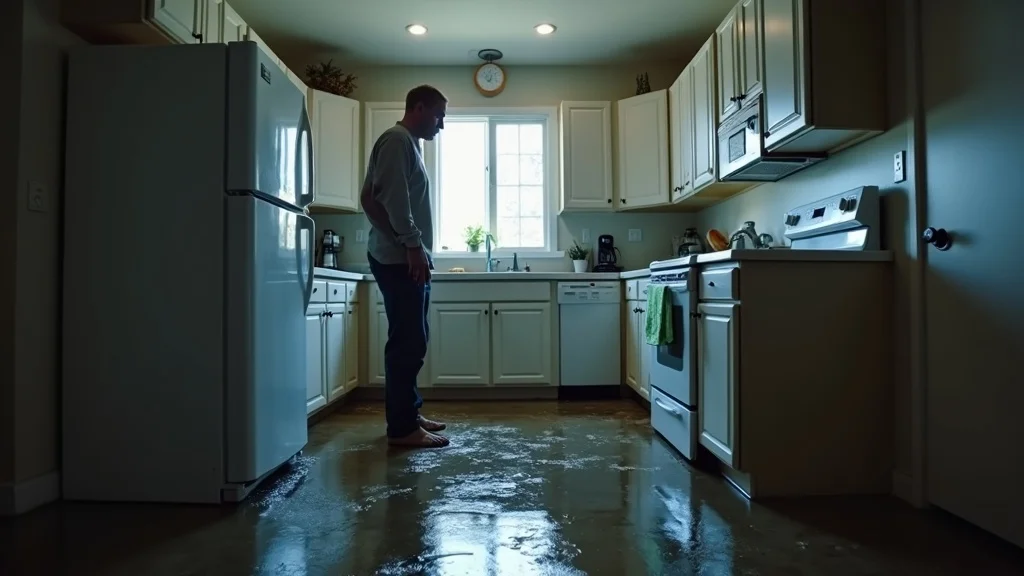
Water Damage Restoration and Repair: Key Steps Explained
- Inspection and damage assessment
- Water removal and water cleanup
- Drying and dehumidification
- Cleaning, sanitizing, and odor removal
- Damage repair and restoration
When you need cleanup services for a water damage emergency, professionals follow a proven process to ensure every issue is addressed. First, certified technicians conduct a thorough inspection, using moisture meters and thermal imaging to locate all water—even behind walls and under floors. Immediate water removal and cleanup are performed using industrial extractors and pumps to prevent standing water from worsening the damage. Next, high-powered air movers and dehumidifiers dry out all affected areas, halting mold growth and protecting structural elements. Afterwards, all surfaces are meticulously cleaned and sanitized, eliminating bacteria and odors. Finally, the team completes any necessary damage repair or full damage restoration—replacing drywall, flooring, or structural elements—so your home or business is safe and comfortable again.
Choosing a company with advanced water clean equipment and expertise ensures every step is handled professionally. A reputable water damage restoration company won’t just dry surface water; they’ll address hidden risks and help prevent future issues. When evaluating providers, ask about their process, track record, and ability to deal with water damage in your home from start to finish.
In many cases, water damage can lead to hidden mold growth that threatens both your property and your health. If you suspect lingering moisture or notice musty odors after cleanup, it’s wise to consider professional mold removal and testing services in South Carolina to ensure your home is truly safe and fully restored.
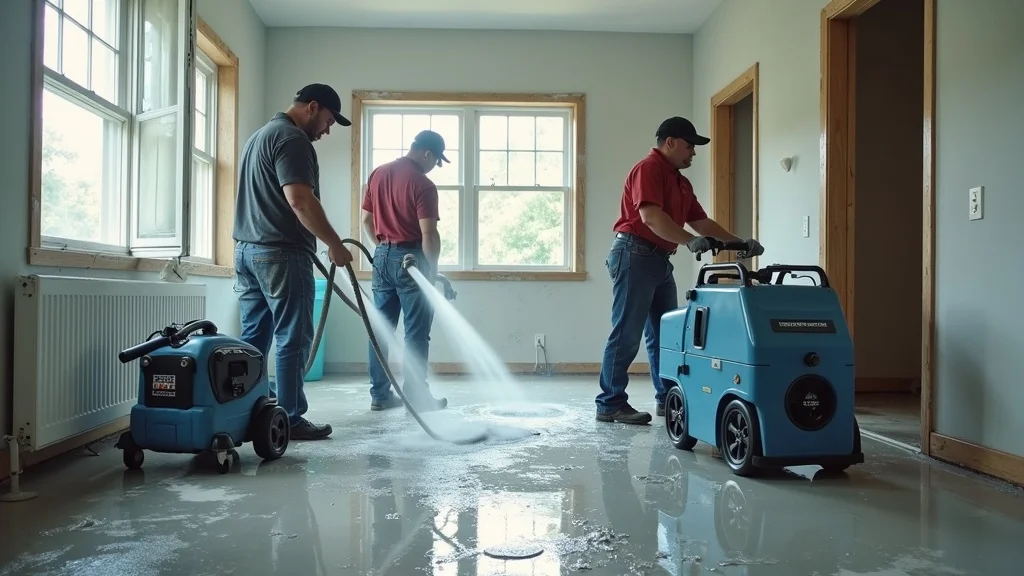
Who Should I Call for Water Damage in Columbia SC?
In Columbia, SC, Paul Davis is a recognized name for water damage emergencies, but there are also several other equally reputable local restoration companies. Look for specialists who offer 24/7 emergency response, IICRC certification, and verified local references. Your first call after discovering a water damage emergency—whether a burst pipe, appliance overflow, or sewage backup—should be to a company with proven expertise in both damage repair and damage restoration.
A qualified restoration company provides end-to-end services—from assessing the damaged area, performing water extraction and water cleanup, to negotiating with your insurance company. Companies with deep Columbia roots are responsive to local climate risks and building codes. Always verify credentials, ask about immediate availability, and read customer testimonials to ensure you’re placing your home or business in trusted hands.
Columbia’s Most Common Reasons to Need Water Damage Repair Near Me
- Burst pipes and plumbing leaks
- Heavy rainfall and flooding
- Appliance overflows
- Sewage backup
- Roof and foundation leaks
Columbia homeowners most often search for water damage repair near me during severe weather seasons, following sudden plumbing failures, or when hidden moisture and mold problems emerge. Burst pipes, especially during winter or when old plumbing fails, can flood rooms within minutes, while heavy rainfall and localized flooding strike during hurricanes or tropical storms. Appliance overflows from dishwashers, washing machines, or hot water heaters are surprisingly common and can soak floors and baseboards before you notice.
Sewage backups and foundation leaks often cause not only water damage but also major health and sanitation threats—requiring highly specialized cleanup services and hazard remediation. Local repair teams seize on their knowledge of the area’s older homes and newer constructions alike to quickly pinpoint and deal with water issues unique to Columbia’s neighborhoods. No matter the cause, professional intervention is crucial to restore your property and stop ongoing damage.
What to Expect From Professional Water Damage Repair Near Me
- Comprehensive inspection using advanced tools
- Efficient water extraction and damage restoration
- Mold prevention and moisture control
- Transparent estimates and insurance assistance
When you call for water damage repair near me in Columbia, expect prompt arrival, full transparency, and a science-backed recovery process. Experienced technicians conduct a comprehensive inspection using digital moisture meters and infrared tools to identify all affected areas—even those invisible to the naked eye. From there, efficient water extraction and thorough damage restoration work begin. State-of-the-art drying technology helps protect you from secondary issues such as mold growth and lingering moisture, while careful cleaning ensures no hidden contaminants remain.
Customer-first companies provide detailed, honest estimates before work starts and help clients navigate tricky insurance claims. They coordinate directly with your insurance company, documenting every step to maximize your reimbursement. The best teams offer honest advice, ongoing communication, and guarantee both the cleanup and restoration of your home or business. When professionalism and expertise matter, demanding both drying results and excellent customer service is your right.

How Much Can I Claim for Water Damage? (Insurance, Water Damage Restoration, Cleanup Services)
Homeowners insurance often covers sudden and accidental water damage, such as burst pipes, appliance leaks, and some types of flooding (excluding natural flood events unless you have specific flood insurance). The amount you can claim for water damage repair near me ranges from a few hundred to several thousand dollars, depending on your policy, deductible, and the extent of the cleanup and restoration needed.
Document the incident thoroughly: photograph all damaged areas, collect invoices for emergency cleanup services, and save every communication with your water damage restoration company. Insurance typically covers the cost of water extraction, drying, mold remediation, and repairs to structures and finishes. Be prompt about contacting your provider—delays could limit your eligibility. Your restoration company should help you file and substantiate your claim, ensuring you get the coverage you’re entitled to after a damage emergency.
How Much Does It Take to Fix Water Damage: Timeline for Water Damage Repair Near Me
The timeline for water damage repair near me will depend on the size and type of the water damage, the presence of contaminants (such as sewage or mold), and how quickly professionals can begin work. Minor leaks or spillages may be dried and remediated within 24–48 hours with proper air movers and dehumidifiers, while major floods—where standing water persists or mold growth is significant—may require a full week or more for damage restoration and drying.
During this process, you’ll typically see progress in clear phases: emergency water extraction, removal of damaged materials, targeted drying and monitoring, followed by comprehensive cleaning, decontamination, and final repairs. Your local water damage restoration company will carefully walk you through this timeline and provide frequent updates, ensuring that your home or business is safe and habitable as quickly as possible, without cutting corners.
Why Choose Local Water Damage Repair Near Me Over National Chains?
- Faster on-site response in Columbia SC
- Knowledge of local building codes and climate issues
- Personalized customer service vs. national chains
Opting for a local water damage repair near me company offers advantages unavailable from many national restoration chains. Local experts guarantee faster on-site response times—crucial in the first hours of a water damage emergency. These technicians know the intricacies of Columbia’s weather patterns, soil conditions, common plumbing systems, and building codes. This local knowledge allows for highly targeted solutions that national competitors may overlook.
Local Columbia teams also pride themselves on personalized customer service—building relationships with homeowners and prioritizing clear, direct communication throughout the cleanup and restoration process. You’ll avoid the frustrating bureaucracy that often comes with national chains, and you’ll receive honest advice tailored to your situation. Look for a provider committed to the local community, not just the bottom line—so your peace of mind is restored along with your property.
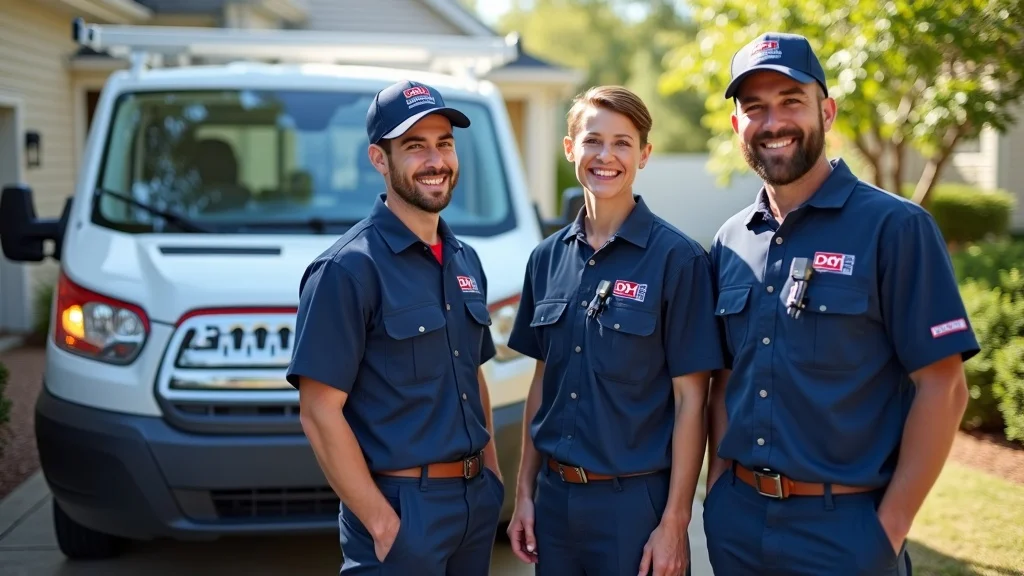
Selecting the Right Water Damage Restoration Company Near Me: What Sets the Best Apart
- 24/7 water damage emergency response
- IICRC certification and insurance
- Verified customer reviews
- Offer both cleanup services and full damage restoration
Top-tier water damage restoration companies stand out through a combination of rapid response, professional accreditation, and a full-service guarantee. Look for teams that provide 24/7 water damage emergency response—water emergencies rarely follow a 9-to-5 schedule. IICRC certification proves that technicians meet industry standards for cleanup, drying, mold remediation, and safe repair.
Verified customer reviews are invaluable—check sites like Google or local business directories for honest feedback about response times, professionalism, and satisfaction. The best providers offer complete solutions: immediate water cleanup, odor removal, drying, and full restoration (carpentry, painting, flooring). By choosing a company renowned for both technical skill and customer care, you ensure your property is in trusted, capable hands—ready to restore your home or business from crisis to comfort.
Customer Success Stories: Water Damage Repair Near Me That Saved Homes
“Calling a trusted water damage repair near me service saved my home from mold and high repair costs. Their quick cleanup and restoration process helped me get back to normal fast.” — Homeowner in Columbia, SC
Real stories from your Columbia neighbors illustrate why selecting a reputable, local water damage restoration company is so important. Homeowners who called for prompt service after a burst pipe or severe flood consistently report that quick
action curtailed further damage, minimized stress, and reduced their overall costs dramatically. These satisfied clients highlight thorough communication, on-time arrival, and full restoration of every damaged area as key factors in their positive experience. Your neighbors’ successes are the best proof that fast, trusted response leads to complete recovery and genuine peace of mind.
Watch real footage of a professional water damage repair near me team in Columbia, SC, showcasing rapid water cleanup, high-powered drying, and thorough damage restoration—all in a real home emergency scenario.
FAQs: Water Damage Repair Near Me in Columbia SC
- How quickly should I respond to water damage emergencies?
Response should be immediate—ideally within the first 24 hours. Water spreads fast and every hour increases the risk of secondary damage like mold growth. Fast action limits costs and gives you the best chance of full restoration.
- Will insurance cover all types of water damage repair near me?
Most homeowners insurance covers sudden and accidental water events (burst pipes, appliance leaks), but may not cover natural flooding without specific flood insurance. Always check with your insurance company and document all damage thoroughly.
- How do I prevent long-term water damage and mold?
Immediately remove excess water, dry out all materials, and use a certified restoration company for mold testing and remediation. Address any plumbing or roofing issues and install sump pumps or drainage systems if flooding is a recurring risk.
- What’s the typical timeframe for water damage restoration and cleanup services?
Timelines vary based on severity—from 1–2 days for minor incidents to a week or more for extensive flooding and mold remediation. Experienced professionals provide ongoing updates and work efficiently to restore your property.
People Also Ask About Water Damage Repair Near Me
How much can water damage cost to repair?
Minor water damage may only require $300–$800 for quick cleanup, but severe flood damage or mold remediation can cost $2,000–$8,000+ depending on the damaged area and timeline. Acting promptly reduces your total expense.
Who should I call for water damage?
Call a local, certified water damage restoration company such as Paul Davis or another reputable Columbia, SC team with 24/7 emergency response, credentials, and positive local reviews for water cleanup and damage repair.
How much can I claim for water damage?
Your not-out-of-pocket claim amount can range from a few hundred to several thousand dollars (or more), depending on your homeowner’s or flood insurance policies, deductible, and the repair scope. Documentation is crucial to maximize claims success.
How much does it take to fix water damage?
Simple dry-outs and minor damage repair may take just 1-2 days. Larger jobs, especially with extensive water or mold, require 3-7 days on average. Fast action and a professional restoration team help minimize the timeline.
Hear from Columbia’s top water damage restoration professionals on preventing damage, maximizing insurance claims, and what to expect during cleanup services!
Key Takeaways: Water Damage Repair Near Me
- Immediate action for water damage emergencies saves money and stress
- Choose certified water damage repair near me in Columbia SC for best results
- Understand insurance coverage for water damage restoration and damage repair
Restore Your Home Today—Contact Water Damage Experts in Columbia, SC
Don’t let water emergencies destroy your home or peace of mind. Contact Water Damage Experts in Columbia for the fastest, most reliable cleanup, repair, and restoration. Expert help is just a call away!
If you’re ready to take your home’s protection to the next level, consider exploring the full spectrum of environmental safety solutions available in South Carolina. Beyond water damage repair, understanding comprehensive mold remediation and testing options can help you safeguard your property against hidden threats and future emergencies. By staying informed and proactive, you’ll not only restore your home after a crisis but also create a healthier, more resilient living environment for years to come. Discover how expert guidance and advanced remediation techniques can give you lasting peace of mind.
Sources
- EPA – https://www.epa.gov/mold/mold-remediation-schools-and-commercial-buildings-guide
- HomeAdvisor – https://www.homeadvisor.com/cost/environmental-safety/repair-water-damage/
- FEMA – https://www.fema.gov/fact-sheet/insurance-coverage-home-water-damage
For homeowners seeking expert advice and trusted services, Columbia SC Mold Removal | Palmetto Mold Experts provides in-depth information on mold assessment, professional remediation, and how to ensure your property is fully restored after water damage. This resource explains the critical steps for safe cleanup and offers guidance tailored to the Columbia area. Additionally, the Palmetto Mold Experts Facebook page features customer experiences, updates on mold prevention, and tips for maintaining a safe, healthy home. If you’re serious about fast and thorough water damage repair near you, these resources will give you the expert insight and local support you need.
Avoid Surprises: Water Damage Repair Cost Lexington Explained
Did you know? According to industry research, water damage repair costs in Lexington can run from a few hundred to several thousand dollars—catching many homeowners off guard. If you own a home in Lexington, understanding water damage repair costs isn’t just smart—it’s essential for protecting your property and your wallet.
A Startling Truth: Water Damage Repair Cost Lexington & Why Awareness Matters
“According to industry research, water damage repair costs in Lexington can run from a few hundred to several thousand dollars—catching many homeowners off guard.”
For many homeowners in Lexington, water damage comes unexpectedly and brings a whirlwind of stress—not just from the mess but from the surprising expenses. When a burst pipe or major leak occurs, the financial impact can escalate rapidly, often before a solution is in sight. Awareness of the real water damage repair cost Lexington arms you with the knowledge to respond quickly, avoid common pitfalls, and make informed decisions. In this guide, you’ll learn the essentials of estimating costs, the factors that tip the financial scale, and how to minimize the impact on your budget and life.
Whether faced with water damage from a flash flood, a hidden leak, or even the devastating effects of a burst pipe, knowing what drives repair costs keeps you one step ahead. Too often, Lexington residents discover too late that insurance coverage doesn’t stretch as far as expected, or that delays can mean skyrocketing bills for damage restoration and mold remediation. Let’s break down the facts so you can be prepared—not surprised—should water damage strike your Lexington home.
What You’ll Learn About Water Damage Repair Cost Lexington
- Core factors influencing water damage repair cost Lexington
- Typical cost ranges for water damage repair and restoration services
- Process steps for damage restoration after a burst pipe or flood
- Timeframes for water damage repair in Lexington
- Important questions to ask your restoration service provider
- How to avoid unnecessary expenses and ensure quality repairs
Understanding the Water Damage Repair Cost Lexington Homeowners Face

Unexpected water damage can send even the calmest homeowner into a panic—especially when the cost of water damage repairs becomes reality. The expenses associated with damage restoration in Lexington are shaped by several factors, including the type and extent of the damage, the affected materials, and the time it takes to act. For those who experience a burst pipe, water damage can mean anything from simple drying and cleaning to extensive reconstruction and mold remediation.
Most experts agree the earlier the intervention, the lower the damage repair cost. When water sits for even a few hours, it seeps into floors, walls, and cabinetry, increasing the scope of damage cleanup. Homeowners should be aware that every minute counts; an immediate call to a reputable restoration service in Lexington makes all the difference in minimizing both stress and expense. Understanding the full picture of costs prepares you for rapid, clear-headed action after any water disaster.
Breaking Down the Cost of Water Damage Repair in Lexington
The total water damage repair cost Lexington can vary widely based on the type of water damage, the size of the affected area, and the necessary repairs. According to restoration experts, minor incidents like a small leak can cost a few hundred dollars, while major events might exceed $10,000—especially when structural repairs or mold remediation are required. Here’s a closer look at the different levels of water damage and their typical price points in Lexington.
Minor water damage may involve limited areas and simple drying, often handled with prompt response and minimal inconvenience. Moderate cases include more widespread damage or contaminated water, requiring professional-grade equipment. Major or catastrophic damage—like a burst pipe flooding several rooms—demands intensive damage restoration, demolition, and sometimes reconstruction. The need for mold remediation further drives up costs, particularly if water has been present for more than 24–48 hours.
| Scenario | Estimated Repair Cost | Typical Services Included |
|---|---|---|
| Minor (Small leak, quick response) | $500 – $1,500 | Drying, minor repairs, cleaning |
| Moderate (Bathroom flood, appliance leak) | $1,500 – $4,000 | Water extraction, structural drying, limited mold prevention |
| Major (Basement flood, multiple rooms) | $4,000 – $10,000 | Full damage cleanup, drywall replacement, flooring, mold remediation |
| Catastrophic (Burst pipe, prolonged flooding) | $10,000+ | Demolition, reconstruction, comprehensive damage restoration, full mold remediation |
The Real Cost of Water Damage: Direct and Hidden Expenses
While repair costs quoted by restoration services reflect the obvious need for damage cleanup and reconstruction, there are often hidden or indirect expenses. Immediate costs include labor, drying, dehumidification, and replacement of damaged materials. However, the real financial fallout may occur weeks or months later if repairs are rushed or incomplete. Improperly dried areas can breed mold, forcing additional mold remediation that, left unchecked, may impact your family’s health and lead to even more bills for medical or deep cleaning services.
Homeowners should also be aware of potential loss of use—temporary relocation, higher insurance premiums if multiple claims are filed, and even decreased home value if disclosures are required during a sale. The best way to avoid these escalating expenses is to pursue prompt, professional damage restoration from a trusted Lexington water damage specialist. Investing in quality repairs up front nearly always saves time, money, and peace of mind long-term.
Major Factors Affecting Water Damage Repair Cost Lexington

- Type and source of water damage (burst pipe, flood, appliance leaks, etc.)
- Size of affected area
- Duration of water exposure
- Required damage cleanup and restoration service scope
- Need for mold remediation
- Structural damage versus cosmetic repairs
The water damage repair cost Lexington hinges on several factors that are unique to each situation. The source of the water—a burst pipe, a sudden storm, or a slow appliance leak—dictates how contaminated the water is and the necessary cleanup steps. Clean water damage is far less expensive to resolve than damage involving gray or black water, which introduces severe health risks and mandates specialized decontamination.
The size of the affected area also directly impacts repair costs; a single room with minimal infiltration costs significantly less than a multi-story home affected by an undetected leak. The length of time that water sits plays a crucial role too—prolonged exposure not only weakens building materials but accelerates the growth of mold, pushing the need for professional mold remediation. Ultimately, the extent and scope of damage restoration—from basic drying to full-scale reconstructions—determines the final price.
Water Damage Repair Process in Lexington: Step-by-Step Guide
Assessment and Initial Damage Cleanup
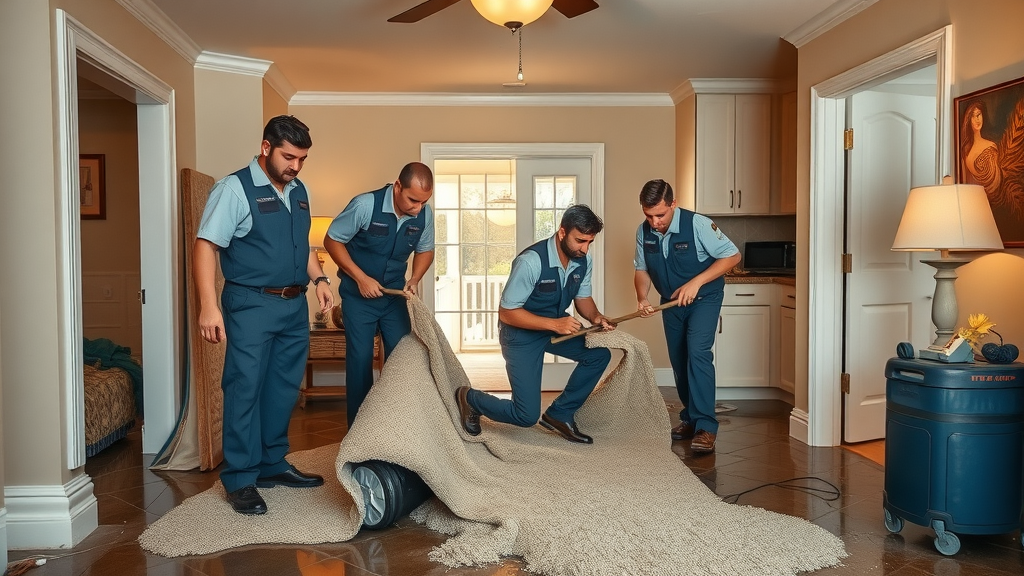
When water damage occurs, time is the most precious commodity. Professional damage restoration companies in Lexington start with a thorough assessment to determine the extent of the damage. Experts inspect visible and hidden areas for water penetration, using thermal cameras and moisture meters to detect pockets of moisture. This detailed survey leads to a clear, itemized estimate—allowing homeowners to understand and approve every step of the damage cleanup process.
The next step is immediate damage clean and water extraction. Specialized pumps and vacuums are deployed to remove standing water. Quick response limits the spread of damage and reduces the risk of mold growth. Damaged materials—such as carpets, drywall, and furniture—are removed swiftly to prevent further contamination. Throughout the initial phase, safety is paramount, with technicians monitoring for electrical hazards and unhealthy air quality. Effective damage services mean you can look forward to getting your home or business back to normal faster.
Drying, Dehumidification, and Water Damage Restoration
Once the bulk of the water is removed, professional-grade drying equipment is brought in. High-capacity air movers, dehumidifiers, and fans work continuously to eliminate residual moisture from floors, walls, and cavities. This phase is critical: even small amounts of lingering moisture can spark mold growth and rot, which may not become visible until weeks later. Expert restoration services monitor humidity and moisture levels to ensure every area is truly dry.
Following complete drying, the damage restoration team begins repairing and restoring affected materials. This includes replacing damaged drywall, baseboards, cabinetry, and flooring. Painting, refinishing, and restoration work continue until your space is as good—or better—than it was before. The end goal of any reputable Lexington water damage company is complete customer satisfaction and a home free from lingering signs of disaster.
Repairs, Reconstruction, and Damage Restoration Service
Some water damages require more than cleaning and drying; they demand significant reconstruction and specialized repairs. Structural damage, such as warped beams or compromised foundations, requires licensed contractors working in tandem with water damage experts. Your chosen company should handle everything from consulting your insurance provider to coordinating restoration work—offering comprehensive service for true peace of mind.
Before signing off on repairs, it’s important to confirm all damaged areas have been addressed—especially behind walls or under floors, where moisture can persist undetected. Thorough damage repair eliminates hidden risks and ensures you’ll enjoy a truly safe, healthy environment. Trusted restoration services provide warranties and proof of proper drying, setting you up for long-term success and preventing repeat incidents.
Burst Pipe Water Damage: Lexington’s Most Expensive Repairs
Identifying Water Damage from Burst Pipes Early
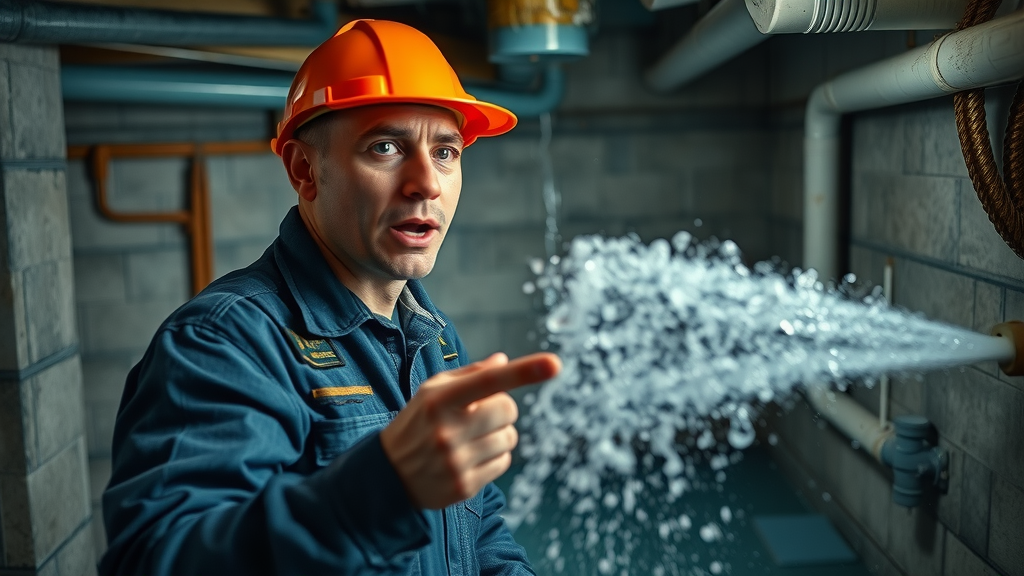
Among all types of water damage, those caused by a burst pipe are often the most severe and expensive. Water from a ruptured pipe can flow freely and silently, saturating walls, floors, and personal belongings in a matter of minutes. Signs include discolored patches on walls or ceilings, warping of floors, peeling paint, and unexplained musty odors. In basements or crawl spaces, you might notice standing water, visible streams, or even the sound of running water behind barriers. Acting quickly at the first hint of a burst pipe can limit the repair cost and reduce the complexity of the damage restoration process.
The key is vigilance; regular home checks—especially during freezing weather or after plumbing repairs—go a long way in early detection. Water damage experts in Lexington suggest monitoring water pressure, paying attention to unexpected utility bill spikes, and investigating new water stains without delay.
Burst Pipe Damage Repair: Why Cost Rises Quickly
The repair cost for burst pipes is higher because the damage is almost always significant. Water not only saturates visible surfaces but seeps into hidden spaces, affecting insulation, wiring, and framing. Cleanup requires extensive damage clean, demolition of waterlogged materials, and sometimes specialty drying techniques to reach deep cavities. The risk for mold growth multiplies—often resulting in mandatory mold remediation.
Additionally, many insurance policies require immediate reporting, and delays might impact your claim eligibility. Hiring a reputable restoration company ensures the right documentation for your insurance provider and expedites your path back to normal. The bottom line: swift, professional intervention is the only way to keep water damage repair cost Lexington from spiraling out of control after a burst pipe emergency.
Mold Remediation and Restoration Service: The Additional Cost Factor
When Mold Remediation is Needed After Water Damage
Mold remediation often becomes necessary when water damage isn’t addressed immediately or thoroughly. Water that lingers for more than 24-48 hours encourages rapid mold growth—sometimes even in hidden places, such as inside walls or beneath flooring. Lexington residents should be aware that visible mildew, musty odors, or an increase in allergies after water damage likely signal an emerging mold issue.
Effective restoration services include a thorough inspection for mold as part of every water damage claim. If professional mold remediation is needed, it typically involves containment, removal of contaminated materials, specialized cleaning, and air filtration. Timely and comprehensive treatment is the only surefire way to avoid costly repeat repairs and safeguard your health.
Mold Remediation Cost Lexington: What to Expect
The cost of water damage repairs often increases significantly if mold must be eliminated. In Lexington, mold remediation may cost $500 to $6,000 or more, depending on the severity, square footage, and complexity of removal. Minor jobs may involve just a few square feet, while widespread contamination requires opening walls, discarding porous materials, and applying biocides with industrial air scrubbers.
Homeowners should always ask for a transparent mold remediation estimate and verify that the restoration service guarantees the work. Some companies bundle water damage repair and mold remediation for greater convenience—and sometimes lower overall cost—so seek out providers familiar with multifaceted repairs in Lexington.
How to Minimize the Water Damage Repair Cost Lexington
- Immediate response and fast action
- Hiring qualified water damage restoration professionals
- Regular home maintenance to prevent burst pipes and leaks
- Understanding insurance policy for water damage
- Preventing mold growth

If water damage strikes, your choices in the first hours determine the ultimate repair cost. Immediate response is non-negotiable: the longer water remains, the more severe the outcome. Calling a professional restoration company ensures rapid assessment, correct water extraction, and the swift launch of structural drying—essential for reducing overall loss. Do not rely on DIY solutions for anything beyond minor spills; improper cleanup leads to further damage and higher expenses for eventual damage repair.
Preventive measures offer the most budget-friendly approach. Routine plumbing checks, insulation for pipes (to avoid burst pipes during freezes), and monitoring appliances are vital. Homeowner’s insurance is another crucial safeguard; review your policy to know what is covered for water damage restoration and what may fall to you. Finally, ensure that all repairs, especially for hidden mold, are conducted by certified professionals—protecting both your family’s health and the long-term value of your home.
People Also Ask: Water Damage Repair Cost Lexington
What is the typical cost for water damage restoration in Lexington?
The typical water damage restoration cost in Lexington ranges from $1,500 to $7,500, depending on the type of water, size of the affected area, and whether additional services like mold remediation are required. Minor damage from a small leak is often on the lower end, while extensive destruction caused by a burst pipe or flooding can exceed $10,000. Getting a detailed estimate from a trusted restoration service is the best way to assess the actual repair cost for your property.
Can water damage be repaired in Lexington?
Absolutely, water damage can be fully repaired in Lexington. With the help of skilled water damage repair companies, you can restore your home or business to its pre-damage condition. The process typically includes water extraction, drying, cleaning, damage cleanup, repair of affected areas, and prevention of future issues like mold. The key is to act quickly and hire professionals who understand the unique challenges of Lexington water damage scenarios.
Is water damage restoration worth it?
Yes, water damage restoration is absolutely worth the investment if you wish to protect the safety, value, and comfort of your property. Professional restoration saves you money over time by addressing both visible and hidden issues, including preventing recurring leaks or mold problems. Reliable restoration work also ensures compliance with insurance requirements, giving you peace of mind in the aftermath of a disaster.
How long do water damage repairs take?
The timeframe for water damage repairs in Lexington varies from a couple of days for minor incidents to several weeks for major damage involving reconstruction and mold remediation. Most standard repairs—such as water removal and drying—can be completed within 3–5 days. The complexity of the damage restoration process, extent of structural damage, and need for specialized services will all impact the timeline.
FAQs About Water Damage Repair Cost Lexington
- Does homeowners insurance cover water damage repair in Lexington?
Many policies cover sudden and accidental water damage, such as from a burst pipe. Gradual leaks or failures may not be covered, so check your specific policy and ask your insurance provider for clarification. - What’s included in a professional water damage repair estimate?
A comprehensive estimate covers water extraction, drying, cleaning, repairs, damage services, and mold remediation if needed. Make sure the quote lists labor, materials, and any specialty services. - Can I do water damage cleanup myself in Lexington?
For extensive water damages, professional help is strongly advised. DIY methods often miss hidden moisture or fail for contaminated water, leading to bigger problems later. - Are there differences in cost between water damage repair companies in Lexington?
Yes, prices and service quality can vary. Choose a company with excellent reviews, transparent pricing, and certifications to ensure high customer satisfaction and top-notch results.
Key Takeaways: Navigating Water Damage Repair Cost Lexington
- Early response can dramatically reduce water damage repair cost Lexington
- Always request detailed estimates for damage restoration service
- Mold remediation often increases the total repair cost
- Professional restoration services prevent repeat problems
Conclusion: Don’t Delay Addressing Water Damage Repair Cost Lexington
Fast, informed action is your best defense against high water damage repair cost Lexington—contact pros and restore your peace of mind today.
Get Help Now: Water Damage Repair In Lexington SC

Don’t wait—if you suspect water damage or need immediate damage restoration, Water Damage Repair In Lexington SC for rapid, certified service and total peace of mind.
Sources
- https://homeadvisor.com/cost/environmental-safety/remove-water-damage/ – HomeAdvisor
- https://palmettomoldexperts.com/lexington-sc-mold-removal/ – Palmetto Mold Experts
- https://cleanup.expert/water-damage-restoration-cost/ – Cleanup Expert
- https://www.angi.com/articles/costs-water-damage-restoration.htm – Angi
Understanding the costs associated with water damage repair in Lexington is crucial for homeowners aiming to protect their property and finances. According to Manta’s 2025 Water Damage Repair Cost Calculator, the average cost for water damage repair in Lexington, KY, ranges from $2,186 to $2,308, depending on the extent of the damage and the services required. (manta.com) Similarly, Homeyou reports that the fair price range for water damage restoration services in Lexington is between $2,079 and $2,136, highlighting the importance of obtaining detailed estimates from reputable service providers. (homeyou.com)
For those seeking efficient solutions, PuroClean of Lexington offers the QuickDry System™, which can save 15-40% on water damage restoration costs by employing advanced drying techniques. (puroclean.com) By leveraging such innovative services, homeowners can mitigate expenses and expedite the restoration process.
If you’re serious about understanding and managing water damage repair costs in Lexington, these resources will provide you with comprehensive insights and practical solutions.
What Causes Water Damage in Homes? Discover Hidden Risks
Did you know that nearly 14,000 people in the U.S. experience a water damage emergency at home or work each day? Whether it’s a burst pipe, silent water leak, or a sudden flood, the risks hiding behind your walls and under your floors can quickly turn from minor leaks to major disasters. If you suspect something is wrong or you just want to protect your Lexington SC home, understanding the causes of water damage in homes is the essential first step. In this guide, we uncover the hidden facts, the warning signs, and the expert-approved ways to keep your biggest investment—your home—safe and dry.
“Did you know that nearly 14,000 people in the U.S. experience a water damage emergency at home or work each day?”
Revealing the Hidden Facts: Why Understanding the Causes of Water Damage in Homes Matters
Many homeowners underestimate how quickly a small water leak can escalate into full-blown water damage. It’s not just about cleaning up water—it’s about safeguarding your living environment from mold growth, structural damage, and health risks that lurk far beyond visible stains. By grasping the most common causes of water damage, you gain the power to identify early signs of water issues and take preventive steps that could save thousands in costly repairs. In Lexington SC, where storms and plumbing failures can strike unexpectedly, local residents regularly face the consequences of lingering leaks and faulty appliances.
Understanding the sources and effects of water leaks allows you to make informed decisions, from quick DIY fixes to knowing when to call a professional for fast damage restoration. With local water damage statistics revealing a steady increase in insurance claims, Lexington SC homeowners are wise to stay vigilant and proactive. In this comprehensive article, we’ll break down the main culprits, diagnostic tips, and essential prevention strategies tailored for our region.
What You’ll Learn About the Causes of Water Damage in Homes
- What water damage is and how it affects your home
- Statistics that highlight the severity of water damage and water leaks
- The most common causes of water damage in homes
- How to identify and address water leaks before they escalate
- Prevention tips to protect your property
Understanding Water Damage: An Overview for Lexington SC Residents
What is Water Damage and Why Is It a Problem?
Water damage, in its simplest definition, is the destruction or deterioration of building materials due to exposure to water. This can result from water leaks, floods, plumbing failures, or even natural disasters. While a puddle on the floor may seem harmless, unchecked moisture can quickly lead to mold growth, compromise your home’s structural integrity, and create a breeding ground for bacteria and other health risks. For homeowners in Lexington SC, the proximity to the flood plain and frequent heavy rainfall further increases the risk.
Unchecked water exposure doesn’t just ruin carpets and drywall; it affects the strength and safety of your entire home. Over time, wood can rot, metals may corrode, and even clean water can cause foundational issues if left to seep undetected. With costly repairs looming just beyond minor signs, early identification and understanding the causes of water damage in homes is critical. Whether it’s a burst pipe in winter or a steady, silent drip under your kitchen sink, water can find its way into your home’s most vulnerable spots.
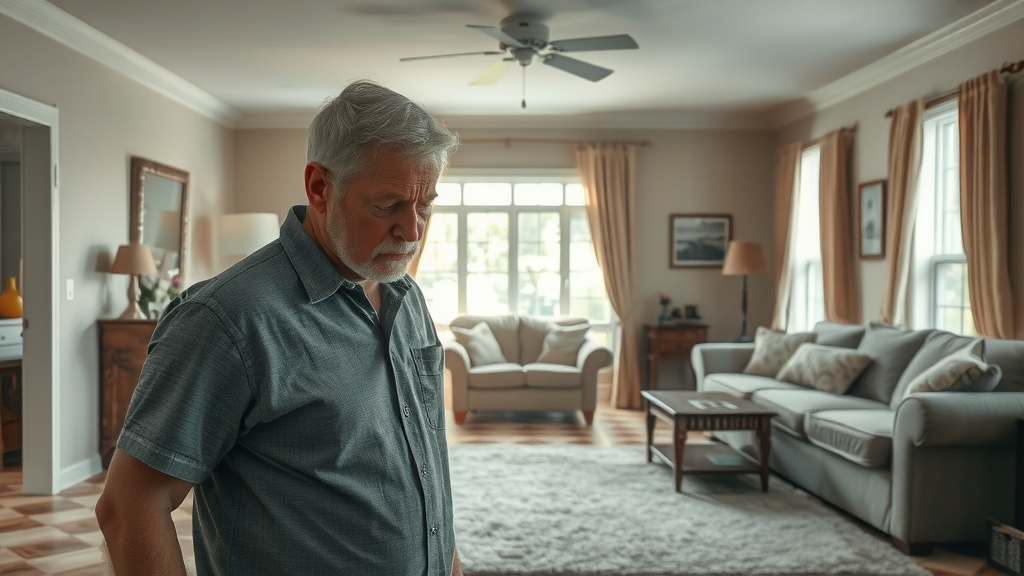
Water Damage Statistics: The Scope of the Problem in Homes
When it comes to damage statistics, the numbers are staggering. According to insurance industry data, nearly 1 in 50 homeowners file a water damage or water leak claim each year. In Lexington SC, local restoration companies report calls for flood damage and burst pipe cleanup often spike after heavy storms or freezing temperatures when unprotected pipes can burst. The average insurance payout for a water damage claim in the U.S. hovers around $11,000, but that number jumps significantly when structural damage or extensive mold removal is involved.
Beyond repair costs, water issues frequently lead to the displacement of families, loss of personal items, and unanticipated health concerns from standing water and mold. The cumulative national cost for home water damage runs into the billions annually—emphasizing why awareness and prevention must be top priorities for property owners.
| Category | National | Lexington SC |
|---|---|---|
| Annual water damage emergencies | 14,000/day | Approx. 50+/day post-storm |
| Common causes | Supply line leaks, burst pipes, weather events | Stormwater intrusions, faulty supply lines, aged appliances |
| Average repair cost per claim | $11,098 | $9,900–$15,000 |
| Percentage of claims (per year) | ~2% of homes | 2–3% (higher in flood-prone neighborhoods) |
Common Causes of Water Damage in Homes: From Water Leaks to Floods
Identifying the most common causes of water damage in homes—especially in Lexington SC—requires looking both inside and outside your property. Internal plumbing failures, external weather events, and faulty appliances all play significant roles in hidden and sudden water leaks. Time and again, overlooked warning signs can lead to catastrophic structural damage. Here, we break down the sources every homeowner should watch out for.
Internal Water Leaks: Hidden Dangers in Walls and Ceilings
- Supply line leaks
- Plumbing failures
- Water heater bursts
- Washing machine hose issues
Many water leaks originate from supply lines and pipes located within walls, ceilings, or floors. Over time, fittings may loosen, pipes may corrode, or hoses behind your washing machine can crack under pressure. Such hidden failures might not show signs of water right away, but the ongoing moisture can cause rot, mildew, and even dangerous mold growth. It’s not uncommon for a burst pipe—resulting from clogs, freezing, or old plumbing—to release massive amounts of water in just minutes, quickly flooding rooms before you can react.
Homeowners should conduct regular inspections of their plumbing, especially in older homes or residences that have undergone renovations. Watch for subtle changes, like damp smells or unusual discoloration on ceilings and walls, as these are often the only clues to a developing leak. Early detection and prompt repair help prevent water damage that could undermine your home’s structure, air quality, and your family’s health.

External Factors: Flood Damage and Severe Weather Patterns
- Stormwater intrusion
- Flooding from heavy rainfall
- Improper drainage
The weather in Lexington SC can change rapidly, and with it comes the risk of flood damage from severe storms or heavy rain. Homes situated in or near a flood plain must be particularly prepared, as even moderate rainfall can overwhelm outdated drainage systems and force water inside. Unchecked gutters, blocked downspouts, or landscape grading that slopes towards your home can lead to standing water around the foundation, eventually seeping into basements and crawl spaces.
Homeowners need to take proactive steps to ensure water drains away from structures—regularly cleaning gutters, directing downspouts, and maintaining proper yard grading. When external water finds its way inside, even short-term exposure can compromise structural integrity, damage electrical systems, and fuel mold proliferation. Investment in flood barriers and weatherproofing can pay off by minimizing repairs and insurance claims after extreme weather events.
Appliance and Fixture Failures: Washing Machine, Dishwasher, and Water Heater
- Malfunctioning or aged appliances
- Fixture leaks in bathrooms and kitchens
The appliances you rely on every day—such as the washing machine, dishwasher, and water heater—can also be major sources of water leaks and costly damage. Older models and appliances that haven’t been maintained may experience hose ruptures, pump failures, or loose connections, releasing water during cycles without immediate detection. Bathrooms and kitchens, with their tangle of fixtures and supply lines, are common sites for hidden leaks under sinks, in cabinets, and behind walls.
To prevent water damage caused by faulty appliances, schedule routine maintenance, replace hoses, and upgrade to more dependable models when necessary. Don’t forget about the water heater: sediment buildup, aging tanks, or faulty valves can all result in sudden water releases, especially in older installations. The aftermath of appliance and fixture failures is more than inconvenience—it can quickly spiral into long-term structural damage and expensive restoration.

Signs of Water Damage in Homes: Diagnosing Issues Early
Vigilance is your best defense against mounting repair costs. Recognizing the signs of water damage and acting promptly can save thousands of dollars and keep your family safe. Water damage often reveals itself subtly before visible destruction occurs. Here’s what to look for:
Early Warning Signs of Water Damage and Water Leaks
- Discoloration, damp spots, musty odors
- Peeling paint or warped floors
Be on the lookout for unusual discoloration on ceilings and walls, persistent damp spots, or a musty smell that lingers in certain rooms—common signs of water leaks beneath the surface. Warped wooden floors, peeling paint, or swollen baseboards could signal long-standing moisture issues. Touch baseboards and check under sinks for dampness as these often go unchecked until damage escalates. Even minor water exposure, if left unaddressed, can breed mold growth and rob your home of comfort and safety.
Don’t ignore any sound of dripping or running water when fixtures are not in use. Moisture meters and thermal cameras can be useful for detecting leaks inside walls or ceilings, driving early action before the cost of repairs skyrockets. Responding to these early signs is the first and most effective step to prevent water damage in homes.

Structural Damage: How Water Damage Impacts Your Home’s Integrity
“Even small leaks can cause structural damage over time, leading to costly repairs if left unaddressed.”
When water penetrates the framing, subfloors, or foundation of your home, it can compromise structural integrity. Prolonged water exposure weakens joists, sills, and beams, leading to sagging floors, cracking walls, and misaligned doors and windows. Eventually, significant structural damage can occur, sometimes requiring extensive and invasive repairs.
In addition to the immediate costs, repeated water damage may jeopardize your home’s resale value and could even render spaces uninhabitable due to mold, decay, and bacteria. Address leaks as soon as they appear and consult professionals for major repairs to maintain a safe and stable living environment.
Damage Restoration and Repairs: Addressing the Causes of Water Damage in Homes
Once water damage becomes visible or suspected, swift damage restoration is key. Waiting increases the chance for further structural damage, health hazards from mold, and more expensive remediation. So, what should homeowners in Lexington SC expect from professional water damage restoration?
Professional Water Damage Restoration: What to Expect
Certified water damage restoration teams begin with a thorough inspection using moisture sensors and thermal imaging to find the source of water leaks. The first step is to stop the water at its source, quickly removing standing water with pumps and vacuums. Industrial fans and dehumidifiers then dry out the affected areas to prevent future mold growth and preserve the structural elements of your home. Contaminated materials like insulation or drywall may be carefully removed and replaced, while special treatments clean and sanitize to prevent lingering odors and bacteria.
The best professionals not only repair damage but help you document the process for insurance purposes. Acting fast after any indication of flood damage, appliance failure, or a burst pipe will always minimize impact and costs. Restoration teams in Lexington SC are familiar with our region’s unique risks and can offer advice tailored to the local climate.

Insurance Cover and Making an Informed Decision in Lexington SC
- Does homeowners insurance cover water damage?
- Filing a claim after flood damage or water leak
Most standard insurance policies provide some insurance cover for sudden and accidental water damage, such as those from a burst pipe or faulty appliance. However, flood damage—caused by natural disasters or weather events—typically requires separate flood insurance. Understanding your policy, knowing the documentation required, and responding quickly can streamline your claim and ensure the fairest settlement.
Always contact your insurance company or agent after discovering damage. Take photos, save receipts, and consult with local professionals who can provide a detailed report of their work. Prompt action and an informed decision about hiring the right restoration company protect your home’s future and may limit out-of-pocket costs.
Prevent Water Damage in Homes: Essential Tips for Lexington SC Homeowners
- Inspect supply lines and fixtures regularly
- Upgrade old plumbing and appliances
- Maintain proper drainage away from the home
- Respond promptly to the first signs of water leaks
Routine maintenance is your best defense. Scheduling regular inspections, replacing aging hoses and pipes, and upgrading inefficient appliances can dramatically prevent water damage. Always make sure gutters and landscape grading divert water away from your home’s foundation. Most importantly, at the first sign of leaks—no matter how small—act quickly. Delaying repairs, even for a day, increases the risk of structural damage and extensive mold issues.
For Lexington SC homeowners, investing in moisture alarms, sump pumps, and weatherproofing solutions helps minimize risk, especially during peak storm seasons. Protecting your property not only saves money but keeps your family healthy and your living environment secure.
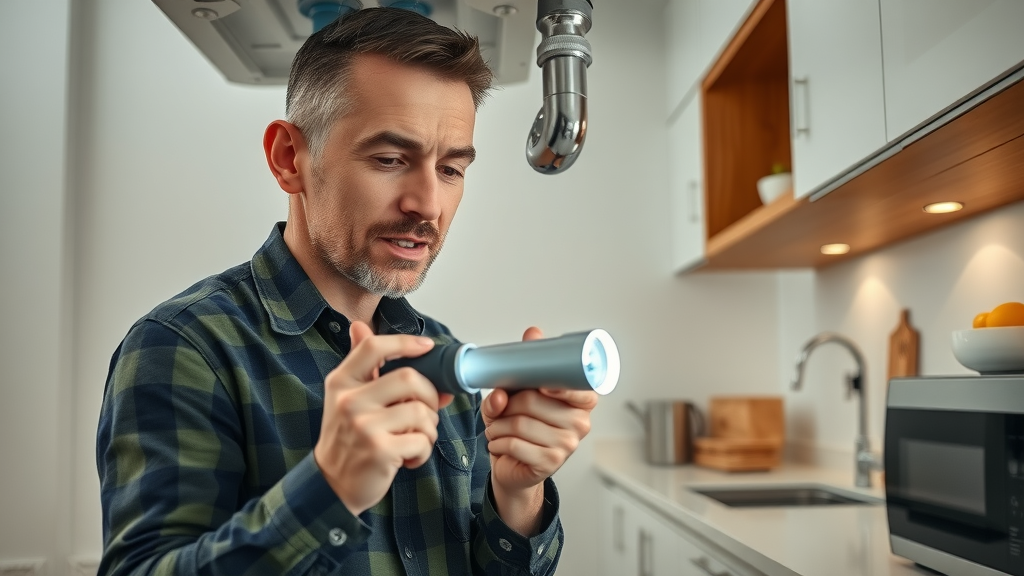
People Also Ask: Causes of Water Damage in Homes
What is the most common cause of water damage?
The most common cause of water damage in homes is a water leak, often from supply lines, plumbing failures, or appliances like washing machines and water heaters. These leaks are frequently hidden behind walls or beneath floors, making early detection and regular inspection essential to preventing extensive damage.
How to find out where water damage is coming from?
Detecting the source of water damage involves searching for visible signs of water—such as stains, warping, or odors—especially near appliances or under sinks. Check along supply lines and around fixtures for dampness. If the source remains unclear, professionals use moisture meters and thermal imaging technology to pinpoint hidden leaks and address problems before they get worse.
How long does it take for a leak to cause water damage?
A water leak can lead to noticeable water damage within 24-48 hours, especially if the flow isn’t stopped at the source. Standing water or ongoing moisture can rapidly destroy materials, encourage mold growth, and begin to compromise your home’s structure—including floors, walls, and ceilings.
How common is water damage in homes?
Water damage is extremely common, with around one in fifty homeowners each year filing a water damage claim. In regions prone to heavy rain or cold snaps like Lexington SC, the likelihood increases. Homeowners should stay vigilant, address leaks quickly, and conduct regular checks for early warning signs.
Key Takeaways on the Causes of Water Damage in Homes
- Water leaks are the leading cause of water damage in homes.
- Early detection can prevent costly structural repairs.
- Lexington SC residents should regularly inspect appliances and plumbing.
- Professional water damage restoration is vital after significant leaks or flood damage.
FAQs: Causes of Water Damage in Homes
- What types of insurance cover water damage?
Most homeowner’s policies cover sudden and accidental water damage (such as burst pipes or appliance failures), but not surface water or floods—those usually need separate flood insurance. - Can mold grow after a water leak?
Yes. Mold can begin to develop within 24-48 hours after water exposure. Immediate drying and professional cleaning are crucial to prevent mold growth and protect indoor air quality. - How do I choose a water damage restoration company?
Look for certified and insured restoration specialists with local experience and positive customer reviews. Ask about response times, equipment, and documentation for insurance claims.
Conclusion: Protect Your Home from the Hidden Causes of Water Damage
Take action now to safeguard your home, health, and investment from the hidden risks of water damage—early prevention is key.
Water Damage Repair In Lexington SC: Fast, Reliable Help for Water Damage in Homes
- For professional water damage restoration or mold removal in Lexington SC, visit Palmetto Mold Experts.
- Don’t wait until a water leak turns into serious damage. Act now to protect your home.
Watch real-life examples and expert tips on preventing and detecting water leaks in this video guide: How Leak Detection Prevents Major Water Damage
Sources
- https://www.iii.org/fact-statistic/facts-statistics-water-damage – Insurance Information Institute
- https://palmettomoldexperts.com/lexington-sc-mold-removal/ – Palmetto Mold Experts
- https://www.epa.gov/mold/mold-resources-tools – EPA Mold Resources
- https://www.waterdamageadvisor.com/statistics/ – Water Damage Advisor
Understanding the causes of water damage in homes is crucial for prevention and timely intervention. For a comprehensive overview, consider reading What Are the Common Causes of Water Damage? by 1-800-DRY-ME-OUT, which details various sources of water damage, including malfunctioning appliances and roof leaks. Additionally, What Are the Most Common Causes of Water Damage in Homes? by DynaClean Professional Services offers insights into how faulty appliances and roof leaks contribute to water damage. These resources provide valuable information to help you identify potential risks and implement preventive measures effectively.
Unlock the Magic of Water Damage Cleanup Process—Fast Relief
Did you know thatup to 98% of basements in the US face water damage during their lifetime? That staggering fact means thewater damage cleanup processis not just essential—it’s urgent. When disaster strikes, acting fast saves money, emotional stress, and even your health. In this comprehensive guide, you’ll discover exactly how the water damage cleanup process works, why speed is critical, and how Lexington, SC homeowners can restore peace of mind and property in record time.
Water Damage Cleanup Process: Startling Facts and Why It Matters
The water damage cleanup process is often underestimated. Water can invade homes in minutes, but the real damage reveals itself over days or weeks through hidden mold, weakened structures, and costly repairs. Studies indicate that the typical US homeowner will face at least one instance of water damage, most commonly in basements, kitchens, or bathrooms. Immediate action prevents the escalation of health risks, such as respiratory problems from mold, and preserves valuable possessions and structural integrity. Homeowners in flood-prone regions or with aging plumbing systems are especially vulnerable, making damage restoration a priority.
Choosing effective mitigation strategies—like fast water removal and professional damage restoration—can save thousands in repairs and minimize health hazards. Lexington residents experience this first-hand, especially after heavy storms or plumbing failures. Recognizing the signs of water damage and understanding the restoration process arms you with the knowledge to act swiftly and smartly.
“Up to 98% of basements in the US will experience water damage during their lifetime—acted on fast, effective water damage cleanup process saves thousands and preserves health.”
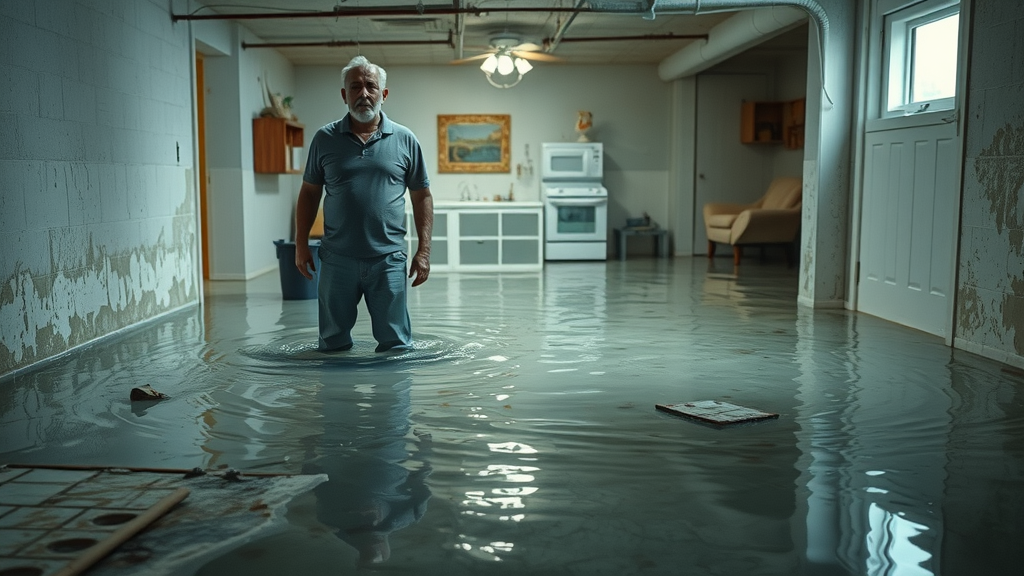
What You’ll Learn About the Water Damage Cleanup Process
- Core steps in the water damage cleanup process
- How water damage restoration protects your property
- Signs of water damage and why quick action is critical
- Cost variables in water damage restoration
- Health implications and mold risks
- When to call a restoration pro in Lexington, SC
Understanding Water Damage: Sources and Signs
Common Sources of Water Damage
Water damage can come from many sources, and knowing where to look makes all the difference in stopping the flow early. Burst pipes and plumbing failures are among the top causes, often occurring unexpectedly due to wear and tear or extreme temperatures. Severe weather—especially storms and flash floods—can also lead to a sudden water intrusion, overwhelming basements and crawl spaces within minutes.
Other frequent culprits in the water damage cleanup process include appliance leaks from washing machines, water heaters, and dishwashers. Sewer backups introduce an additional level of risk due to potential contaminants, further complicating damage restoration and remediation. Pinpointing the main source of moisture is the first step toward efficient cleanup and minimizing the affected area.
- Burst pipes and plumbing failures
- Storm and flood events
- Appliance leaks
- Sewer backups
Early Signs of Water Damage and Affected Areas
Early detection is crucial. Some signs of water damage are clear, like standing water or soggy carpets, but others are more subtle. Staining or discoloration on ceilings and walls often signals hidden leaks. Musty odors may indicate mold growth—one of the leading health risks associated with prolonged moisture. Warped flooring or baseboards point to water seeping into structural materials, weakening them over time.
Mold patches and peeling paint are bold visual indicators that the affected areas need timely intervention. Ignoring these warning signs can lead to rapid mold colonization, deeper structural damage, and higher restoration costs. Homeowners should routinely inspect susceptible spots, especially after storms or plumbing incidents, to catch these clues before they escalate.
- Staining or discoloration on ceilings and walls
- Musty odors in affected areas
- Warped flooring or baseboards
- Mold patches and peeling paint

The Water Damage Cleanup Process: A Detailed Step-by-Step Guide
A reliable water damage cleanup process includes careful planning and precise execution. Rushing or skipping steps can result in hidden moisture, recurrent problems, and compromised safety. Whether you’re facing a minor leak or severe flooding, understanding the complete restoration process equips you for both DIY response and professional action. The five primary steps below are industry-standard for protecting both property and occupants.
- Inspection and Assessment of Affected Areas
- Water Removal: Extracting Standing Water
- Drying and Dehumidification
- Cleaning and Sanitizing
- Damage Restoration and Repairs
Inspection: Identifying the Extent of Water Damage
The first step in the damage restoration process is a thorough assessment of the affected area. Professionals use moisture meters and thermal cameras to measure water infiltration beyond just visible stains. A comprehensive inspection identifies the type of water (clean, gray, or black), the severity of the damage, and the zones needing prioritization—critical for mapping out an efficient restoration process.
During this stage, it’s essential to document all visible and hidden damage, including water-stained drywall, warped flooring, and soft spots in the structure. Pinpointing affected areas lets the restoration pro devise a targeted cleanup plan. Early, detailed assessments reduce the odds of secondary issues, such as mold or persistent moisture, and form the foundation for insurance claims.
Water Removal: Tackling Standing Water Quickly
Fast water removal is the cornerstone of any successful water damage cleanup process. The longer standing water remains, the greater the threat to floors, walls, and possessions. Restoration professionals employ portable wet vacuums, powerful pumps, and industrial-grade extraction machines to eliminate water quickly—often within hours.
Removing the standing water from the affected area is just the beginning. It’s also crucial to control room humidity to prevent moisture from resettling elsewhere. Efficient water removal ensures that the subsequent drying and dehumidification steps are effective, ultimately minimizing health risks from contaminated water and invisible mold spores.

Drying and Dehumidification: Prevent Mold Growth
Once water is removed, the drying process begins in earnest. Restoration professionals strategically place industrial air movers and high-capacity dehumidifiers throughout the affected areas. These machines accelerate moisture evaporation and capture airborne water particles—a process that can take one to several days depending on the severity and extent of water damage.
Constant monitoring with moisture meters ensures every nook and cranny is addressed. The drying and dehumidification phase is vital not just for surface restoration but for deep structural drying beneath flooring and behind walls. Left unchecked, even minor moisture will support mold growth or compromise your home’s original condition, resulting in recurring challenges and additional costs.
Sanitization and Cleaning of Affected Areas
After the drying process, thorough cleaning and sanitization safeguard both the property and its occupants. Restoration professionals use professional-grade cleaning solutions and personal protective equipment to disinfect surfaces exposed to contaminated water—from walls to flooring to personal belongings. This step destroys harmful bacteria, neutralizes odors, and stops mold before it proliferates.
Attention to detail in this phase is what sets a high-quality damage restoration process apart. Frequently touched surfaces, hidden corners, and air ducts are targeted to ensure no trace of contamination lingers. The goal is to bring your home or workplace back to a safe, livable state while preventing the recurrence of health risks.
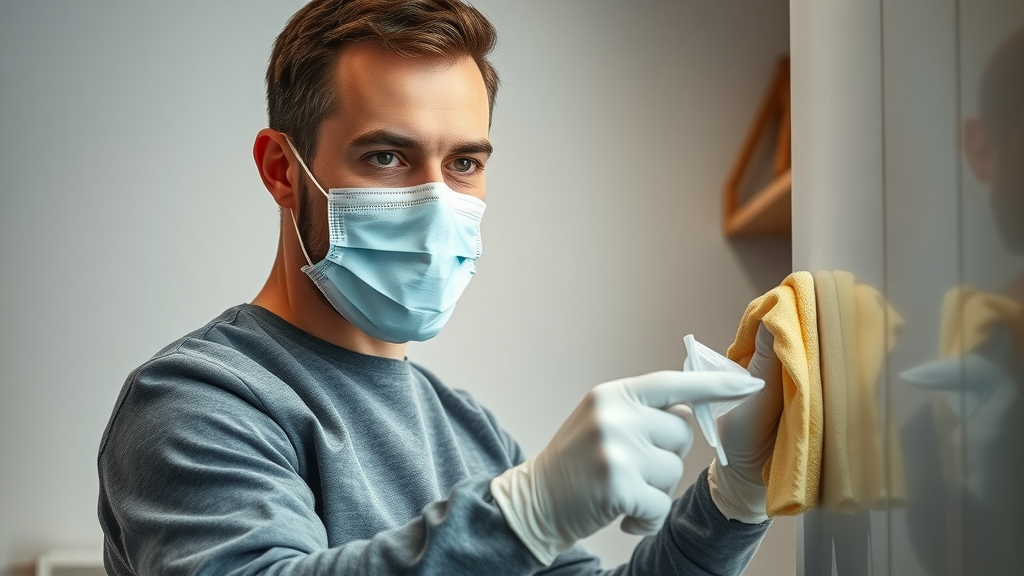
Restoration Pro Services: Final Damage Restoration Process
With cleaning complete, restoration pros can restore the affected area to its pre-damage or original condition. This final step may include replacing drywall, painting, installing new flooring, or even structural repairs if the damage was extensive. Restoration is the process of rebuilding and renewing not just appearance, but safety and function.
A qualified restoration pro ensures any signs of water damage are permanently resolved, often providing guarantees or on-going monitoring. For many Lexington, SC homeowners, the reassurance of a professional, well-executed damage restoration process provides true peace of mind and a safe home for the future.
Water Damage Restoration in Lexington, SC: Local Insights
When it comes to the water damage cleanup process in Lexington, local factors like seasonal storms, flood-prone topography, and subtropical humidity mean that professional solutions must be prompt and tailored. Delays in cleanup often result in rapidly escalating health and repair costs unique to the region, where environmental conditions can accelerate mold growth and further water intrusion.
Local restoration professionals are trained to identify regional vulnerabilities, from high water tables to older building materials often found in Lexington homes. Working with a restoration pro not only ensures practical, code-compliant solutions but also provides peace of mind—an invaluable aspect of the damage restoration process for residents who want high-quality, long-lasting results.
“Lexington homeowners need professional water damage cleanup process with prompt, tailored solutions—delays can lead to escalating health and repair costs.”

Cost Factors in the Water Damage Cleanup Process
The cost of the water damage cleanup process varies based on several key factors, each contributing to the final bill. Understanding these variables can help you prepare, budget, and make informed decisions when disaster strikes. Elements like the size of the affected area, the severity of water damage, the type of water (clean, gray, black), and the need for repairs or remodeling all significantly influence cost. In Lexington, SC, market rates and material availability can also affect pricing compared to national averages.
Here’s a breakdown of primary cost drivers for most water damage restoration processes:
| Factor | Average Contribution to Total Cost |
|---|---|
| Size of affected area | 30-40% |
| Severity/extent of water damage | 20-30% |
| Type of water (clean, gray, black) | 15-25% |
| Required repairs and restoration | 25-35% |
Health Risks: Is Mold From Water Damage Toxic?
Mold resulting from water damage poses significant and often underestimated health risks. Short-term exposure can trigger respiratory symptoms, allergic reactions, and skin irritation—especially dangerous for the young, elderly, or immunocompromised. If left untreated, toxic black mold may develop, bringing severe complications like lung infections and long-term immune issues.
Beyond personal health, mold can undermine a home’s structure, leading to hidden rot and escalating repair costs. Homeowners in Lexington, SC should act swiftly at the first signs of water damage or musty smells, engaging restoration professionals to thoroughly remediate affected areas. Proper drying and dehumidification in the cleanup process are vital to eliminating both immediate and future mold threats.
Immediate and Long-Term Health Impacts
- Respiratory issues
- Allergies and immune response
- Structural hazards
Immediate symptoms of mold exposure can include coughing, congestion, and throat irritation. Over time, mold growth in hidden or hard-to-reach areas may prompt more severe reactions, from asthma flare-ups to long-standing respiratory distress. In severe cases, unchecked mold can contribute to structural damage, reducing a building’s safety and value. Regular inspections and prompt water removal are the best preventative measures for keeping your home and family safe from mold-related health risks.
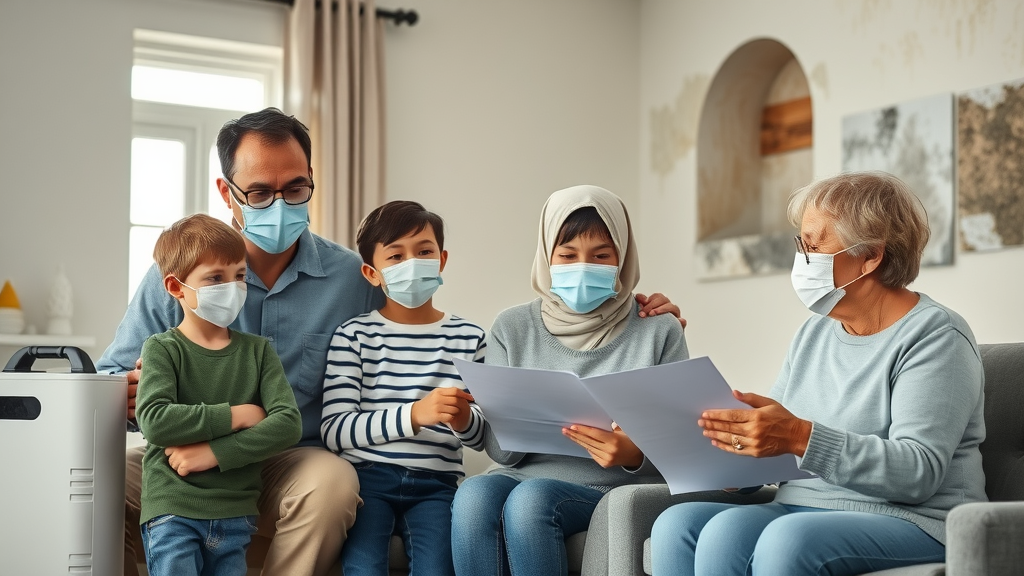
When Should You Contact a Restoration Pro?
The water damage cleanup process often begins with the homeowner’s quick response, but there are situations where contacting a restoration pro is essential. If you encounter more than minor surface water or suspect hidden water intrusion, professional intervention can prevent secondary damage. Persistent signs of water, like recurring stains, musty odors, or visible mold, signal that the restoration process requires specialized tools and expertise.
- If there’s more than minor surface water
- Persistent water damage signs in affected areas
- Visible mold or musty smells
Restoration professionals bring advanced equipment—such as industrial air movers and dehumidifiers—and deep knowledge of the water damage restoration process. Their timely response minimizes overall costs, speeds up total recovery, and guarantees thorough sanitization you can’t achieve with consumer-grade tools alone.
People Also Ask About the Water Damage Cleanup Process
How to clean up after water damage?
- Remove standing water using pumps or wet vacuums
- Move valuables from affected areas
- Dry surfaces thoroughly and monitor for mold
- Call professionals if unsure about the restoration process
The best approach is swift and systematic: start by removing the standing water from the affected area using wet vacuums or pumps. Once water is removed, salvage belongings and start the drying process with fans and dehumidifiers. Watch for recurring signs of water damage such as staining or a musty odor—these warn of ongoing problems that may require a restoration pro. If contamination or severe flooding occurred, professional water damage restoration ensures safe and complete cleanup.
How much does it cost to clean up water damage?
Costs can range widely based on factors like the size of the affected area, the type of water involved (clean, gray, or black), and the amount of repair needed. Minor cleanups may cost a few hundred dollars, while severe water damage restoration involving structural or mold repairs can cost several thousand. Always obtain an upfront estimate from a trusted restoration pro who understands local conditions in Lexington, SC.
Is mold from water damage toxic?
Some molds, especially black mold (Stachybotrys chartarum), can produce toxins that pose serious health risks, particularly to babies, elderly, and immunocompromised individuals. Even less toxic molds can cause respiratory issues or allergies, making prompt removal and thorough sanitization crucial parts of the water damage cleanup process.
What is the process of water damage restoration?
The standard water damage restoration process includes inspection, water removal, drying and dehumidification, sanitization, and complete repairs to return your property to its original condition. Engaging a restoration pro ensures all steps are done effectively and safely, reducing health risks and preventing future damage.
FAQs About the Water Damage Cleanup Process
- How quickly should I start the water damage cleanup process?
The sooner, the better—ideally within 24 hours. Fast response helps prevent mold growth and minimizes repair costs. - What are the risks of delaying water damage restoration?
Delays can lead to severe structural damage, toxic mold growth, and higher repair bills. Quick action limits these risks and improves recovery outcomes. - How can I prevent future water damage in Lexington, SC?
Regular maintenance of plumbing, installing sump pumps, using water alarms, and weatherproofing basements safeguard homes from seasons of heavy rain and plumbing failures. - Will insurance cover the water damage restoration process?
Most standard policies cover sudden, accidental water damage but may exclude flooding or gradual leaks. Consult your provider and keep thorough documentation.
Key Takeaways: Fast Acting Makes a Difference
- Quick response limits damage and health risks
- Professional restoration pro services ensure thorough cleanup
- Understanding the water damage cleanup process empowers better decisions
Conclusion: Restore Your Peace of Mind with a Professional Water Damage Cleanup Process
Immediate, expert action in the water damage cleanup process preserves your property, health, and peace of mind—especially when disaster strikes in Lexington, SC.
Take Action: Water Damage Repair in Lexington, SC
Don’t wait for water damage to get worse—act now! For professional, fast, and effective water damage restoration in Lexington, contact a local restoration pro today and reclaim your home from water intrusion.
Sources
- https://www.epa.gov/mold/mold-cleanup-your-home – US EPA
- https://restorationindustry.org/page/WaterDamageTips – Restoration Industry Association
- https://www.fema.gov/pdf/hazard/winter/basement.pdf – FEMA
To deepen your understanding of the water damage cleanup process, consider exploring the following resources:
-
“The Full Guide: Water Damage Restoration” (homedepot.com) offers a comprehensive overview of the restoration steps, including mitigation, remediation, and restoration, helping you grasp the entire process from start to finish.
-
“Complete Guide to the Water Damage Restoration Process” (angi.com) provides detailed insights into each phase of restoration, from stopping the water source to making necessary repairs, ensuring you’re well-informed about the critical actions to take.
If you’re serious about effectively managing water damage, these resources will equip you with the knowledge needed to navigate the cleanup and restoration process confidently.
Insurance for Water Damage Lexington SC: What You Must Know
Did you know that over 40% of homeowners in South Carolina file a water damage insurance claim at least once? Water damage is not just a nuisance—it’s a critical risk that can upend your home and finances if you’re unprepared. Whether it’s a sudden burst pipe after a Lexington thunderstorm or a slow, undetected water leak, disasters strike fast. This comprehensive guide reveals what you really need to know about insurance for water damage Lexington SC, ensuring your family, property, and peace of mind are protected—all with actionable steps to get fast, effective repair when it matters most.
Shocking Facts: The Real Impact of Water Damage in Lexington SC
“Did you know that over 40% of homeowners in South Carolina file a water damage insurance claim at least once?” – South Carolina Insurance Data Bureau
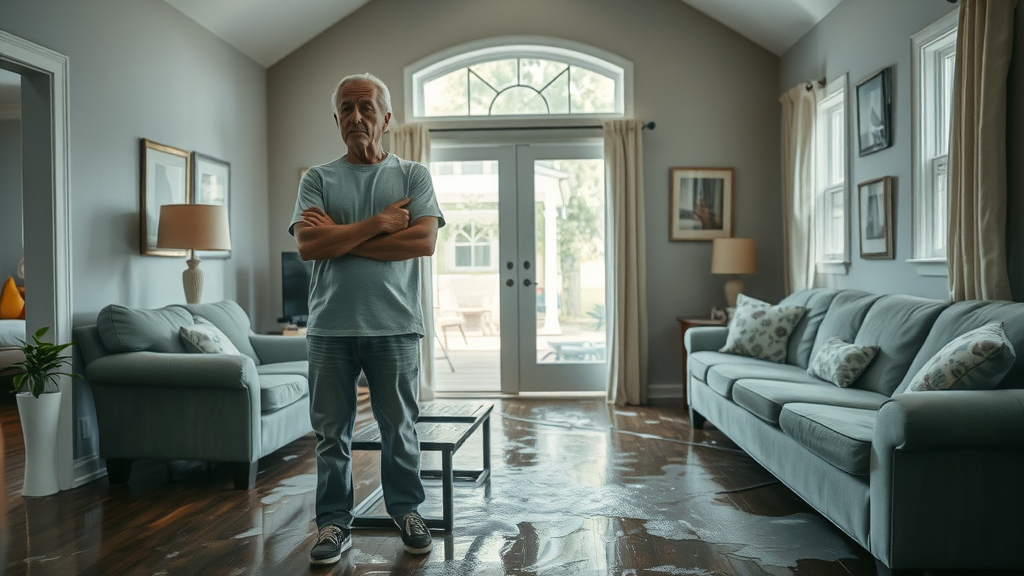
Water damage in Lexington SC is more than just an inconvenience—it’s an ever-present threat that catches many homeowners off guard. Because of South Carolina’s humid, storm-prone climate and aging local infrastructure, events like flash floods, storms, and plumbing failures are a frequent concern. What’s truly startling is how common water damage insurance claims are in this state. Home insurance companies report that water-related claims often surpass those for fire or theft, and the cost of restoration can quickly escalate into thousands of dollars if not addressed promptly. This is why understanding your coverage matters—your ability to respond swiftly can be the difference between a quick cleanup and a costly home disaster.
Beyond obvious disasters, seemingly minor issues like a slow water leak behind a wall or a small roof puncture from a hailstorm can wreak havoc over time. Lexington SC homeowners should be particularly aware of the unique local risks, from high groundwater tables to severe thunderstorms that can overwhelm drainage systems. Unattended leaks or poor response time can result in not just damage to personal property and structures, but also lead to hazardous mold growth or even require biohazard cleanup by certified technicians. This guide will help you understand the most important steps to take, the options you have for insurance and restoration service, and how to secure your home or business against the persistent risk of water damage.
What You’ll Learn About Insurance for Water Damage Lexington SC
- How insurance for water damage Lexington SC works and why it matters
- Key differences between water damage, flood insurance, and water leak coverage
- Common myths about insurance policies and claims process in South Carolina
- Steps to take for fast and effective damage restoration in Lexington SC
- How to maximize your insurance claim for water damage
Understanding Insurance for Water Damage Lexington SC
Navigating insurance for water damage Lexington SC isn’t always straightforward. While your standard homeowners insurance may cover many sudden water-related incidents, such as a burst pipe or accidental appliance leak, some types of water damage require extra coverage. Especially in areas like Lexington SC, where storms and flooding can happen swiftly, it’s vital to distinguish between different insurance policies—such as flood insurance, water leak, and standard water damage coverage.
In South Carolina, most home insurance policies exclude natural flooding, which means you need a separate flood insurance policy to be fully protected. If you experience a water leak from a failed water heater or a plumbing issue, a typical homeowners policy may kick in, but damage caused by neglect, poor maintenance, or long-term leaks may not be covered. Making sense of these details is critical because the claims process changes depending on the source of the damage. Understanding your policy’s specific terms helps ensure you receive the compensation you’re entitled to.
Types of Insurance Policies: Water Damage, Flood Insurance, and Water Leak
- Standard homeowners insurance policies in South Carolina
- When you need additional flood insurance in Lexington SC
- Water leak coverage and restoration service differences
| Type of Insurance | What It Covers | When You Need It |
|---|---|---|
| Homeowners Insurance | Sudden internal water issues (burst pipes, accidental overflows) | For unforeseen indoor water damage, not due to neglect |
| Flood Insurance (Separate Policy) | Natural disasters, rising groundwater, overflow from outside sources | Homes in Lexington SC flood-prone zones, required by lenders in high-risk areas |
| Water Leak Add-On | Gradual water leaks, hidden pipe failures, appliance leaks | Homes with older plumbing, frequent leak issues |
Common Causes of Water Damage in Lexington SC Homes
Water Leaks, Natural Flooding, and Other Problems

Lexington SC homeowners face a variety of water damage threats—many hiding in plain sight. The most common culprit is the sudden burst pipe or water leak. Whether it’s due to freezing temperatures, aging pipes, or damage during a home improvement project, a broken pipe can quickly flood affected areas and cause extensive property damage if not addressed rapidly. Other leading causes include plumbing failures originating from water heaters or supply lines and malfunctioning appliances, such as dishwashers or washing machines.
Storm damage and flooding are also significant risks for Lexington SC properties. Heavy rainfalls, poor drainage, or hurricanes can lead to outside water entering your home—a peril not covered under standard homeowners insurance but instead requiring a dedicated flood insurance policy. Additionally, roof leaks unique to the South Carolina climate can result from wind-driven rain or storm debris, with damage often going unnoticed until water stains or structural issues begin to appear. Understanding these common causes arms you with knowledge to take preventative measures and ensures you’re prepared to communicate clearly with insurance and restoration services.
- Plumbing failures (burst pipes, water leak)
- Storm damage and flooding
- Appliance malfunctions
- Roof leaks unique to Lexington SC climate
The Restoration Service and Damage Restoration Process
How Professional Water Damage Restoration Works
- Assessment and mitigation with restoration service
- Drying, cleaning, and sanitizing during restoration process
- Local water damage restoration best practices in Lexington SC
When water damage strikes, the clock is ticking. The sooner you engage a professional restoration service in Lexington SC, the greater your chances of minimizing the damage and cost. The process begins with a comprehensive assessment—often using specialized moisture detection equipment—to identify not just the visibly affected areas, but also hidden spaces behind walls and under flooring. IICRC certified technicians document the extent of the loss for both mitigation and for supporting your insurance claim.
After assessment, rapid mitigation is crucial. Certified restoration service teams extract standing water, deploy industrial-grade air movers and dehumidifiers, and clean and sanitize surfaces to prevent mold and biohazard issues. Local experts use practices that comply with South Carolina insurance policy requirements, ensuring all restoration work is properly documented and expedites the claims process. By choosing a local provider, you also benefit from faster response times and specialized knowledge of local risks—plus a higher likelihood that your claim will be supported with detailed proof and restoration estimates.
Filing an Insurance Claim for Water Damage in Lexington SC
Step-by-Step Claims Process
- Documenting your water damage: Take clear, dated photos and videos of all affected areas, including damaged furniture and personal property. Proper documentation is key to proving the scope of damage caused.
- Contacting your insurance company: Notify your provider as soon as possible. Most insurance policies have time-sensitive notification requirements—don’t delay!
- Working with claims adjusters: Be prepared to answer detailed questions and provide supporting documents. Your claims adjuster will likely need to visit your home or business to assess the restoration process and validate your loss.
- What to expect from the restoration process: Work with an experienced restoration company that provides thorough repair estimates and helps you communicate with your insurer. Their input can be critical for maximizing your claim and speeding up repairs.

“The faster you start the claims process after water damage, the better your outcome – insurers in South Carolina are strict on deadlines.” – Local Insurance Expert
Remember, missing even a single deadline—such as reporting the incident or submitting supporting documents—can undermine your right to a fair insurance claim. Always keep organized records, including communication logs with your insurance company, receipts for repair work, and photos of the restoration process. And whenever possible, enlist professional advice from a water restoration service familiar with local insurance claim procedures in Lexington SC.
Maximizing Your Insurance Claim for Water Damage
Best Practices and Tips for Lexington SC Residents
- Keep detailed records and photos of the damage restoration
- Utilize local restoration service for rapid response
- Work with experienced insurance claim professionals familiar with Lexington SC
To maximize your insurance claim and restore your home quickly, meticulous documentation is your best ally. Create a dedicated folder (digital or paper) that captures every step—from initial water leak discovery to the final phase of the damage restoration process. Be sure to include written descriptions, detailed photos, and any receipts for emergency repairs or restoration services. Documenting interactions with your insurance company, including the date, time, and summary of conversations, protects you from misunderstandings and supports your case if coverage is disputed.
Speed is crucial. Lexington SC property owners who enlist a reputable, IICRC certified local restoration company benefit from rapid response time, ensuring cleanup and drying begin swiftly. Many restoration specialists also help coordinate the claims process and advocate for you with insurance adjusters, giving you the edge in both negotiating payment and expediting repairs. Local firms understand unique South Carolina insurance requirements and can flag common claim mistakes, helping you avoid costly delays or denials.
| Action | Why It’s Important | Who Can Help |
|---|---|---|
| Turn off water source | Prevents further water from entering affected areas | Homeowner / Plumber |
| Document everything | Supports your insurance claim and tracks restoration costs | Homeowner |
| Call your insurance company | Starts the claims process before critical deadlines | Homeowner |
| Contact a local restoration service | Ensures prompt, professional cleanup and damage restoration | Water damage restoration company |
Frequently Asked Questions: Insurance for Water Damage Lexington SC
Will homeowners insurance pay for water damage?
Most homeowners insurance policies in Lexington SC do cover sudden and accidental water damage—such as from a burst pipe or sudden appliance failure. However, insurance policies typically do not cover damage caused by long-term neglect, poor maintenance, or flooding originating from outside your home. Always check your specific insurance policy details and consult with your agent to confirm what scenarios qualify for coverage.
What is the average insurance payout for water damage?
The average insurance payout for water damage claims in South Carolina ranges from $3,000 to $10,000 per incident, but severe cases can be much higher. The exact amount depends on the extent of damage, the type of affected areas, the speed of the restoration process, and your policy’s coverage limits and deductibles. Well-documented claims—backed by clear photographs, repair estimates, and certified technician reports—tend to yield better results.
Will insurance pay out for water damage?
If your insurance policy covers the circumstance that caused the damage—such as a water leak from a broken pipe or a sudden storm event—insurance will typically pay out for necessary repairs. However, claims related to damage caused by gradual deterioration, pre-existing conditions, or non-covered perils like external flooding may be denied unless you have a separate flood insurance policy.
What kind of water damage is not covered by insurance?
Insurance policies generally exclude water damage from longstanding leaks, gradual deterioration, mold from neglect, and ground water flooding—unless you hold a flood insurance policy. Always confirm the exclusions on your home insurance or flood insurance policy to avoid costly surprises during a claims process. Consulting an experienced restoration service or insurance claim specialist in Lexington SC is recommended for clarity.

Key Takeaways: Insurance for Water Damage Lexington SC
- Insurance for water damage Lexington SC is essential for homeowners
- Know the difference between water damage, water leak, and flood insurance
- Partner with reputable damage restoration services for best results in Lexington SC
Why Local Restoration Services Matter in Lexington SC
Choosing Local Experts for Water Damage Restoration
- Faster response times for water damage emergencies
- Specialized knowledge of South Carolina insurance policies
- Better support for your insurance claim
The value of a responsive, locally-based restoration company in Lexington SC cannot be overstated. Local restoration services provide faster on-site arrival, sometimes within hours, which is pivotal for minimizing both the extent and cost of water damage restoration. These Lexington specialists bring not just technical expertise, but a nuanced understanding of regional threats, such as South Carolina’s climate patterns, building codes, and common insurer requirements. Their strong relationships with area insurance companies and experience navigating regional policies means your insurance claim is managed efficiently, with less stress and better outcomes for homeowners and businesses alike.
Choosing a local restoration service—especially an IICRC certified one—allows you to benefit from advanced techniques, up-to-date equipment, and tailored solutions that national chains may not provide. These teams understand how to document restoration steps that meet Lexington water damage standards, ensuring you don’t encounter coverage delays. Thorough, transparent communication with both you and your insurance adjuster gives you peace of mind that your home is in capable, attentive hands from initial assessment to the final repair.
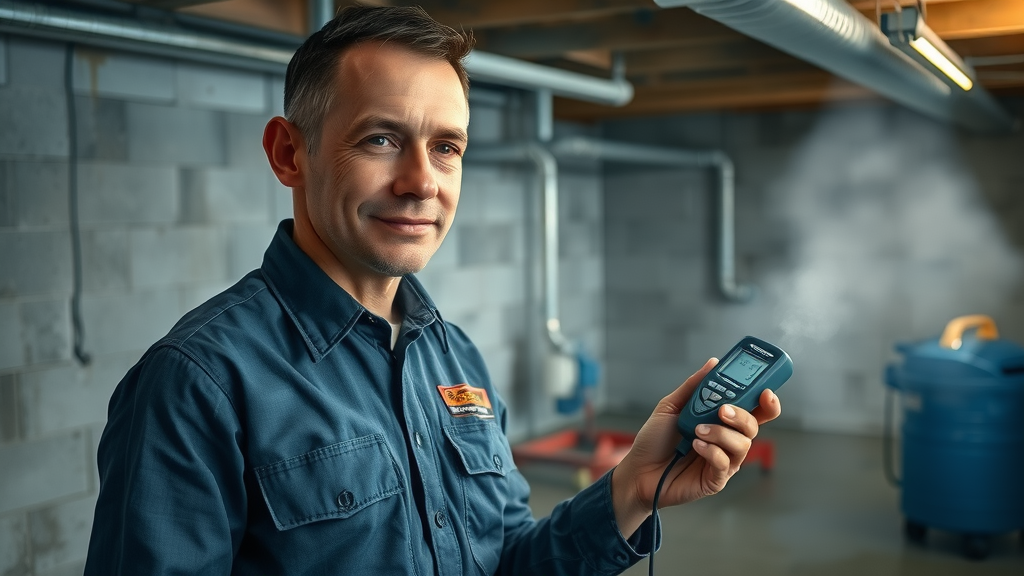
Final Thoughts: Protecting Your Home with Insurance for Water Damage Lexington SC
“Don’t wait until disaster strikes—review your insurance policy and restoration contacts today.” – Restoration Service Authority
Your home deserves the best defense. Review your insurance for water damage Lexington SC now and keep your local restoration service contact on speed dial—you’ll thank yourself when disaster strikes.
Take Action: Get Professional Water Damage Repair in Lexington SC Now

Don’t leave your property at risk! For fast, reputable damage restoration and expert insurance claim assistance in Lexington SC, contact the trusted professionals at Water Damage Repair In Lexington SC. Protect your home, your claim, and your peace of mind—reach out now for a free consultation and rapid emergency response.
Sources
- https://www.insurance.sc.gov/ – South Carolina Department of Insurance
- https://www.floodsmart.gov/ – National Flood Insurance Program
- https://www.iii.org/fact-statistic/facts-statistics-homeowners-and-renters-insurance – Insurance Information Institute
- https://palmettomoldexperts.com/lexington-sc-mold-removal/ – Palmetto Mold Experts (Lexington SC Water Damage Restoration)
Understanding the nuances of insurance coverage for water damage in Lexington, SC, is crucial for homeowners. The South Carolina Department of Insurance emphasizes that standard homeowners’ policies typically do not cover flood damage, which includes water entering the home from street flooding, overflow of creeks, rivers, or storm surges. They recommend considering a separate flood insurance policy to ensure comprehensive protection. (doi.sc.gov)
Lexington County has been a participant in the National Flood Insurance Program (NFIP) since 1979, aiming to reduce the impact of flooding by providing flood insurance to property owners, renters, and businesses. The county has adopted stringent floodplain management regulations, affording policyholders a 15% discount on flood insurance premiums. (lex-co.sc.gov)
For personalized assistance, local agencies like the Stedman Insurance Group in Lexington, SC, offer guidance on flood insurance options. They highlight that even properties outside designated high-risk areas can benefit from flood insurance, as 20% of flood insurance claims come from such properties. (stedmaninsgroup.com)
In the event of water damage, prompt action is essential. Local restoration services, such as Kingsley LLC, provide 24/7 emergency water and mold cleanup services in Lexington, SC, ensuring swift and professional restoration to mitigate further damage. (waterdamagecleanupservices.com)
By understanding your insurance coverage and having a plan in place with local restoration experts, you can better protect your home and finances from the risks associated with water damage in Lexington, SC.
Struggling with Mold Growth After Water Damage? Here’s Help
Have you ever wondered how quickly mold can spread through your home after water damage—and what you can do to stop it before it causes health and property problems? If you’re worried about musty odors, visible stains, or the hidden hazards that follow leaks, flooding, or moisture in Lexington, SC, read on. This comprehensive guide will arm you with the knowledge you need to act fast and protect your family, your investment, and your peace of mind. Don’t let a small water leak turn into a big mold headache!
Are You Prepared for Mold Growth After Water Damage in Lexington, SC?
Mold growth after water damage is a common and sometimes underestimated threat for Lexington, SC homeowners. The region’s humidity, sudden storms, and plumbing unpredictabilities make water leaks or flooding more than a mere inconvenience—they’re prime triggers for rapid mold to grow in your home. Most residents aren’t prepared for how little time it takes for indoor mold to become a big problem; in as little as 24 to 48 hours, mold spores can multiply invisibly behind walls, under carpets, or in your attic. When water-soaked materials like drywall, insulation, or ceiling tiles are left damp—even briefly—mold grows fast enough to impact indoor air quality and threaten your family’s health, often before you spot the first patch.
Most homeowners don’t notice mold until it becomes a major problem, and after water damage, time is critical.” – Palmetto Mold Experts
Are you confident you can catch the signs of mold before they escalate? Do you know how to prevent mold growth from taking over after a water leak? From identifying mold problems early to choosing effective mold remediation, this expert-backed guide provides everything you need to take control after water damage in Lexington, SC.
What You’ll Learn About Mold Growth After Water Damage
- Why mold grows after water damage
- How to spot mold early
- Effective mold remediation solutions
- Best ways to prevent mold growth
- Key signs of mold problems to watch for
Understanding Mold Growth After Water Damage
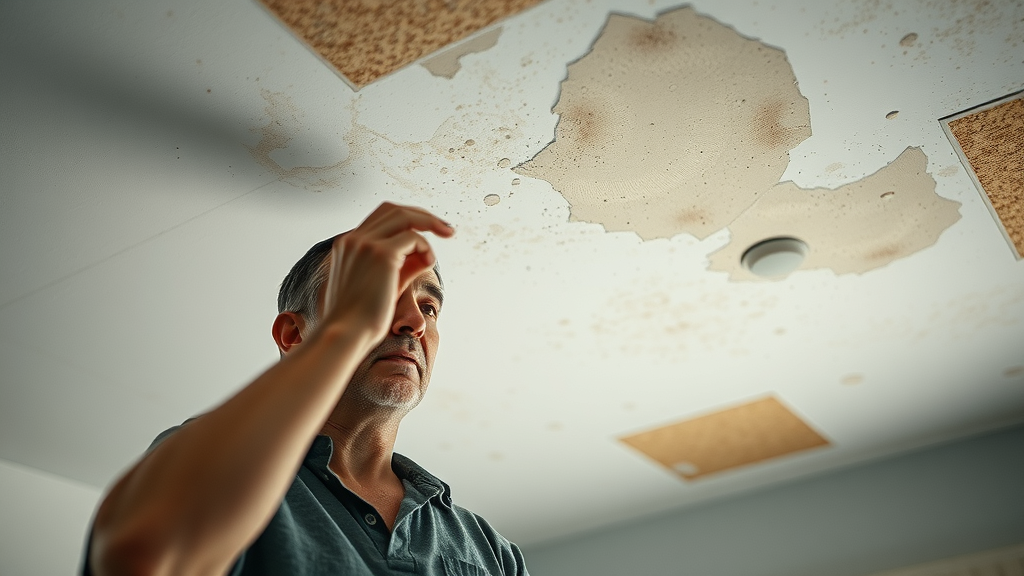
Why Does Mold Grow After Water Damage?
When water seeps into your home—from a storm, flood, burst pipe, or even a minor water leak—it creates the perfect environment for mold growth. Mold spores are always present in the air, but they only begin to colonize when they land on moist organic material and have a steady food source. Materials like wood, drywall, carpet, and insulation absorb water and don’t dry quickly, providing an ideal substrate for mold to grow. Humidity levels above 60% turbocharge this process, making the aftermath of water damage a race against time. The affected area can become a breeding ground for various types of mold colonies, especially if repairs are delayed.
While it may seem harmless at first, unchecked moisture allows mold to grow in hidden spaces, causing more severe mold damage and impacting your indoor air quality. Mold growth after water damage isn’t just unsightly—it can worsen health effects like asthma attacks or allergic reactions and, if allowed to spread, lead to costly damage restoration. Fast, decisive action is critical. If you notice moisture, musty smells, or discoloration anywhere in your home, you may be witnessing the early stages of a mold problem that requires immediate attention.
The Link Between Water Leak and Mold Growth
The connection between a water leak and mold growth couldn’t be clearer. Even a small or hidden leak from a roof, pipe, appliance, or wall can provide enough moisture for mold to thrive. Unlike flooding, which is obvious, slow leaks might go unnoticed for weeks or even months. During that time, mold grows beneath surfaces, behind baseboards, or in ceiling tile layers, far from your daily view. This hidden mold can silently cause significant mold damage, eating away at surfaces and releasing spores that degrade indoor air quality.
Once the source of water is established, it’s important to halt the leak, dry the affected area completely, and monitor humidity levels closely. If not, you could end up not only with visible mold but also with a widespread mold infestation that extends well beyond the initial point of water damage. Leaks near HVAC or under flooring can be especially tough to detect, making regular inspections essential for effective prevention and early remediation.
Signs of Mold Growth After Water Damage
Recognizing the earliest signs of mold growth after water damage is vital to stopping a minor issue from escalating. The most common signs include a persistent musty or earthy odor, discoloration or staining on ceilings, walls, and floors, and the appearance of fuzzy, dark, or brightly colored patches—even if they’re small. Mold can also show up as black, green, blue, or white spots in damp corners, on window sills, or behind furniture. Sometimes, signs of mold are more subtle: peeling paint, warped wood, or increased allergy symptoms like sneezing and coughing among family members can suggest mold growing even if it’s not immediately visible.
In homes with recent water damage, keep a close eye on bathrooms, basements, kitchens, and areas near pipes, since these are most likely to harbor mold. Mold grows aggressively in areas that stay damp or lack proper ventilation. Early detection allows for a targeted response, so if you notice any of these warning signs, do not ignore them—a rapid response is the best way to prevent an expensive mold remediation job down the line.
| Common Types of Mold Found After Water Damage | Typical Signs | Areas Most Affected |
|---|---|---|
| Aspergillus | Musty odor, discoloration | Ceilings, walls, insulation |
| Penicillium | Blue-green spots, musty smell | Carpets, wallpaper, HVAC |
| Stachybotrys (Black Mold) | Slimy dark patches | Wood, drywall, basements |
How Fast Can Mold Grow After Water Damage?
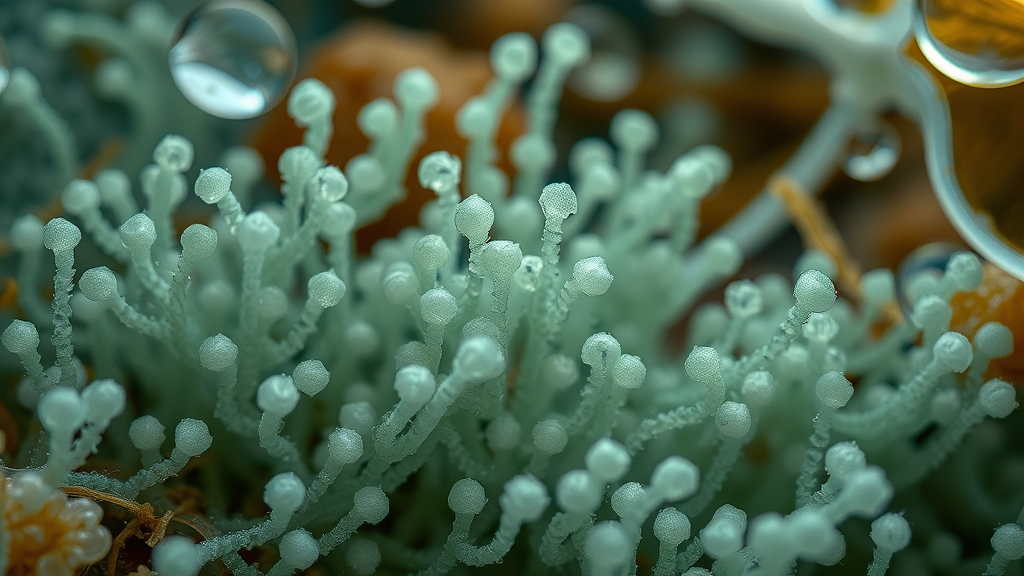
Timeline for Mold to Grow After a Water Leak
Many homeowners in Lexington, SC are shocked to learn just how quickly mold can grow after water damage. The clock starts ticking immediately after a leak or flood—mold growth can begin within 24 to 48 hours. That means if you experience a burst pipe, washing machine overflow, or roof leak, you have a very short window to dry out the area and prevent mold damage before a significant problem arises. Within three days, visible mold colonies can appear and start spreading across the affected area, making cleanup more difficult and expensive the longer you wait.
This rapid timeline means that any delay—waiting until the weekend, skipping a professional inspection, or not thoroughly drying damp spots—might lead to extensive mold infestation. Once mold gains a foothold, it sends out spores to colonize new damp areas, which can quickly include much more than the original point of water damage. Fast action is necessary: extract water, dehumidify, and monitor hidden spaces for early signs of mold to grow.
Critical Factors for Rapid Mold Growth
Several key factors influence how quickly mold grows after water damage. Humidity levels above 60% are a major trigger. Poor ventilation, dark and enclosed spaces, and the presence of organic material like wood, drywall, or carpeting all contribute to a faster mold to grow cycle. Hidden leaks—such as those behind walls or under bathroom floors—are especially risky, as they provide a stable environment for mold to flourish undetected. In Lexington, SC, seasonal storms and humidity can create lingering dampness, meaning every homeowner is at risk after heavy rain.
The rate of mold growth is also impacted by how much standing water is left, how quickly drying begins, and whether contaminated or porous materials (like ceiling tiles, cardboard, or fabric) are promptly removed. Mold grows best where cleaning and monitoring are neglected, so maintaining a regular maintenance schedule is essential for prevent mold. By understanding these critical factors, you’ll be more equipped to act quickly and reduce the likelihood of a costly and dangerous mold problem developing in your home.
Types of Mold That Grow After Water Damage

Identifying Different Types of Mold
Not all mold is the same. After water damage, it’s common to find several types of mold in a single affected area, each posing unique risks. Aspergillus often appears as a powdery or fuzzy patch ranging from gray to green; it can trigger allergic reactions or respiratory issues, especially in those with compromised immune systems. Penicillium has a blue or blue-green color and tends to spread quickly across water-damaged carpeting or wallpaper, sometimes releasing musty odors. The most notorious, Stachybotrys—commonly known as black mold—is dark, slimy, and can produce toxins that cause more severe health effects.
Proper identification matters because some species are more aggressive or hazardous than others, influencing which mold remediation methods should be used. Mold grows in a variety of colors and textures, but any visible or suspected growth after water damage should be treated seriously and investigated by professionals who can distinguish the exact strain and recommend targeted removal strategies. Trying to identify and treat these varieties without experience can leave behind sources for the mold to regrow or spread.
Hidden Mold and Mold Infestation Risks
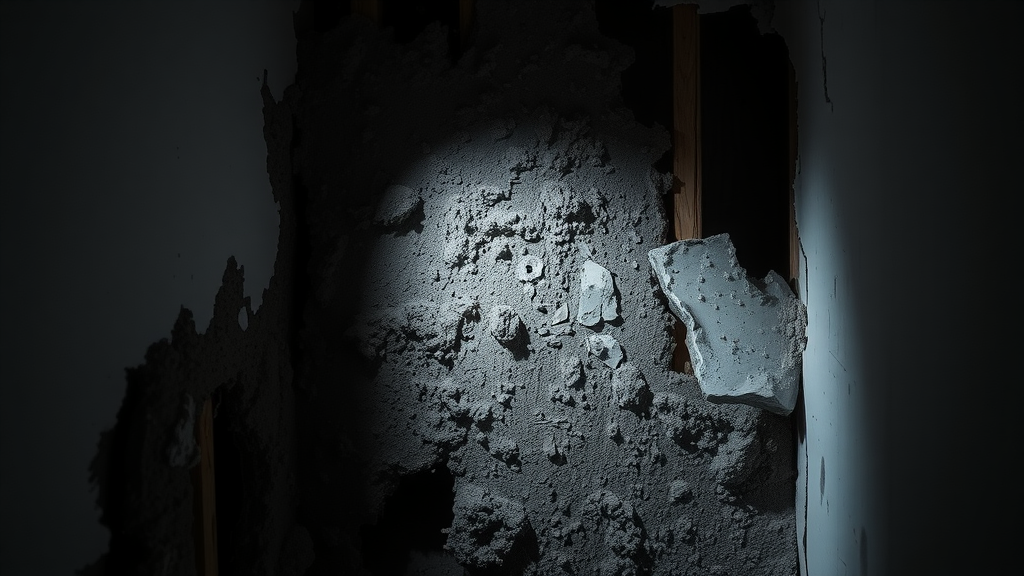
Hidden mold is often far more dangerous than visible outbreaks. After water damage, mold grows behind walls, under floorboards, inside insulation, and in HVAC ducts where moisture lingers. Even without clear signs of mold, spores can concentrate and multiply, leading to a mold infestation that releases toxins and allergens throughout the home. Mold problems of this kind are challenging to spot but can be detected by persistent odors, unexplained health symptoms, or subtle property changes like soft drywall, peeling paint, or warped wood.
The risks associated with hidden mold include more than just property damage; they can impact indoor air quality and cause significant health issues. The longer mold is allowed to remain hidden, the more extensive (and expensive) the remediation process becomes. If you’ve experienced any water event and suspect hidden mold—even if you can’t see it—professional inspection is imperative for identifying and preventing further mold damage in your home.
Health Risks from Mold Growing After Water Damage

When mold growing after water damage goes unchecked, the health consequences can be severe. While some people experience only mild allergic reactions—such as sneezing, eye irritation, or skin rashes—prolonged exposure can exacerbate asthma attacks, trigger chronic respiratory symptoms, and put young children, the elderly, or those with compromised immune systems at extra risk. Mold exposure is most dangerous for infants, potentially causing coughing, wheezing, or more serious illnesses if the source isn’t eliminated quickly.
Symptoms of exposure may worsen as mold spores spread through HVAC or ventilation systems, contaminating the whole house. Immediate action to remove mold and eliminate water damage sources is the best way to protect the health of everyone in your home. If you notice family members consistently showing symptoms when indoors—especially after water problems—consider professional evaluation to address possible hidden mold.
Detecting Mold Problems After Water Damage
Recognizing Signs of Mold Growth in Your Home
Early detection of mold problems can mean the difference between a simple cleanup and a costly, invasive remediation project. The most obvious symptom is a persistent musty or earthy smell, even if there’s no visible mold. Other telltale signs include discoloration on walls, ceilings, carpets, and especially in places with recent or previous water damage. Watch out for flaking paint, soft or warped building materials, and visible black, green, or white patches. These signs of mold might be concentrated near sinks, basements, windows, or areas that have recently experienced a water leak or flood.
Don’t ignore household allergies that flare up indoors—this can indicate the early stages of a mold infestation affecting your indoor air. Homeowners who maintain vigilance for these indicators—and act quickly—are less likely to experience extensive mold damage or health problems over time. Being proactive is your best defense against hidden mold and lingering moisture.
Assessing the Affected Area and Extent of Mold Damage
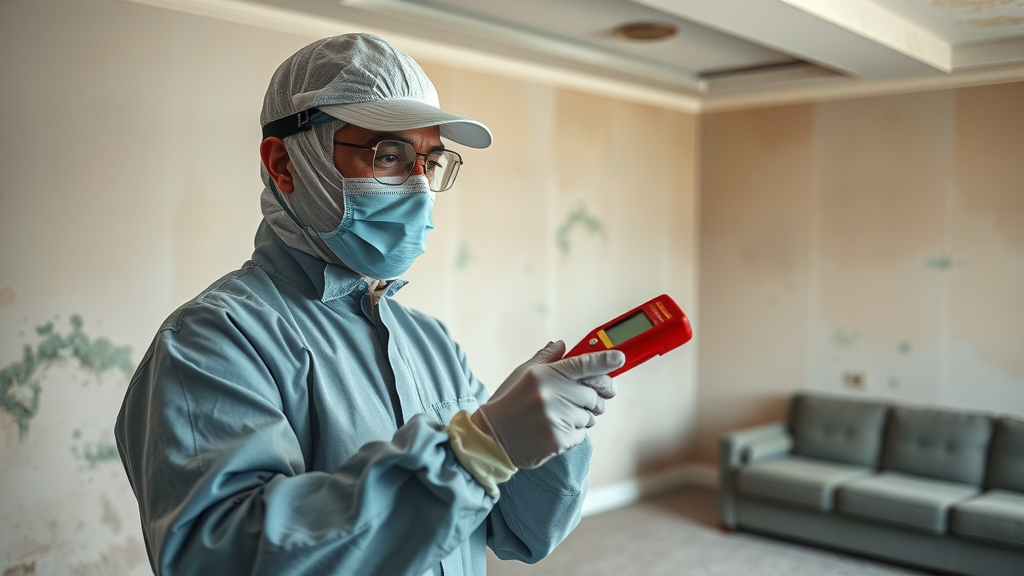
Once you suspect mold, it’s important to thoroughly examine the affected area to determine the extent of the damage. Inspections should include visible surfaces as well as hidden or less obvious spots, such as behind baseboards, beneath carpets, in ceiling tiles, or inside cabinets. Specialized equipment, like moisture meters or thermal cameras, can help identify dampness that may not be detectable by touch alone. For large or persistent mold problems, or where inaccessible mold is suspected, many homeowners in Lexington, SC turn to professionals who can provide accurate, comprehensive assessments.
Proper assessment ensures that remediation can successfully remove mold and prevent it from returning. If mold damage is present in multiple rooms or on more than a few square feet, professional intervention is strongly recommended to avoid incomplete cleaning or health risks during DIY attempts. Early, thorough assessment is the first step toward safe, effective mold damage restoration after any water incident.
Mold Remediation: Steps to Remove Mold After Water Damage
- Identify the affected area
- Stop the source of water leak
- Dry out all wet surfaces fast
- Remove and dispose of mold-infested materials
- Use safe cleaning solutions for mold remediation
- Prevent mold from returning with proactive steps
Professional Mold Remediation vs. DIY Approaches
When it comes to mold remediation after water damage, homeowners are often faced with a choice: tackle the cleanup themselves or call in professionals. For isolated, minor cases (such as surface mold on tile or in a small restroom), DIY mold remediation can be effective if you use proper safety gear, remove all contaminated materials, and ensure the area is completely dry. However, large or hidden mold infestations—especially after significant water damage—require professional expertise and specialized equipment to ensure thorough containment, cleaning, and air quality restoration.
Professional mold remediation includes assessment, containment to prevent the spread of spores, removal of affected materials (like drywall or insulation), and the use of HEPA air scrubbers. Technicians then sanitize all surfaces, dry out hidden spaces, and perform after-cleaning inspections to verify success. DIY approaches often miss hidden mold or don’t address the root cause—such as unresolved humidity or a hidden water leak—leading to regrowth. For major or recurring mold problems, professional service is always the safer, more effective solution.
A step-by-step look at residential mold remediation: Technicians in full protective gear isolate the area, remove affected drywall, operate air scrubbers, and perform detailed inspections to ensure all mold is eliminated. Interviews with experts underscore the importance of acting quickly and thoroughly after water damage.
Mold Remediation Tips from Experts
These proven tips from Lexington, SC mold experts will help you stay ahead of mold problems after water damage:
- Act quickly. The faster you address water damage and dry out the area, the less likely mold will grow.
- Remove porous materials. Items like insulation, carpet pads, and ceiling tiles can’t be fully cleaned and should be discarded if contaminated.
- Protect yourself. Always wear gloves, goggles, and an N95 mask during cleanup to avoid mold exposure.
- Fix water sources first. Repair leaks or flooding issues before starting remediation—or mold will return.
- Use approved cleaning solutions. EPA-registered mold removers are safest and most effective for home use.
- Get a professional inspection if the affected area is larger than 10 square feet, if mold keeps returning, or if anyone has health issues.
Preventing Mold Growth After Water Damage
How to Prevent Mold After a Water Leak or Flood
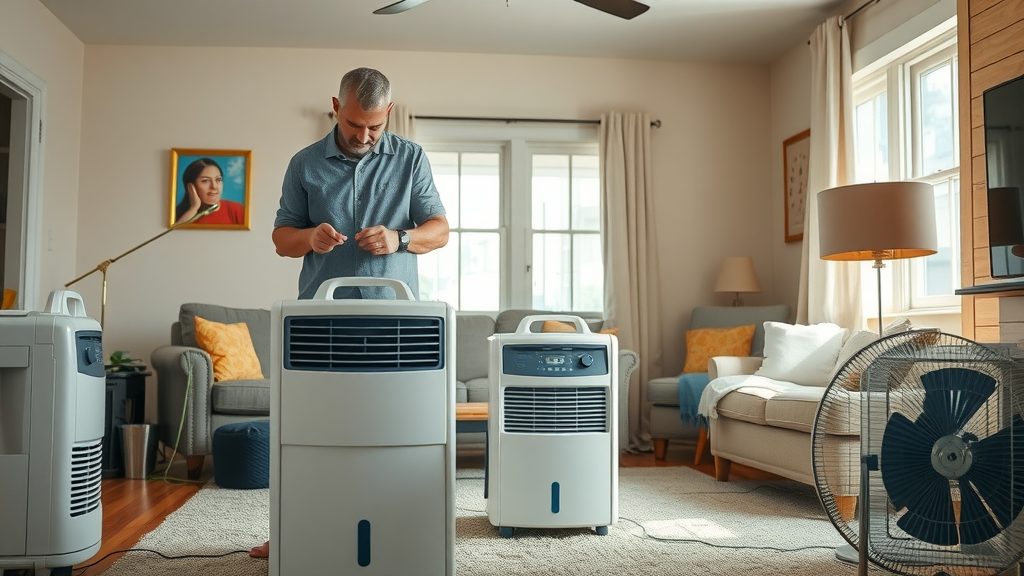
The key to prevent mold after water damage is to dry out affected areas as quickly as possible. Immediately after a leak, burst pipe, or flood, extract any standing water and use high-powered fans and dehumidifiers to reduce humidity levels as quickly as possible. Open doors and windows to increase ventilation, and remove any rugs, upholstery, or personal belongings that have soaked up water. Clean and disinfect all hard surfaces with anti-mold products, paying special attention to baseboards, window sills, and HVAC returns.
Monitor humidity with inexpensive meters, aiming to keep the indoor level below 55%. Inspect your property regularly for slow drips, especially in attics, basements, and near water heaters or HVAC systems. Check around areas prone to roof leak or plumbing issues and maintain gutters to direct rainwater away from the foundation. Quick cleanup and vigilance are your strongest defenses for preventing a recurring mold problem after water damage.
Indoor Mold Prevention for Lexington, SC Residents
Living in a humid climate like Lexington, SC means that indoor mold prevention requires persistent attention. In addition to fast drying and leak repairs, regular maintenance of HVAC, dehumidifiers, and bathroom exhaust fans helps keep moisture in check year-round. Clean gutters, inspect for roof leak vulnerabilities, fix foundation cracks, and seal windows to keep both rain and humidity out.
Invest in waterproofing for below-grade spaces and use moisture-resistant materials (like tile and closed-cell insulation) during renovations. Schedule annual inspections—especially after heavy storms or hurricanes—so you can spot water damage early and prevent a mold to grow scenario. Educating family members about how to spot discoloration, musty odors, or areas of persistent dampness will help catch problems before they escalate, keeping your home safer and healthier.
Watch as a homeowner responds immediately after water damage: Water is extracted, dehumidifiers and fans are set up, surfaces are disinfected, and regular humidity checks are performed. The video highlights the importance of fast, proactive action to prevent future mold issues in Lexington, SC homes.
People Also Ask About Mold Growth After Water Damage
How to get rid of mold after water damage?
To effectively remove mold after water damage, first fix the source of moisture—whether that’s a leak or a flood. Then, dry out the affected area using fans and dehumidifiers. Remove all porous or mold-infested materials such as drywall, carpets, or insulation. Clean all hard surfaces with an EPA-approved cleaner. Wear protective gear throughout to minimize mold exposure. For larger or hidden mold growth, call a professional mold remediation service for a thorough cleanup and prevention plan.
Can mold make a baby cough?
Yes, mold exposure can make a baby cough and present other respiratory symptoms. Babies and young children are more vulnerable to allergic reactions from indoor mold, and exposure can lead to coughing, wheezing, and in some cases, more serious health problems. Keeping your living space dry and clean after water damage is critical to protecting babies and sensitive individuals from mold’s health effects.
What does mold look like after water damage?
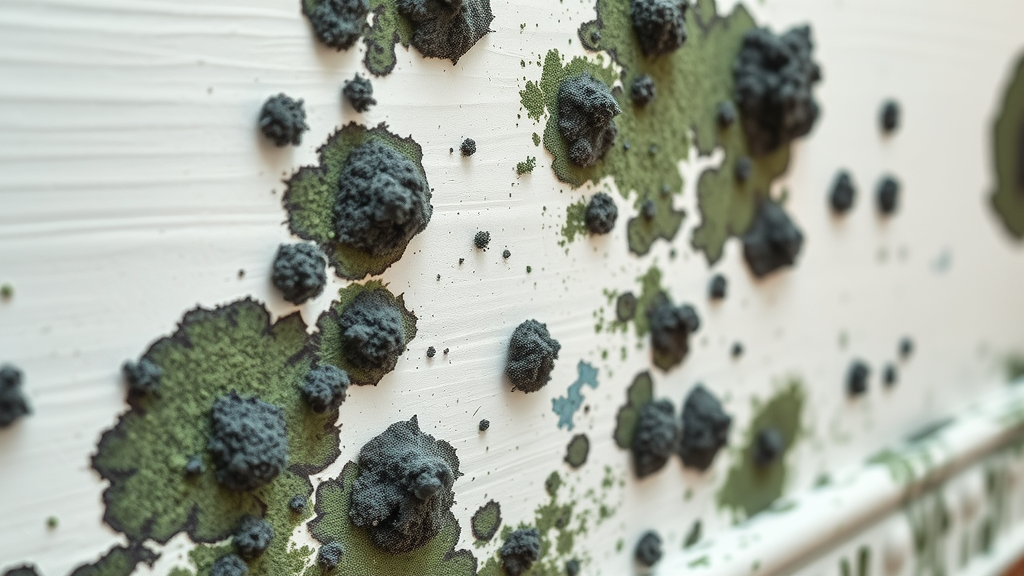
After water damage, mold may appear as fuzzy or powdery patches in black, green, blue, or even white hues. It often grows in clusters and can be found on walls, ceilings, carpets, baseboards, and behind furniture. Sometimes, the only initial hint is a water line with slight discoloration or a musty aroma before more dramatic mold to grow is visible. If you notice any of these characteristics, act quickly to stop further damage.
Will mold go away if you stop a leak?
Halting the source of a water leak is essential and will prevent new mold from growing, but existing mold won’t just disappear. The affected area must be dried, cleaned, and any contaminated materials removed. If left untreated, dormant spores could reactivate with future moisture, leading to a recurring mold problem. It’s best to remediate visible mold immediately—even after fixing the leak.
Frequently Asked Questions: Dealing with Mold Growth After Water Damage
- How long does it take for mold to grow after water damage?
- Is it safe to stay in a home with visible mold growth?
- Does homeowners insurance cover mold remediation after water damage?
- Can mold return after remediation?
Key Takeaways on Mold Growth After Water Damage
- Mold growth after water damage can begin in as little as 24 to 48 hours.
- Always address water leaks and hidden mold immediately.
- Professional mold remediation ensures thorough mold removal and prevention.
- Preventing mold requires vigilance and quick action after any water disaster.
Conclusion: Fast Response Is Key to Stop Mold Growth After Water Damage
Don’t wait—acting rapidly after water damage is your best defense against mold growth, property loss, and health hazards.
Water Damage Repair in Lexington, SC – Get Professional Help Now
If you’re worried about mold growth after water damage in Lexington, SC, professional help is just a call away. The experts at Palmetto Mold Experts offer thorough inspections, rapid water damage restoration, and proven mold remediation services. Get Water Damage Repair In Lexington SC today—because your health, your home, and your peace of mind are worth it!
Sources
- https://www.epa.gov/mold/mold-cleanup-your-home – US EPA: Mold Cleanup in Your Home
- https://www.cdc.gov/mold/cleanup.htm – CDC: Mold Cleanup After Disasters
- https://palmettomoldexperts.com/lexington-sc-mold-removal/ – Palmetto Mold Experts: Lexington, SC Mold Remediation
Mold growth after water damage is a critical concern for homeowners, as mold can begin developing within 24 to 48 hours of moisture exposure. (servicemasterrestore.com) To effectively prevent mold, it’s essential to promptly remove excess water, thoroughly dry affected areas, and maintain indoor humidity levels below 60%. (moldzerollc.com) Regular inspections, especially in moisture-prone areas like basements and attics, can help detect early signs of mold, such as musty odors or discoloration. (baltimore.pauldavis.com) If mold is suspected or visible, consulting professional mold remediation services is advisable to ensure safe and thorough removal. (removewater.com)
Act Now: Emergency Water Extraction Saves Your Property Fast
Did you know 1 in 50 homeowners file a water damage claim each year? That means water disasters strike far more often than most realize—and every minute matters. If you discover water flooding your Lexington SC home or business, waiting is not an option. Emergency water extraction is your first and most critical defense in saving walls, floors, and treasured belongings from lasting damage. This guide explains precisely why immediate action is so vital, what you can expect from the water removal process, and how to find trusted professionals for rapid recovery. Your property’s future hinges on what you do next—let’s get started.
Unveiling the Urgency: Why Emergency Water Extraction Can’t Wait
“According to the Insurance Information Institute, 1 in 50 homeowners file a water damage claim each year—swift action is your best defense.”
When it comes to water damage, every second counts. The longer excess water sits in your home or business, the deeper it seeps into walls, subfloors, carpets, and even the foundation. This can quickly lead to structural deterioration, persistent mold growth, and escalating repair costs that put your insurance policy to the test. Emergency water extraction is designed for these urgent moments—removing standing water rapidly to prevent the worst-case scenarios before they occur. Whether it’s a burst pipe, flood water from storms, or a failed sump pump, immediate action is crucial to minimize damage and facilitate a faster return to normal.
Neglecting instant emergency water removal can turn a manageable situation into a full-blown crisis. Water damage doesn’t just threaten the visible areas—it seeps behind drywall, under hardwood floors, and into crawl spaces where it often goes unnoticed until major structural issues or harmful mold colonies appear. That’s why calling a professional extraction service is your smartest move. Not only do certified agencies have the gear to remove the water faster than DIY methods, they also know how to identify and address hidden threats. In Lexington SC, rapid professional intervention means avoiding significant long-term costs and stress.
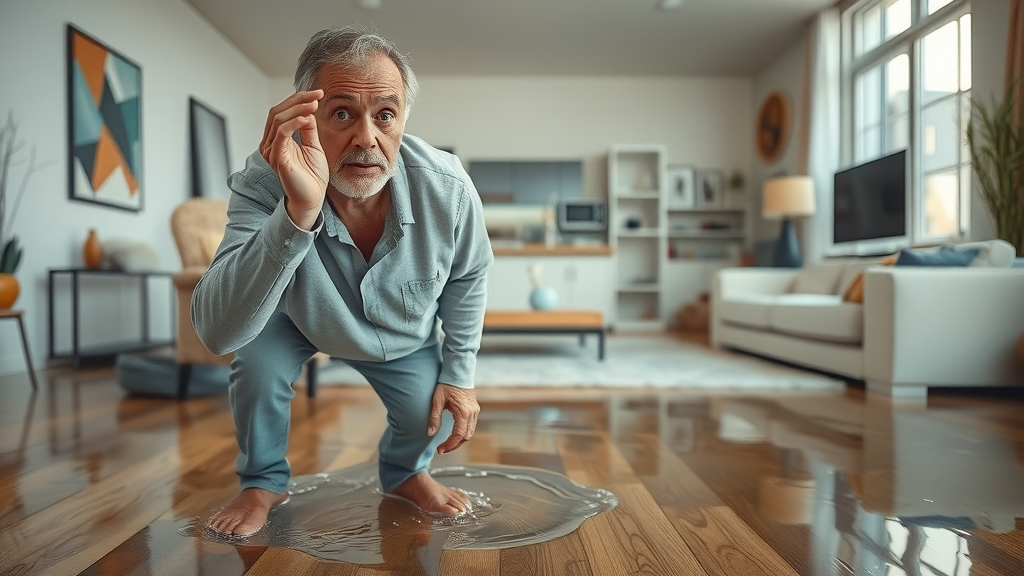
What You’ll Learn About Emergency Water Extraction
- How emergency water extraction prevents costly water damage
- The step-by-step emergency water removal process
- The critical role of professional water extraction services
- Answers to People Also Ask (PAA) water emergencies
- Actionable steps to connect with reliable extraction services in Lexington SC
Understanding Emergency Water Extraction and Water Removal
What is Emergency Water Extraction?
Emergency water extraction is an immediate response process designed to stop ongoing damage from sudden or accidental intrusions—like flood water, a burst pipe, or failed appliances. The goal is to block further damage by using specialized equipment to remove the water as swiftly and efficiently as possible. Professionals deploy high-powered pumps, industrial wet vacuums, and moisture meters to ensure no excess water is left behind, especially in hard-to-reach spaces. Unlike regular cleaning, emergency extraction tackles large volumes in a crisis, minimizing the health and structural risks associated with prolonged moisture exposure.
This prompt service is essential not just for homes, but for businesses that rely on safe, dry conditions to operate. By using this process, you’re preventing the spread of moisture into areas like insulation, electrical systems, and wooden structures—all of which can become breeding grounds for mold or present fire risks if left damp. Equally important, the water extraction process ensures the rest of your damage restoration plan is built on a dry, stable foundation.

How Water Extraction Differs from Water Damage Restoration
It’s easy to confuse emergency water extraction with damage restoration. Extraction is just the crucial first step—removing as much water as quickly as possible to prevent immediate devastation. In contrast, water damage restoration is a comprehensive, multi-stage process involving assessment, drying, sanitization, and the full repair of affected areas. While extraction gets water out, restoration gets you back to normal by addressing warped floors, damaged drywall, odors, mold issues, and more. Professional extraction services often bundle both into a single offering, using specialized gear to move through each phase efficiently. Knowing this distinction helps you understand what services are most urgent when disaster strikes.
Relying solely on DIY water removal, such as a shop vacuum or mop, is rarely effective for severe emergencies. Without the right tools and know-how, hidden moisture lingers, resulting in unseen deterioration or hazardous mold. That’s why water damage restoration professionals in Lexington SC deploy both emergency extraction and robust restorative practices. This layered approach ensures both quick relief from standing water and comprehensive repair of your property’s structure and safety.
The Importance of Fast Response in Water Damage Situations
Every hour that excess water remains in a building, the damage multiplies. Rapid emergency water extraction is about more than just saving floors or walls—it’s about protecting your health, safeguarding your investment, and maintaining safe living conditions. Mold can begin growing in as little as 24 hours following water exposure, and electrical hazards escalate in wet environments. Fast, professional extraction stops this chain reaction and launches the drying process—shaving days or even weeks off the recovery timeline. It’s this speed that insurance companies and disaster recovery specialists cite as a key factor for reducing claim costs and ensuring the water clean job is thorough enough to prevent repeat problems.
By reaching out to a proven extraction service immediately, you leverage cutting-edge technology (like industrial fans, dehumidifiers, and moisture meters) and specialized restoration techniques specific for Lexington SC climates. Quick action also creates a paper trail for your insurance company and provides an essential baseline for all water damage restoration efforts. Remember, the longer you wait, the greater the risk and higher the expense.
| Service | Primary Focus | Key Activities | Timeline |
|---|---|---|---|
| Emergency Water Extraction | Immediate water removal | Standing water extraction, initial drying, moisture detection | Hours to 1-2 days |
| Damage Restoration | Complete property repair | Drying, cleaning, sanitizing, repairs, mold prevention | Several days to weeks |
| Restoration Services | Full-scope recovery | Emergency extraction plus full rebuilding, insurance coordination | Start-to-finish timeline |
The Water Extraction Process: Step by Step
- Assessment and Identification of Water Damage: Professionals inspect the affected area to determine the amount of water, types of materials affected, and potential hazards. They use advanced moisture meters to ensure an accurate picture.
- Emergency Water Removal: High-powered pumps and vacuums extract standing water throughout the property, including basements, carpets, and under flooring, addressing both visible and hidden water.
- Drying and Dehumidification: Industrial fans and dehumidifiers target residual moisture, a process essential to preventing mold and long-term structural damage. The drying time varies depending on the amount of water and the affected materials.
- Disinfection and Sanitization: Technicians treat all impacted surfaces to kill bacteria and prevent odors, ensuring a safe, healthy environment before restoration continues.
- Ongoing Water Damage Monitoring: Routine checks and moisture tests confirm all levels are safe, safeguarding against recurring problems and helping you get back to normal.
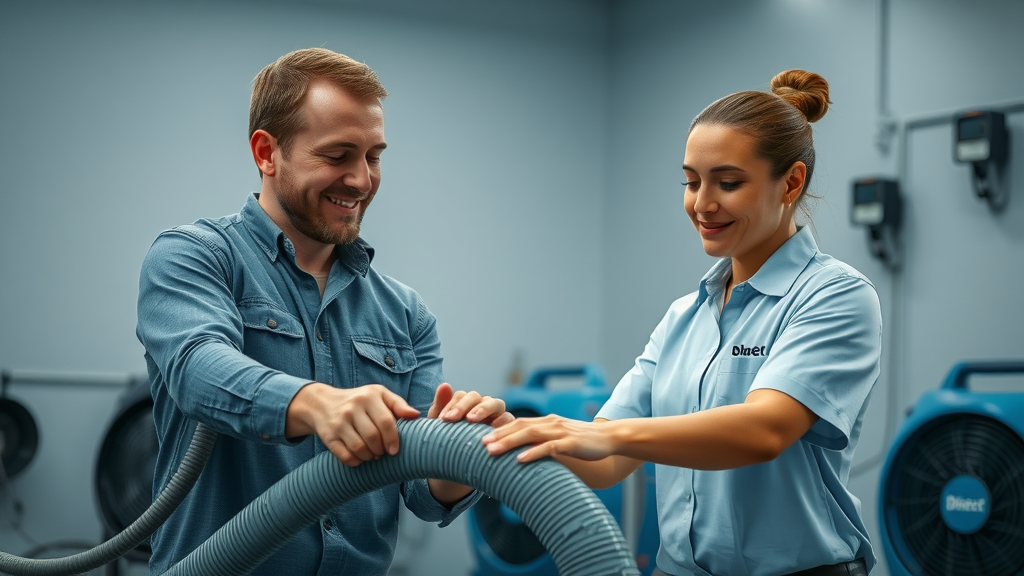
Why Professional Water Extraction Services in Lexington SC Matter
Expertise and Modern Equipment for Complete Water Removal
When disaster strikes, there’s no substitute for an experienced, certified team’s quick action. Professional water extraction services in Lexington SC arrive with a wealth of expertise—and critically, the right tools for the job. High-capacity pumps, rapid-drying fans, specialized dehumidifiers, and sensitive detection devices allow them to remove the water fully, including hidden moisture lurking beneath floors or inside walls. This technology, combined with years of specific damage restoration experience, means no excess water escapes detection. You get peace of mind knowing your property is in capable hands and on the fastest path to recovery.
“Attempting a DIY solution often leads to incomplete water removal and hidden damage—professional intervention is a must.”
Not only does a trusted extraction service bring the best gear, they also tailor their removal process and drying strategies to your property’s unique needs. They mitigate health hazards from contaminated water or missed moisture pockets, ensuring safety for your family or business. Don’t take chances with shortcuts—invest in proven restoration services and safeguard your investment.
24/7 Emergency Water Extraction Service for Immediate Action
Water emergencies rarely happen during business hours. That’s why leading water extraction services in Lexington SC offer true 24/7 rapid response. The moment you discover a crisis, trained dispatchers coordinate technicians straight to your door—ready to assess, extract, and launch the drying process before the damage spreads. This around-the-clock commitment is a hallmark of professionalism and has helped countless homeowners and commercial enterprises dodge devastating repair bills. When every minute matters, it pays to have a team whose only job is to put your water damage emergency at the front of the line.
Furthermore, immediate intervention helps with record keeping for insurance policy claims, giving you the documentation and confidence to pursue support if you have flood insurance or disaster recovery coverage. The faster you act, the faster your property can return to safe, functional condition.
How Restoration Services Prevent Mold and Long-Term Damage
One of the most destructive aftereffects of water emergencies is mold. In just 24–48 hours, lingering dampness creates perfect conditions for rapid mold growth—threatening health and inflicting exponential damage. Professional water extraction services go beyond simply removing standing water; they use moisture meters and specialized drying to zero in on hidden wet spots behind drywall, under floors, and within HVAC systems. Their precisely calibrated process ensures every drop is gone—dramatically reducing both mold risk and the chances of costly, future restoration work.
Top-tier restoration services also treat at-risk areas with antimicrobial solutions and conduct thorough air and surface quality tests before project completion. This level of care is what brings your property back to normal and keeps your family or business safe from the unseen dangers of post-flood contamination.

People Also Ask About Emergency Water Extraction
How to obtain water in an emergency?
In most emergencies, obtaining clean water for consumption is crucial. If your water supply is compromised due to a water emergency or flooding, use bottled water whenever possible. If that isn’t available, collect water from a reliable source—such as a covered well, rain collection, or melting ice. Always purify water before use: boiling is best, but water purification tablets or household bleach (without additives) are effective for killing bacteria and viruses in a pinch. Remember, handling a water emergency in your property requires a different approach, as removing the water promptly helps protect your health and structure.
What should I do immediately after water damage?
The most important action after water damage is safety. Turn off power in affected areas to minimize risk of electric shock, then evacuate if necessary. Contact a trusted emergency water extraction service right away—every minute counts to prevent structural damage and mold growth. Take photos of the damage for your insurance company and remove valuable items from direct water exposure if you can do so safely. Leave the bulk of the water removal and drying to professionals, as they have equipment and training for thorough and safe recovery.
Where can I get water in an emergency?
If you need water for drinking or cleaning in a disaster, bottled water is safest. Emergency shelters, distribution points set up by the city, or friends’ homes outside the affected area are good options. Avoid using tap water if your provider warns of contamination. If those options aren’t available, boil water from a trusted lake, river, or well for at least one minute to kill pathogens, or use chemical purification. In a property disaster, a prompt response by professional water removal teams will handle contaminated indoor water quickly and efficiently.
What is the best way to purify water in an emergency?
Boiling remains the safest way to purify water in a water emergency situation. Bring water to a rolling boil for at least one minute (three if at high altitude) to kill bacteria, protozoa, and viruses. If boiling is not possible, use water purification tablets, iodine, or chlorine bleach as directed—but never combine purification methods unless advised by emergency officials. Always filter visibly dirty water through a clean cloth or coffee filter first. For water damage restoration in your property, sanitation involves not just water quality but also cleaning affected surfaces with professional-grade antimicrobial agents.

Key Features of Trusted Emergency Water Extraction Service Providers
- Licensed and insured professionals
- Rapid-response teams
- Comprehensive water removal and damage restoration
- Advanced drying technology
- Full-service damage restoration and insurance coordination
Common Mistakes to Avoid After Water Damage
- Delaying emergency water extraction
- Attempting water removal without professional involvement
- Ignoring potential for mold growth
- Underestimating hidden water damage restoration needs

FAQs About Emergency Water Extraction Services
- How quickly should emergency water extraction begin after damage?
Immediate response is essential—ideally extraction should start within hours of discovering water damage. The sooner the process begins, the lower the risk of long-term structural harm or mold development. - Can water removal services help prevent permanent property loss?
Yes, professional water removal drastically reduces the risk of irreversible damage to your home or business, by quickly removing water and thoroughly drying affected areas before materials degrade. - Is DIY damage restoration ever recommended?
DIY methods are generally not sufficient for significant water emergencies. They often miss hidden water and may not meet insurance company standards. Professional intervention is strongly advised for effective restoration and documenting your losses. - How are water extraction services billed or covered by insurance?
Many water extraction services coordinate directly with your homeowner’s or flood insurance provider. Coverage and out-of-pocket costs will vary based on your insurance policy, the cause of the incident, and the level of service required.
Key Takeaways: Emergency Water Extraction and Water Damage Repair
- Acting immediately is critical to minimize water damage.
- Professional emergency water extraction ensures thorough water removal.
- Trust only licensed providers for complete restoration services.
Conclusion: Save Your Lexington SC Property with Certified Emergency Water Extraction
Don’t put your property or peace of mind at risk. Emergency water extraction is your fastest route to recovery and protection against costly long-term damage. Get help now—before it’s too late.
Ready For Immediate Help? Contact Water Damage Repair In Lexington SC
Sources
- https://www.iii.org/fact-statistic/facts-statistics-water-damage – Insurance Information Institute
- https://palmettomoldexperts.com/lexington-sc-mold-removal/ – Palmetto Mold Experts
- https://www.epa.gov/mold/mold-cleanup-your-home – EPA: Mold Cleanup
- https://www.cdc.gov/healthywater/emergency/index.html – CDC: Emergency Water Supply
When facing water damage, immediate action is crucial to prevent further harm to your property. The article “Emergency Water Extraction Services | 24/7 Fast Water Removal” (puroclean.com) provides comprehensive insights into the importance of swift water removal and the processes involved. Additionally, “Water Removal and Water Extraction | Servpro Industries, LLC. | SERVPRO” (servpro.com) offers detailed information on professional water extraction services and their role in mitigating damage. These resources will equip you with the knowledge needed to act promptly and effectively in water damage situations.
Water Damage Prevention Tips That Save Your Home Today
Did you know? According to the Federal Emergency Management Agency, just one inch of water in your home could easily cause over $25,000 in damage. Most Lexington, SC homeowners don’t realize the true risks of water damage until it’s too late—often after a costly insurance claim and significant home repairs. This guide gives you the most effective water damage prevention tips to keep your home safe, secure, and dry no matter what challenges arise.
Shocking Water Damage Statistics Every Homeowner in Lexington SC Should Know
Water damage is a more common threat to Lexington, SC homes than most residents imagine. Statistics reveal that nearly one in fifty insured homes will experience a water loss or damage claim annually. In fact, next to wind and hail, water damage is the leading cause of property insurance claims in the U.S. for homeowners—a truly alarming reality when you consider the average claim runs into the thousands of dollars. The risk is even higher in regions like Lexington, where storms, high humidity, and aging infrastructure increase vulnerability.
This is not just about the big disasters, such as river floods. Everyday events like leaking pipes, malfunctioning sump pumps, and even roof seepage after a single powerful storm can lead to water intrusion, resulting in structural damage and costly repairs. The worst case scenario? Undetected leaks that persist for an extended period, resulting in mold infestations, irreparable harm to drywall and floors, and eligibility issues with insurance policies. Knowing these risks and addressing them with water damage prevention tips is essential for keeping your home safe, your insurance claim process smooth, and your repair bills manageable.
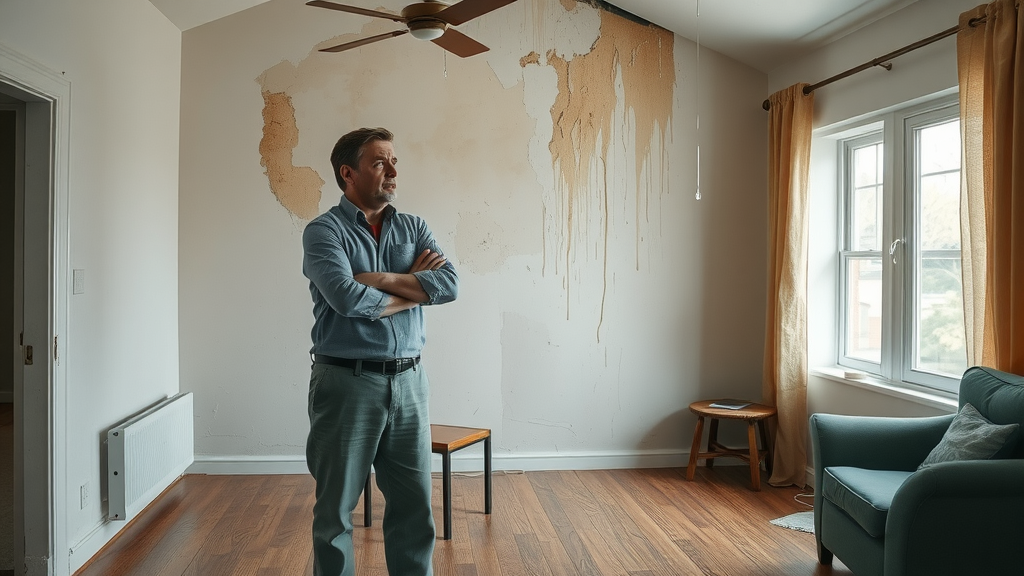
Why Water Damage Prevention Tips Are Crucial for Your Home Safety
The need for reliable water damage prevention tips is not just about peace of mind—it’s about safeguarding your long-term investment. Water intrusion threatens damage to your home at a structural level, impacts living conditions, and can create uninsurable risks if not addressed quickly. Even the most minor water leak or unnoticed moisture can compromise your home’s safety, leading to problems like electrical shorts, weakened foundations, or the hidden growth of dangerous black mold.
Implementing water mitigation strategies, like regular roof inspection or installing a main water shut off valve, is critical to minimizing loss and preventing catastrophic events. Insurance claim issues often arise if the homeowner is found negligent, such as ignoring leaks for an extended period or failing to maintain sump pumps or water leak detectors. By taking an active approach, you avoid the difficult scenario of fighting denied insurance claims and reduce potential health and financial risks. Adopting these prevention tips today is an investment in your family’s safety and the protection of your most valuable asset—your home.
What You’ll Learn: Essential Water Damage Prevention Tips for Lexington Residents
- How to prevent water damage in your home
- Signs of water leak and water loss
- Immediate water mitigation steps
- When to file an insurance claim
- Keeping your home safe and sound
Understanding Water Damage: Causes, Risks, and Long-Term Impact
True water damage is rarely obvious in the beginning. Many Lexington, SC homeowners discover the real costs of water intrusion only after an extended period of undetected leaks or poor maintenance. Issues can start with a minor water leak under a sink, an old sump pump failing during a downpour, or poor drainage near the home’s foundation. Without attention, such problems often escalate into significant damage to your home—including structural damage, ruined flooring or drywall, compromised wiring, and the hidden growth of toxic mold.
The risks are not limited to your immediate comfort. Permanent water infiltration can lead to higher insurance premiums, value loss, and even the denial of future insurance policies or claims. For Lexington residents, water damage often equals insurance claim challenges, mold remediation bills, and the pain of “what could have been prevented.” Knowing the causes, acting quickly, and keeping an eye on your home’s systems are non-negotiable parts of responsible homeownership.

Common Causes of Water Damage
Several everyday factors contribute to unwanted water intrusion in Lexington, SC homes. Roofs that are missing shingles or have been poorly maintained represent a major pathway for rainwater to enter and cause hidden damage for an extended period. Similarly, clogged or sagging gutters can force rainfall to pool along the foundation, setting the stage for costly repairs. Another frequent cause includes leaking pipes or failed plumbing joints, with water loss often going unnoticed until the signs are unmistakable—swollen floors, peeling paint, or unexplained musty odors.
Appliances are also culprits for water damage. Water heaters, dishwashers, washing machines, and even HVAC units can develop slow leaks, leading to puddling or hidden dampness behind walls. Even newer homes are at risk if sump pumps are not properly maintained, leak detectors are absent, or poorly graded landscaping directs water toward the house instead of away from it. Knowing these vulnerabilities helps you proactively protect your home and prepares you to respond quickly, minimizing the risk of denied insurance claims and costly water damage repair.
The Extended Period: Hidden Risks of Delaying Water Mitigation
Failing to address water issues quickly—even minor leaks or noticeable drips—can have serious long-term consequences. Water left to soak into drywall, wooden studs, or subflooring for an extended period promotes the growth of hazardous mold spores and weakens your home’s structure. Moisture that lingers increases the risk for rot, electrical faults, and even irreversible damage to insulation and finished surfaces. The longer you wait, the harder it becomes for your homeowners insurance policy to cover the resulting damage claim.
In Lexington, insurance claim adjusters frequently note in their investigations whether immediate water mitigation steps were taken. If not, homeowners may be denied coverage for “negligence”—leaving you to pay for expensive repairs out-of-pocket. Fast action is essential to prevent your home safe from escalating issues—turning off the main water valve, promptly fixing the source, and beginning the drying process within the first 24 hours whenever possible. Proactivity not only protects your home but supports a successful outcome should a claim become necessary.
The True Cost of Water Loss and Insurance Claims
Hidden water loss can be devastating—both financially and emotionally. It’s easy to underestimate how much a single incident can cost. Water loss doesn’t just require replacing ruined carpeting or patches of drywall; the full cost may include structural repairs, furniture replacement, professional remediation for mold, and even hotel expenses if your home becomes temporarily uninhabitable. The pain is compounded if you’re forced to file an insurance claim that gets denied due to lack of documentation or delayed response.
Insurance claim processes are complex, with policies often containing strict language around prompt reporting and maintenance responsibilities. Homeowners in Lexington, SC must read their policies carefully, documenting every step taken to mitigate water damage. By following proven water mitigation steps and maintaining accurate records, you increase the likelihood your damage claim will be honored and reduce your personal liability for related loss.
“A single inch of floodwater can cost you upwards of $25,000 in damage to your home – don’t wait until it’s too late.”
10 Proven Water Damage Prevention Tips to Keep Your Home Safe
Prevention is always the best defense. By acting before water strikes, Lexington residents can dramatically reduce the likelihood of a costly water damage claim and keep their homes dry and comfortable. Here are the top 10 water damage prevention tips every homeowner should implement to safeguard against water loss, panic-filled insurance claims, and extensive repairs.
- Inspect Your Roof and Gutters Regularly: Check for missing or cracked shingles, and clear out leaves and debris.
- Check for Plumbing Leaks and Water Loss: Keep an eye on pipe joints, faucets, and appliance hookups for signs of moisture.
- Install a Sump Pump and Maintain It: Ensure your sump pump is working before storms hit, testing it at least twice a year.
- Seal Windows and Doors Properly: Use weatherproof caulking to stop rainwater from seeping in.
- Grade the Landscape Away from the Foundation: Ensure the soil slopes away from your home to avoid basement leaks.
- Test Your Water Leak Detectors: Place sensors in high-risk areas, like basements, kitchens, or near water heaters.
- Clean and Maintain HVAC Units: Regularly check for blockages, leaks, or condensation issues.
- Know Your Main Water Shut-Off Valve Location: In an emergency, shutting off the water main stops further water loss immediately.
- Invest in Water-Resistant Building Materials: Consider tile, concrete board, or sealed flooring in lower-level rooms.
- Keep an Emergency Water Mitigation Kit: Stock up on tarps, towels, a wet/dry vac, and portable fans for speedy response.

Water Mitigation Strategies: Acting Fast to Prevent Water Damage
Even with the best intentions and consistent maintenance, water emergencies can still occur. The key to limiting damage to your home—and ensuring the success of an insurance claim—lies in rapid water mitigation. This means understanding the steps to take as soon as water is discovered, and knowing when to escalate to professionals for water mitigation or repair. The sooner you address the problem, the more likely you are to prevent secondary issues like mold and foundation damage.
Always keep critical supplies at hand, know your main water valve location, and ensure your sump pump is operational, especially during storm season. The first moments after discovering water intrusion matter most, not merely for minimizing the visible mess but for safeguarding walls, insulation, and your family’s well-being. Create a plan and rehearse it with your family—quick coordination limits the loss and increases your peace of mind.
What To Do Immediately After Discovering Water Damage
The priority when water is discovered is to shut off the water main if possible and move valuables to a dry area. Next, use a wet-dry vacuum and towels to soak up standing water, and set up fans or dehumidifiers to reduce the moisture level. Contact a professional for water mitigation if the area affected is large, if you suspect mold, or if sewage is involved. Document the damage carefully (take clear, time-stamped photos) and keep all receipts from supplies used—you’ll need this evidence should you file a damage claim with your insurance policies.
Don’t attempt repairs that involve your electrical system or significant reconstruction unless you’re trained to do so. Mold can develop rapidly, within 24–48 hours after water exposure. Follow up with your insurance provider to see if immediate restoration services are covered. By acting quickly and systematically, you keep your home safe, improve your claim chances, and limit both the financial and health-related loss from water damage.
When and How To File an Insurance Claim for Water Damage
Should your efforts at water mitigation fall short or if the loss is extensive, it’s critical to file an insurance claim as soon as possible. Begin by reviewing your homeowners insurance policy to ensure your specific type of water damage is covered—certain policies exclude damages caused by gradual leaks or lack of maintenance. Contact your provider immediately with detailed information about the incident, including the time, cause, and steps you took for immediate mitigation.
Documenting the process is essential: keep clear records of all communications with your insurer and service professionals. Take photographs and videos of all visible damage, including appliances like water heaters or sump pumps involved in the problem. Provide your insurance adjuster with every receipt and service invoice, and don’t discard damaged items before approval. Acting swiftly not only limits water loss but helps you move through the claim process efficiently, resulting in a higher chance of having your damage claim paid out quickly.
Swift action not only limits water loss but may also speed up the insurance claim process.” – Palmetto Mold Experts
| Prevention Measure | Estimated Cost | Effectiveness | Maintenance Frequency |
|---|---|---|---|
| Roof Inspection | $150-$400 | High | Yearly |
| Sump Pump | $700-$1500 | High | Twice a Year |
| Leak Detectors | $50-$150 | Moderate | Biannually |
Expert Answers: People Also Ask About Water Damage Prevention Tips
How can I prevent water damage?
- Regular inspections
- Quick repairs
- Proactive water mitigation
- Proper grading
- Sump pump maintenance
Preventing water damage starts with consistency. Schedule regular checks of your roof, gutters, plumbing, and appliances to spot leaks early. Tackle repairs immediately—delays often lead to larger structural damage and denied claims when you eventually file for insurance. Water mitigation is more than clean-up after the fact; invest in water leak detectors, slope your lawn away from your house, and always keep your main water shut off valve accessible. Maintaining your sump pump and HVAC reduces surprise failures—the few dollars spent now could prevent thousands in water damage repair down the road.

What to spray to prevent mold after water damage?
- EPA-registered mold inhibitors
- Bleach solution (for non-porous surfaces)
- Professional-grade fungicidal sprays
Mold prevention is essential after water mitigation. For best results, act quickly—mold can begin developing within 24–48 hours. Use an EPA-registered mold inhibitor spray on all at-risk surfaces, particularly drywall, wood, and flooring. For small, non-porous areas, a 1:10 dilution of household bleach is effective. For more severe cases or to protect your home safe, consider hiring professionals who use commercial-grade fungicidal sprays that eliminate spores and provide a protective barrier. Always ventilate your home thoroughly during treatment, and consider running a dehumidifier to keep moisture levels low.
How do I keep water from damaging the foundation of my house?
- Ensure proper drainage away from home
- Install and maintain gutters
- Repair cracks and seal foundation
- Use landscaping to direct water
Keeping your foundation protected is a core part of all water damage prevention tips. The first line of defense is properly graded landscaping—your yard should slope away from your foundation to divert rainwater and melted snow. Clean and maintain gutters and downspouts so water is carried safely away from your home. Inspect and seal cracks in your foundation walls annually to block seepage. You can also plant flower beds or install a French drain system as a way to further redirect water away from the house, making this one of the best ways to prevent costly flood damage and keep your family’s sanctuary strong for years to come.
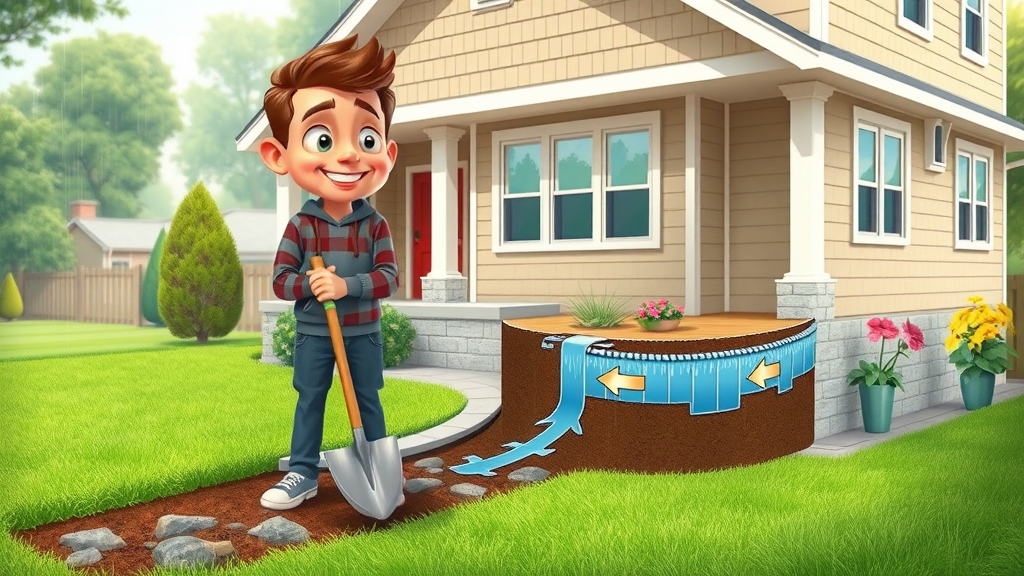
How long until water damage causes mold?
- Mold begins to grow within 24–48 hours after water intrusion
Speed is key when water damage occurs—mold spores are everywhere and only need a damp environment to flourish. In most cases, visible mold forms within 24 to 48 hours after a water leak or flood. That’s why immediate water mitigation (removing standing water, drying soaked materials, and lowering humidity) is so critical. If your home has experienced water loss, monitor for musty odors or discolored spots on walls and ceilings, and call in professionals at the first sign. Addressing the issue early keeps your home safe and healthy—and helps ensure your insurance claim remains valid.
Key Takeaways: Keep Your Home Safe with Water Damage Prevention Tips
- Prevent water damage with regular maintenance and fast response
- Act quickly: water mitigation is time sensitive
- Use a combination of monitoring, home improvement, and professional help
Frequently Asked Questions: Water Damage Prevention Tips
- How can water mitigation help prevent costly repairs?
- Are water leak detectors really worth the investment?
- What is the difference between water loss and water damage?
- Will my insurance claim be affected if I act slowly?
Conclusion: Protect Your Home with Actionable Water Damage Prevention Tips
Act Today with These Water Damage Prevention Tips for Lexington, SC
- Inspect your home, respond quickly to leaks, and embrace regular maintenance to keep your home safe.
- Don’t wait—take steps today to prevent water loss, structural damage, and insurance complications tomorrow.

Need Help With Water Damage? Contact Water Damage Repair in Lexington SC
Water Damage Repair In Lexington SC –https://palmettomoldexperts.com/lexington-sc-mold-removal/
Watch: Fast Water Damage Prevention Tips in Video
See real-life demonstrations of the best water mitigation techniques, from stopping leaks to using your main water shut-off valve. Emergency scenarios in Lexington SC homes show step-by-step solutions you can apply right now.
Watch: Sump Pump Maintenance and Water Mitigation Best Practices
Follow along for maintenance routines that keep your sump pump reliable—plus expert tips for water mitigation and leak prevention in every Lexington home.
Sources
- https://www.fema.gov/citizen-responders/water-damage-repairs – FEMA: Water Damage and Repairs
- https://www.iii.org/fact-statistic/facts-statistics-water-damage – Insurance Information Institute: Facts + Statistics: Water Damage
- https://www.epa.gov/mold/mold-cleanup-your-home – EPA: Mold Cleanup in Your Home
- https://palmettomoldexperts.com/lexington-sc-mold-removal/ – Palmetto Mold Experts: Lexington, SC Mold Removal
To further enhance your understanding of water damage prevention, consider exploring the following resources:
-
“11 Proven Tips to Safeguard Your Home Against Water Damage” (unicainsurance.com)
-
“5 Tips to Help Prevent Water Damage in Your Home” (homefirstagency.com)
These articles provide comprehensive strategies and practical advice to help you protect your home from potential water damage.
Don’t Make This Mistake in Flood Damage Repair Lexington
Did you know that just an inch of floodwater can cause more than $25,000 in damages? For homeowners in Lexington, acting fast and getting professional help can mean the difference between a swift recovery and thousands lost to preventable problems. This guide reveals the single most expensive mistake to avoid and how to ensure your home is restored the right way.
Why Flood Damage Repair Lexington Requires Urgent, Expert Action
Flood damage repair in Lexington is not a task you can afford to delay or do halfway. The main keyword is flood damage repair lexington for a reason: when water enters your property, it doesn’t just ruin floors and furniture. It seeps deep into walls, insulation, and framing, putting the very structure of your home or business at risk. As soon as flooding occurs, the clock starts ticking for mold growth, which can take hold within 24-48 hours, making every moment count if you want to avoid health hazards and escalating repair costs.
If you decide to take the DIY route or rely on a non-specialized provider, you risk missing critical steps in water damage restoration—often resulting in hidden moisture issues. Because flood waters in Lexington frequently contain contaminants, including those from potential sewage backups or black water, professional-grade water restoration is absolutely necessary. Experience from leading providers like Paul Davis restoration services and ServPro demonstrates that thorough, certified cleanup and damage repair saves property owners thousands of dollars and costly recurring problems down the line.
“According to the National Flood Insurance Program, just one inch of floodwater can cause over $25,000 in damage to your home. Time is truly of the essence when it comes to flood damage repair lexington.”
What You’ll Learn About Flood Damage Repair Lexington
- The biggest mistake homeowners make during flood damage repair lexington
- Why professional water damage restoration and flood damage restoration is critical
- How Lexington restoration services can save you time and money
- Answers to top People Also Ask questions
- Why choosing expert damage restoration prevents future problems
Understanding Flood Damage in Lexington: Unique Local Challenges
Lexington, SC faces unique flood risks due to its combination of heavy seasonal rainfall, older residential infrastructure, and challenging soil conditions. The area is no stranger to flash floods and plumbing breakdowns, leading to widespread water damage in Lexington. Many homeowners assume that damage is limited to what they see, but hidden dangers beneath floors and behind walls often escape detection until they cause severe, costly issues over time.
Additionally, certain neighborhoods sit near flood-prone creeks or in low-lying zones, making them especially vulnerable to repeat water damage. Even a minor appliance leak, if left unaddressed, can escalate to full-blown damage repair, requiring expert attention from a Lexington-based restoration service. Damage cleanup after flooding demands a thorough approach, as lingering humidity can fuel extensive mold infestations and undermine long-term repairs. Ignoring these damage in Lexington warning signs could turn a manageable repair into a major loss.

Common Causes of Flood Damage in Lexington
- Weather-related water damage in lexington
- Plumbing failures and damage in lexington
- Leaking appliances leading to water damage repair
Weather is a leading culprit behind flood damage in Lexington, with intense storms causing water to pool and rise faster than many drainage systems can handle. In addition, failing pipes, old water heaters, and even small leaks under a sink may result in large-scale damage restoration needs if overlooked. Homeowners who respond swiftly by contacting a professional restoration service can save their property and avoid the massive costs that come with delayed action or incomplete repairs.
Why DIY Flood Damage Repair Lexington Often Fails
- Hidden moisture problems after damage cleanup
- Ineffective or incomplete restoration service
- Risks of mold and secondary damage restoration needs
One of the most frequent—and costly—mistakes is attempting a DIY approach to flood damage repair lexington. Surface water may seem easy to mop up, but it’s the hidden, absorbed moisture inside walls, subflooring, and insulation that can cause the most serious damage. Professional water damage restoration teams use specialized tools to detect and extract moisture that’s invisible to the naked eye, significantly reducing the likelihood of persistent problems like black mold. Without these technologies and processes, homeowners face a heightened risk of incomplete restoration and creeping secondary damage.
Moreover, DIY attempts rarely deliver the level of thoroughness needed for safe and lasting restoration service. You might achieve a quick cosmetic fix, only to discover a musty odor, peeling paint, or warped boards weeks later—signs that water is still present and actively damaging your investment. That’s why restoration professionals, leveraging the experience of providers such as Paul Davis restoration, focus on comprehensive water damage repair and ongoing moisture monitoring as a core part of their process.
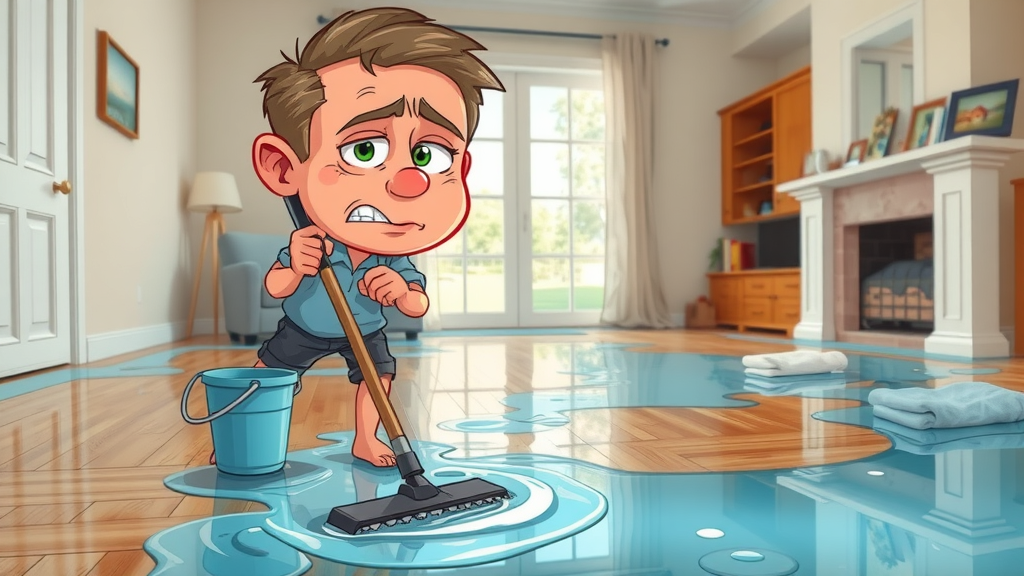
How Professional Flood Damage Repair Lexington Works
Choosing a professional for flood damage repair lexington ensures every part of your home or business is inspected, dried, cleaned, and restored to industry standards. From initial assessment to the final checks, the restoration process is meticulous and methodical. Trained crews from companies such as Paul Davis and ServPro rely on advanced equipment to quickly remove water, dry surfaces, and mitigate risks of mold and structural damage.
Professional restoration services do more than just clean up: they document the extent of the damage for your insurance provider, recommend necessary repairs, and follow through with the entire restoration work until your property is truly back to normal. This comprehensive approach dramatically reduces the chances of repair callbacks, persistent dampness, or compromised structural integrity, giving property owners in Lexington peace of mind.
Step-by-Step Water Damage Restoration Process
- Inspection and assessment of water damage
- Water removal by restoration team
- Comprehensive damage restoration and cleanup
- Final water damage repair and prevention
Every effective flood damage repair begins with a detailed inspection. Restoration professionals identify all affected areas—including those hidden from sight—to develop a targeted action plan. Next, powerful pumps and vacuums extract standing water followed by industrial-grade dehumidifiers to remove lingering moisture from air and surfaces. Damage restoration experts clean and sanitize everything from carpets to drywall as part of the comprehensive restoration process. The final stage focuses on repairing and rebuilding damaged sections, using latest materials to ensure water damage in Lexington homes and businesses won’t face repeat problems.
| Step | Action | Importance |
|---|---|---|
| Inspection | Identify water damage in lexington | Prevents overlooked issues |
| Extraction | Remove all standing water | Reduces damage |
| Drying | Use industrial drying technology | Prevents mold |
| Repair | Restore damaged materials | Returns property to pre-flood state |

Water Damage Restoration Experts: Comparing Leading Lexington Providers
With so much at stake, selecting the right partner for flood damage repair lexington is critical. Industry leaders like Paul Davis, ServPro, and Local Restoration Service offer a range of restoration services—including 24/7 emergency response and free estimates—designed for every level of water or flood damage. The right provider offers not just equipment, but peace of mind through certified staff, prompt customer service, transparent communication, and a guaranteed restoration process that keeps your interests front and center.
Top-tier choices like Paul Davis Restoration stand out for their long-standing experience, comprehensive damage cleanup, and deep knowledge of local conditions. Home and business owners in Lexington gravitate towards these professionals because they consistently restore your property efficiently with superior results. When emergencies strike, fast action and expert intervention are your best shield against loss and escalating repair costs, so don’t settle for anything less than the industry’s most reputable service teams.
Why Choose Lexington’s Top Restoration Service Over Competitors
| Provider | Services Offered | 24/7 Emergency Response | Free Estimates |
|---|---|---|---|
| Paul Davis | Water & fire damage restoration, mold remediation | Yes | Yes |
| Local Restoration Service | Flood damage repair, water restoration | Yes | Yes |
| ServPro | Damage cleanup, restoration services | Yes | Yes |
“Our Lexington clients choose us for prompt, thorough damage repair and certified restoration services that are second to none.”
People Also Ask About Flood Damage Repair Lexington
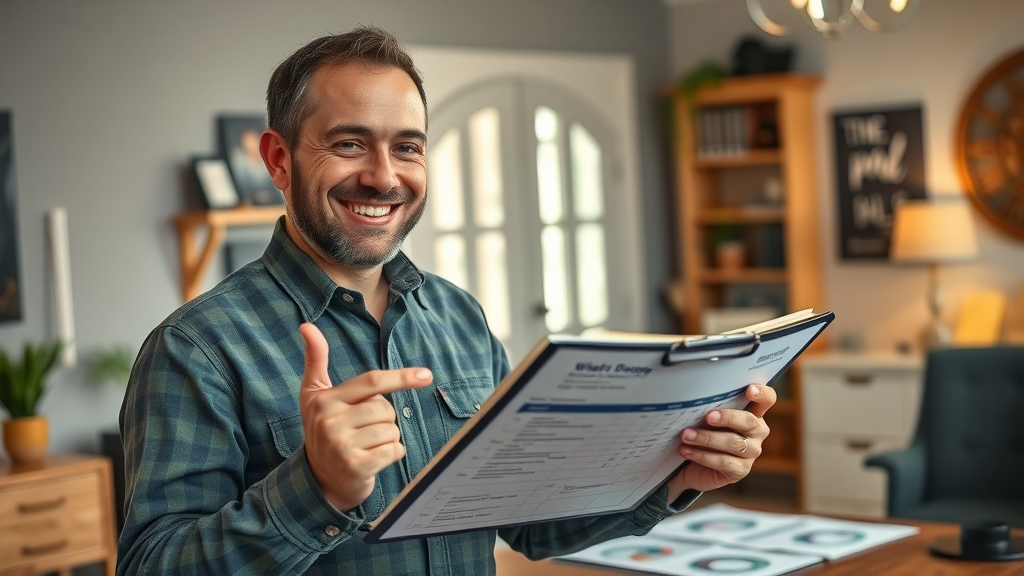
What is the typical cost for water damage restoration?
Flood damage repair lexington costs can range between $1,200 and $5,000 depending on the severity and area affected. Early intervention and professional restoration service help keep costs down.
The cost of water damage restoration can vary significantly, but acting quickly is always the best way to limit expenses. Minor water damage, like a localized leak, may be addressed for $1,200–$2,000, while whole-house flood restoration work can cost upwards of $5,000 or more if structural repairs and mold remediation are needed. All reputable providers—including Paul Davis and ServPro—offer transparent, upfront pricing and free estimates, ensuring there are no surprises for Lexington property owners faced with urgent repair needs.
Can flood damage be repaired?
Yes, flood damage can be fully repaired with prompt, professional damage restoration. Water damage restoration and thorough flood damage cleanup are key.
Absolutely—flood damage is not a permanent verdict for your home or business. When you choose a certified restoration professional in Lexington, the entire process ensures your property is dried, cleaned, sanitized, and rebuilt wherever needed. Solutions range from simple water extraction and air movement to comprehensive damage repair and reconstruction, restoring your peace of mind along with your property.
Who is the alternative to ServPro?
Alternatives to ServPro in Lexington include Paul Davis and other local restoration services specializing in water damage, flood damage restoration, and damage cleanup.
If you’re looking for alternatives to ServPro, Paul Davis restoration and reputable local companies offer a full menu of water restoration and damage repair services. They are known for responsive customer service and deep experience with complex water, fire, and mold remediation projects in the Lexington area, ensuring quick, thorough solutions when disaster strikes your home or business.
Is water damage restoration worth it?
Absolutely. Water damage restoration saves money long-term by preventing structural degradation, mold growth, and recurring damage repair needs.
Investing in professional water damage restoration is one of the most financially sound decisions a Lexington property owner can make. It prevents costly deterioration of support beams, flooring, and drywall, and mitigates health risks from pollutants or toxic mold. By trusting restoration experts, you safeguard your property’s value and avoid repeat damage repair from issues left behind by incomplete DIY cleanup.
Key Mistakes to Avoid in Flood Damage Repair Lexington
- Waiting too long to begin restoration services
- Attempting DIY water damage in Lexington
- Choosing non-specialized repair providers
- Neglecting proper flood damage cleanup
The most expensive mistake in flood damage repair lexington is underestimating the urgency of expert help. Delays enable mold spores to penetrate deeper, increase rot, and can void parts of your insurance coverage. Avoid trusting your home’s structural health to general handymen or DIY efforts—these shortcuts often trigger costly, secondary damage that only a certified restoration professional can remedy. Instead, choose Lexington’s leading services such as Paul Davis restoration for prompt, effective solutions.
“Don’t risk your home’s value and safety—trust experienced professionals for your flood damage repair lexington needs.”
Essential Services Offered by Professional Restoration Services in Lexington
- Emergency water removal
- Comprehensive flood damage repair lexington
- Advanced mold remediation
- Complete damage restoration and rebuild
Whether you’re dealing with sudden floods, persistent leaks, or aftermath from a recent storm, Lexington’s best restoration teams cover everything from emergency water removal to full structural rebuilds. Advanced mold remediation protects your household from dangerous spores, while comprehensive damage restoration addresses both the visible and hidden effects of water intrusion. The result is a clean, safe, and lasting recovery for your most valuable asset.

Why Choose Us for Flood Damage Repair Lexington?
- Local expertise in water damage in lexington
- 24/7 emergency response for damage repair
- Industry-leading equipment for restoration service
- Years of trusted experience in damage cleanup
Our company combines years of proven results with a deep understanding of the unique challenges that come with water damage in Lexington. From initial inspection to final walk-through, our certified restoration professionals ensure clear communication, rapid response, and unmatched quality in every phase of water damage repair. We invest in the latest technology and continuous staff training so you can reclaim and rebuild faster and with lasting confidence.
Watch: How to Respond in the First Hour After Flood Damage in Lexington
FAQs: Everything You Need to Know About Flood Damage Repair Lexington
- How quickly should I start flood damage repair lexington?
The sooner, the better—ideally within hours after flooding begins. Quick response from a restoration service minimizes the extent of the damage and reduces repair costs. - What are hidden signs of water damage?
Watch for musty smells, warping floors, peeling paint, rusted HVAC components, or unexplained spikes in humidity. These often signal moisture lingering below the surface. - Does insurance cover water damage restoration?
Most homeowner policies cover sudden, accidental water damage but may not cover gradual leaks or damage caused by poor maintenance. Check with your insurance company for specifics. - How do I prevent future flood damage?
Invest in sump pumps, proper drainage, timely appliance maintenance, and professional inspections. After a restoration, ask for recommendations specific to your property’s risk factors. - What are the benefits of professional flood damage restoration?
Professional restoration ensures your property is dry, safe, and protected from future problems—including mold, structural decay, and insurance claim denials.
Key Takeaways: Act Fast for Effective Flood Damage Repair Lexington
- Rapid response minimizes costly damage in lexington
- Expert restoration service ensures long-term results
- DIY risks can make water damage worse
- Invest in professional flood damage repair lexington for peace of mind
Conclusion: Don’t Wait—Trust the Experts for Flood Damage Repair Lexington
Restore your Lexington home’s safety and value with professional flood damage repair—fast action today prevents disaster tomorrow.

Water Damage Repair In Lexington SC—Request Your Emergency Assessment Now
- Contact Lexington’s leading flood damage repair experts today
- 24/7 support and free estimates
Act now to prevent long-term damage. Our Lexington experts are ready to respond—anytime, day or night.
Sources
- https://www.fema.gov/flood-insurance – FEMA Flood Insurance
- https://www.pdrestoration.com/lexington-sc – Paul Davis Restoration Lexington SC
- https://www.servpro.com/locations/sc/servpro-of-lexington – ServPro Lexington
- https://palmettomoldexperts.com/lexington-sc-mold-removal/ – Palmetto Mold Experts Lexington
- https://www.waterdamagedefense.com/pages/how-much-does-water-damage-repair-cost – Water Damage Defense
When addressing flood damage repair in Lexington, it’s crucial to act swiftly and engage professional services to mitigate further damage and associated costs. The City of Lexington provides a comprehensive guide titled “What should I do if my home floods?” which outlines essential steps for homeowners, including pre-flood preparations, actions during a flood, and post-flood cleanup tips. This resource emphasizes the importance of immediate response and offers practical advice to safeguard your property. (lexingtonky.gov)
For those seeking professional assistance, Roto-Rooter offers 24/7 emergency water damage restoration services in Lexington. Their team of IICRC-certified technicians specializes in water extraction, drying, and mold remediation, ensuring a thorough restoration process. They also assist with insurance claims, providing a seamless experience during stressful times. (rotorooter.com)
If you’re serious about protecting your home from flood damage, these resources will equip you with the knowledge and professional support necessary for effective restoration.

